Best Graphics Cards for Gaming in 2025
Here are the best graphics cards for gaming, from high-end to budget solutions.
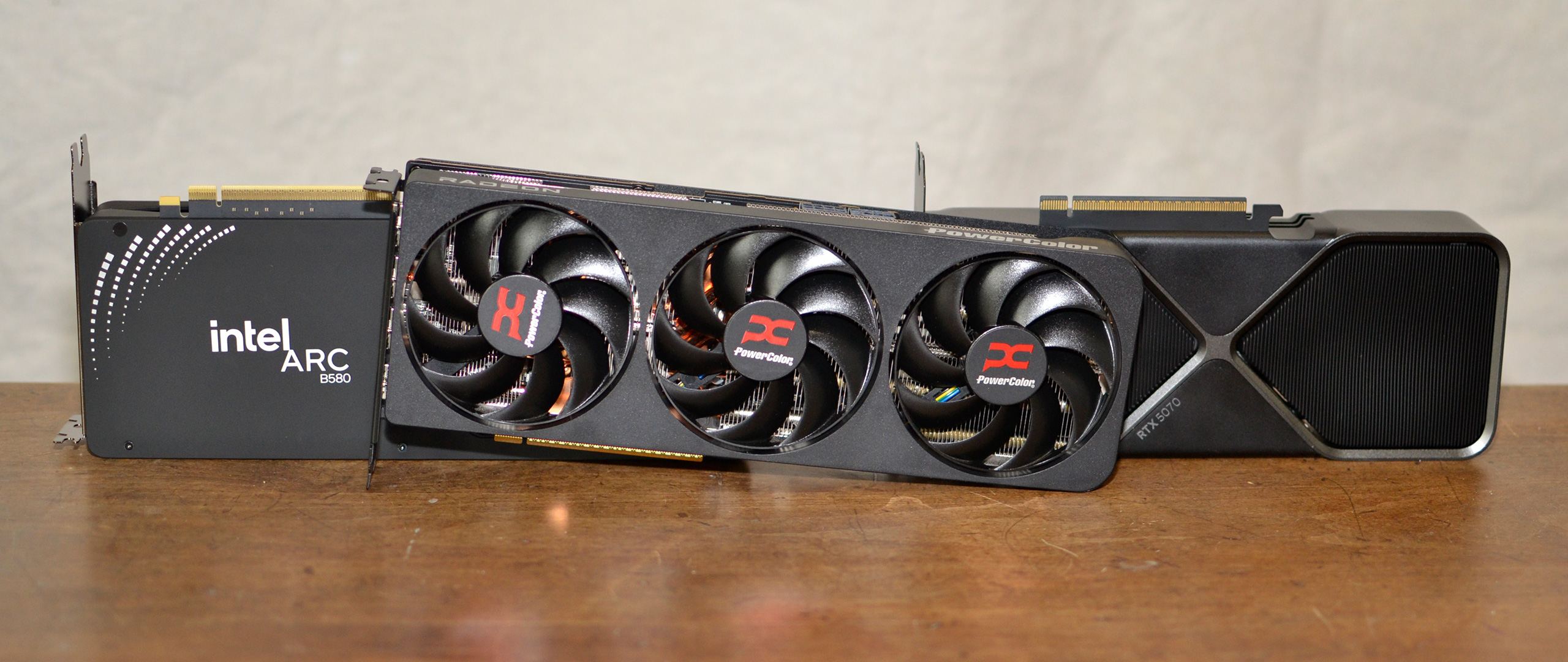
Since our last look at the best GPUs, both AMD and Nvidia have filled out their current generation product stacks even more, and we’ve reviewed all those products and given them our verdict. The RTX 5060 Ti, RTX 5060, and Radeon RX 9060 XT have all launched in their various memory configurations, and that’s made for fierce competition in the more attainable end of the graphics market.
A couple of older-gen GPUs still hang around at the very bottom of the barrel, like the Radeon RX 6600, the GeForce RTX 3050, and the Intel Arc A750, but those products are only likely to hang around until newer products take the torch from them.
We have fully refreshed our list of the best graphics cards. Given current market conditions, we've trimmed down the number of selections and mostly opted for the latest generation products — there's often no sense in paying more for a slower previous-gen part. Everything is fully new for this update.
Nvidia is set to launch the RTX 5050 soon, bringing Blackwell all the way down to the $249 price point, but its early performance numbers don’t look earth-shattering. AMD hasn’t announced any plans for an RX 9050 yet, but it’s not a stretch to imagine one might be in the works. You can still grab an Arc A750 for $200 if you have no other options, but we recently revisited it and found that it’s still a somewhat compromised product.
As for the rest of the market, on-shelf prices range from the usual premiums over MSRP to eye-watering markups that nobody should pay. At least you can still buy most any graphics card from stock at some price point, unlike the worst days of the crypto crunch, where shelves were totally bare and restocks created a mad rush for anything available.
Tariff uncertainty and silicon supply constraints from the AI boom haven’t eased, so outside of isolated sales, we expect these elevated prices to be the state of things for the foreseeable future. If nothing else, that stability makes it easy for us to make confident recommendations. Here goes.
Best graphics cards for gaming, at a glance
Graphics Card | 1080p FPS | 1440p FPS | 4K FPS | Price (MSRP) | Avg. Power |
|---|---|---|---|---|---|
157 | 141.8 | 102 | $3,000 ($2,000) | 394W | |
123.7 | 98.5 | 58.8 | $930 ($750) | 259W | |
118 | 94.1 | 57.0 | $800 ($600) | 280W | |
105.3 | 78.2 | 44.8 | $650 ($550) | 220W | |
82.0 | 59.7 | 33.52 | $490 ($429) | 180W | |
76.6 | 55.7 | 31.2 | $390 ($349) | 160W | |
67.9 | 43.4 | 18.6 | $339 ($299) | 145W | |
56.9 | 33.5 | 13.9 | $260 ($220) | 136W |
Note: We're showing current online prices alongside the official launch MSRPs in the above table, with the GPUs sorted by performance. Retail prices can fluctuate quite a lot right now; the table lists the best we could find at the time of writing.
In general, when discussing pricing, we've tried to use the median of current on-shelf prices, not MSRPs, to evaluate our choices. We think this midpoint is most likely to represent a card with a nice cooler that you can find in stock, not a stripped-down model that's rarely restocked and exists only to hit MSRP.
If you can find a card for less than this median price, it's a better value, and if one is more expensive, you will need to think about whether it's beginning to shadow a more expensive product. For example, an expensive RTX 5070 might approach the cost of a faster Radeon RX 9070 XT, and thus would be a sub-optimal buy.
Also note that the "average power draw" column is the average power across all of our testing for each GPU — so the 5090 in particular uses far less power when it's CPU limited at 1080p, and that skews the overall average down.
The above list shows all the latest generation graphics cards we feel stand out in their segments. We've basically eliminated all but the least expensive last-generation graphics cards. Those parts will be most appealing to potential budget builders, as well as anyone who just needs a modest card to get by until prices come down (which might take a while). If you want to see how all of the current and prior generation GPUs stack up, check our GPU benchmarks hierarchy.
The overall performance ranking incorporates 21 games from our updated test suite, which takes the geometric mean (i.e. equal weighting) for both rasterization and ray tracing games. Note that we are not including any upscaling or frame generation results in the table, which can skew things a lot depending on the selection of games and what "performance enhancing drug" versions are supported.
The short summary: DLSS 4 offers superior image fidelity to other upscaling tech, and its transformer AI model works with cards going all the way back to the RTX 20-series. DLSS 3 and DLSS 2 offer similar upscaling quality, but Nvidia will allow you to force DLSS 4 in some older titles through the Nvidia App utility if you'd like the latest and greatest.
RTX 50-series GPUs are Nvidia's first with support for with multi-frame generation (MFG), which allows Blackwell GPUs to insert three or four AI-generated intermediate frames between each native one. RTX 40-series GPUs also support framegen, but only with a 2X boost.
FSR 4 offers AI-enhanced upscaling, but only for RX 9000-series AMD cards. AMD's FSR 3.1 and earlier upscalers still work on any GPU, but the image quality tends to be noticeably lower.
FSR framegen didn't get an AI enhancement with the move to FSR 4. Its framerate-doubling boost remains cross-compatible with GPUs from all vendors, but its image quality also remains unchanged from prior generations.
Intel XeSS 2 with AI-enhanced frame generation isn't widely supported yet and requires an Arc GPU, while XeSS 1.3.1 upscaling can be superior to FSR 3.x but isn't used in as many games as FSR or DLSS. XeSS Frame Generation, like FSR, only supports a doubling of frame rates at best.
While performance can be an important criteria for a lot of gamers, it's not the only metric that matters. Our subjective rankings below factor in price, power, and features colored by our own years of experience. Others may offer a slightly different take, but all of the cards on this list are worthy of your consideration.
1. Best all-around enthusiast graphics card: Radeon RX 9070 XT, $799.99
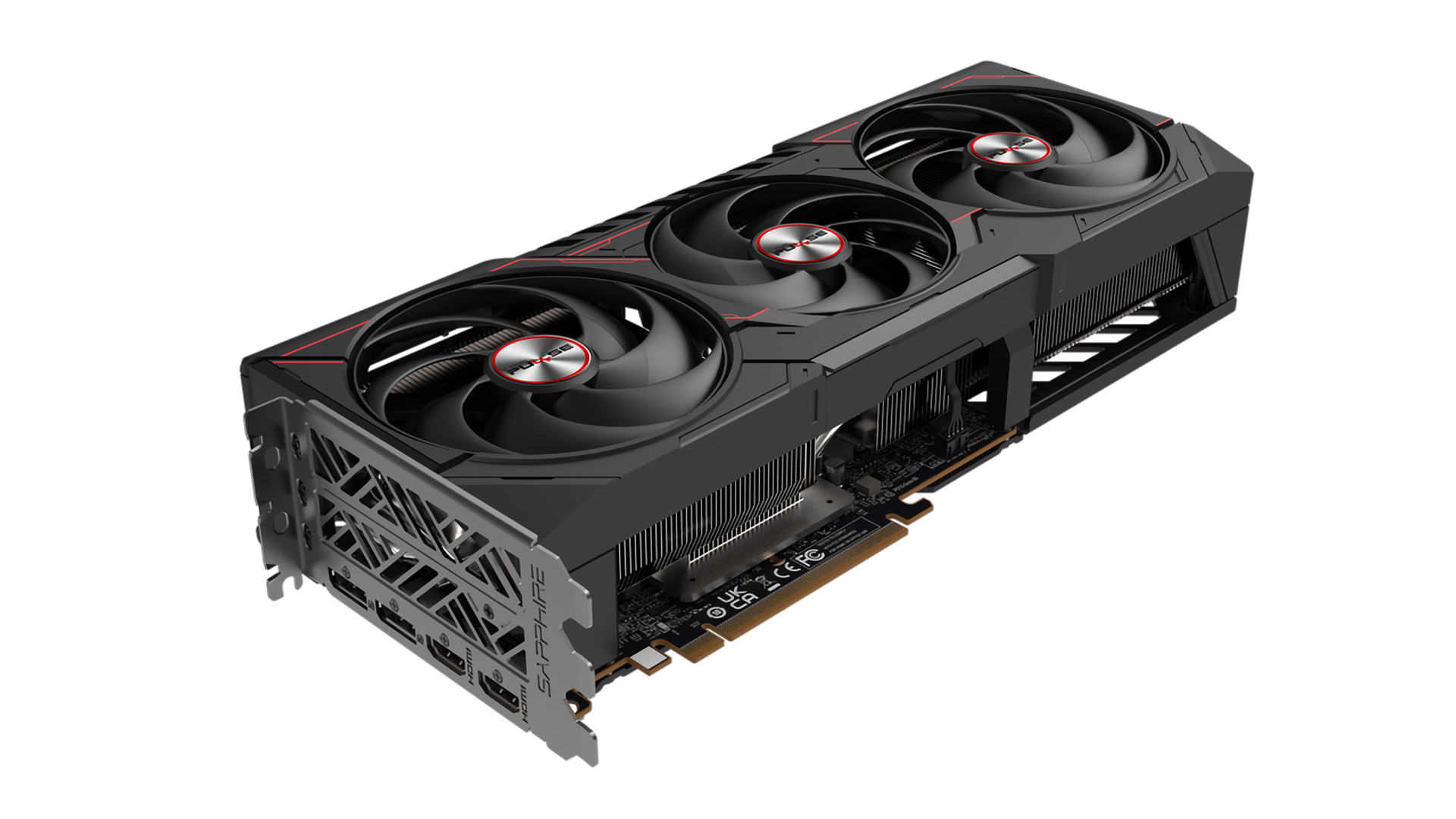
Specifications
Reasons to buy
Reasons to avoid
The Radeon RX 9070 XT is AMD's most well-rounded graphics card in years. Even at today's elevated prices, it delivers raw performance within spitting distance of the GeForce RTX 5070 Ti for much less money.
AMD shored up two of its greatest weaknesses against Nvidia in the past with the RX 9070 XT's RDNA 4 architecture: RT performance and AI acceleration, both of which are now much closer to Nvidia's latest and greatest. And AMD did all that while keeping power efficiency right there with Nvidia, too.
The FSR4 upscaler is a big jump in image quality over FSR 3, and as it rolls out to more and more games, the RX 9070 XT's star will only grow brighter. AMD’s FSR 3 frame generation soldiers on without any AI upgrades, though, and it can still only perform 2X framegen, not the 3X or 4X you get with Nvidia’s MFG.
Whether you're gaming at 1080p, 1440p, or 4K, the 9070 XT has the power to get you there, all for a fairly reasonable price in today's weird world of graphics. We wish more of these cards were selling for closer to AMD’s $599 MSRP, but that’s about all we can complain about with it.
If you can find a GeForce RTX 5070 Ti close to its $749 MSRP, the balance would definitely shift in favor of Nvidia's card, but as the market stands today, the RX 9070 XT offers the best balance of price, performance, and efficiency for enthusiasts who don't have unlimited budgets.
Read: AMD Radeon RX 9070 XT review
2. Best midrange graphics card: GeForce RTX 5070, $649.99
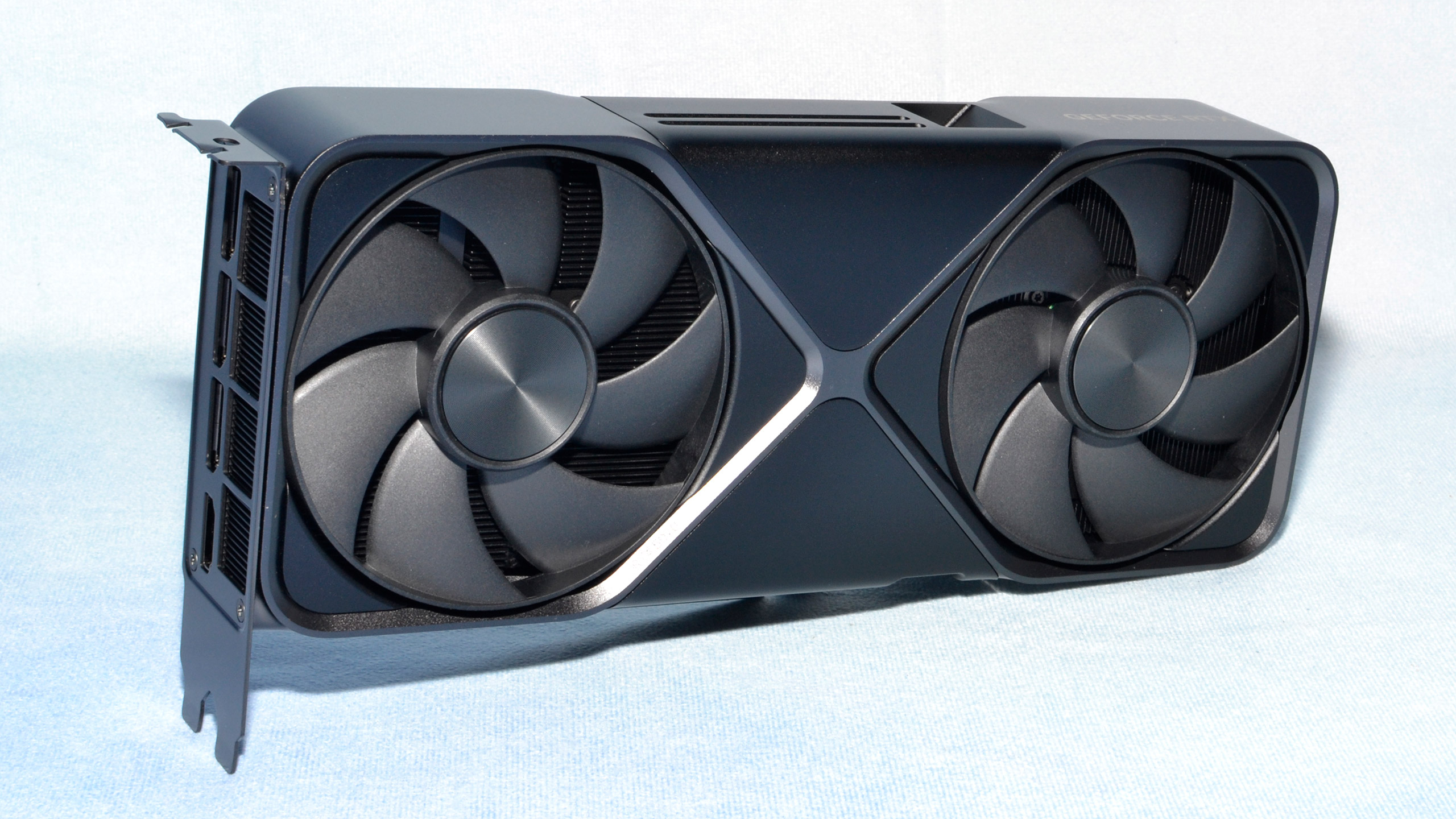
Specifications
Reasons to buy
Reasons to avoid
Unlike the marked-up RTX 5070 Ti and eye-watering RTX 5080, the RTX 5070's prices have stayed within the ballpark of Nvidia's MSRP. It's easy to find one for about the same price as or less than a Radeon RX 9070 goes for right now, making AMD’s second-highest-end RDNA 4 card a harder sell than its XT sibling.
The RTX 5070 brings a strong triple threat to this price point: enough raster and ray-tracing performance at 1440p to natively push high-resolution monitors, plus Nvidia's superior DLSS 4 upscaling and unique multi-frame generation capability. Unlike the pricey RTX 5070 Ti, we think those factors are too compelling to ignore when the RTX 5070 is pitted against the RX 9070, dollar for dollar.
If more RX 9070s sold for closer to AMD’s $549 MSRP, we’d have to give it top billing in this space. But the second-best RDNA 4 card sells for prices that are only a bit lower than the cheapest RX 9070 XT right now, so if you’re already considering a 9070, there’s really no reason to do anything but step up to one of the cheaper RX 9070 XTs out there for a relatively small premium.
By the same logic, we’d also try to stick to the cheaper end of the RTX 5070s, since the 9070 XT is 14% faster than the Nvidia middleweight. $600 RTX 5070s are a far more common sight than $600 RX 9070s, so this isn’t a hard task.
The RTX 5070's 12GB of VRAM means it may have less longevity than the RX 9070 and its 16GB of VRAM, but if you're not trying to push the limits with a 4K monitor or heavy ray-tracing, we think it's an OK tradeoff for now. DLSS 4 upscaling means you can generally get away with lower internal resolutions than other upscalers, too, potentially reducing VRAM pressure even if you do want to target higher output resolutions.
If you want a solid foundation for 1440p gaming and the option to enable all of Nvidia’s DLSS 4 tech at will for a reasonable price, the RTX 5070 is the best way to get there right now.
Read: Nvidia GeForce RTX 5070 review
3. Best enthusiast GeForce RTX Blackwell card: GeForce RTX 5070 Ti, $929.99
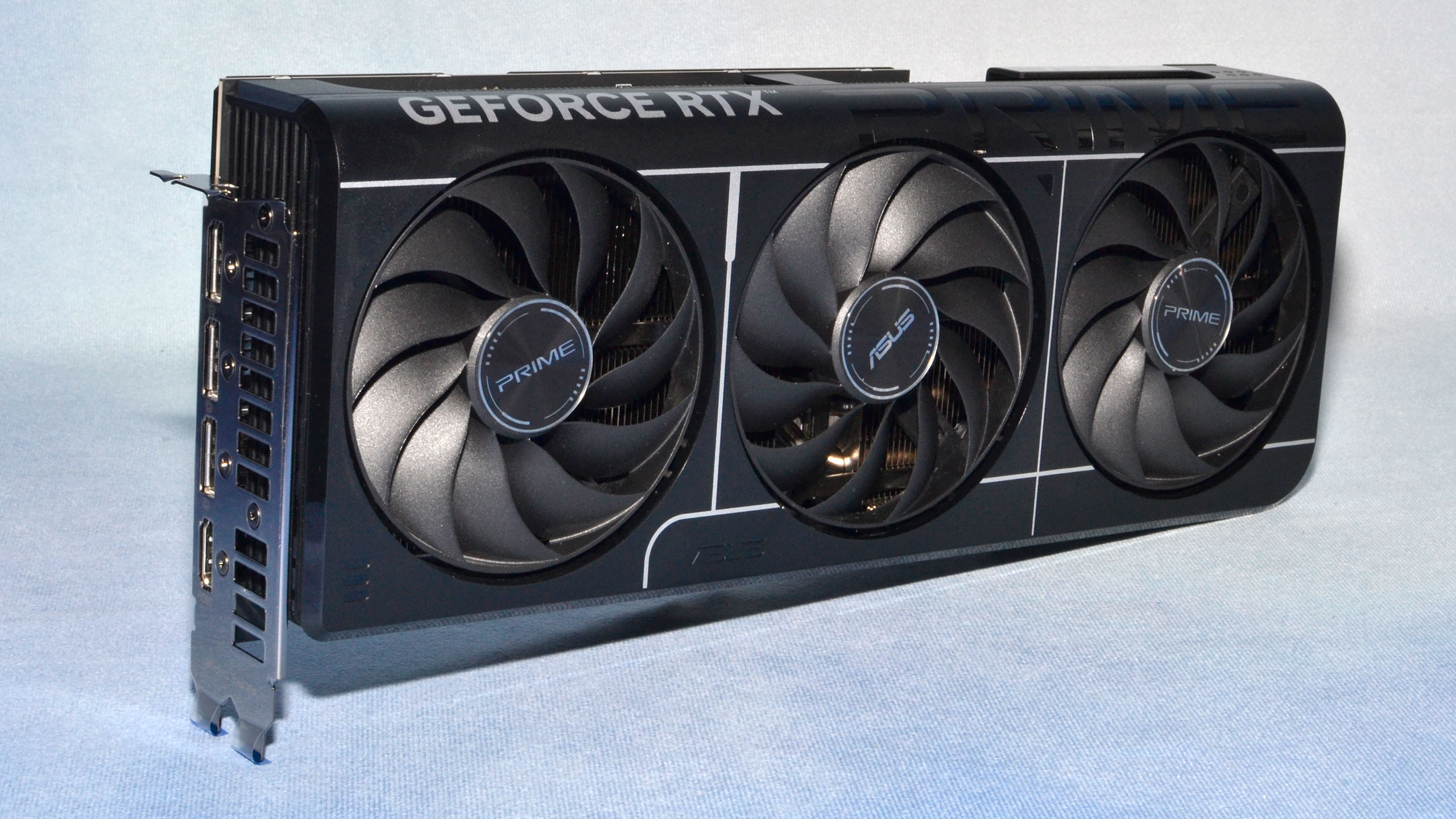
Specifications
Reasons to buy
Reasons to avoid
If you want the best blend of high performance and cutting-edge graphics tech out there, the Nvidia GeForce RTX 5070 Ti is it, with full support for Nvidia’s latest DLSS 4 upscaling and Multi-Frame Generation.
AMD’s closest competitor to the RTX 5070 Ti, the Radeon RX 9070 XT, is cheaper than the RTX 5070 Ti, but the AMD card obviously doesn’t support DLSS 4. For the privilege of those capabilities, you'll need to spend 16% more money for just 5% more performance than AMD’s current best before you turn on MFG, if that's your thing.
We're personally fans of MFG when it's implemented well, and Nvidia's DLSS 4 upscaling is superior to and much more widely adopted than the still-nascent FSR 4, so there are compelling arguments for choosing an RTX 5070 Ti over the Radeon RX 9070 XT. You'll just need to decide whether you can stomach the upcharge.
What about the RTX 5080? Nvidia's second-fastest Blackwell card is anywhere from 8% to 16% faster than the 5070 Ti, with the biggest gap at 4K. It sells for a whopping 50% or more over MSRP at the midpoint of current e-tail prices, where you're most likely to find stock. That's almost 66% more expensive than the midpoint of RTX 5070 Ti prices and a ludicrously poor value proposition.
Unless you're seriously hurting for every last bit of horsepower you can get at 4K short of buying an RTX 5090, we can't recommend the RTX 5080 right now.
Read: Nvidia GeForce RTX 5070 Ti review
4. The best graphics card for dipping into DLSS 4: RTX 5060 Ti 16GB, $489.99
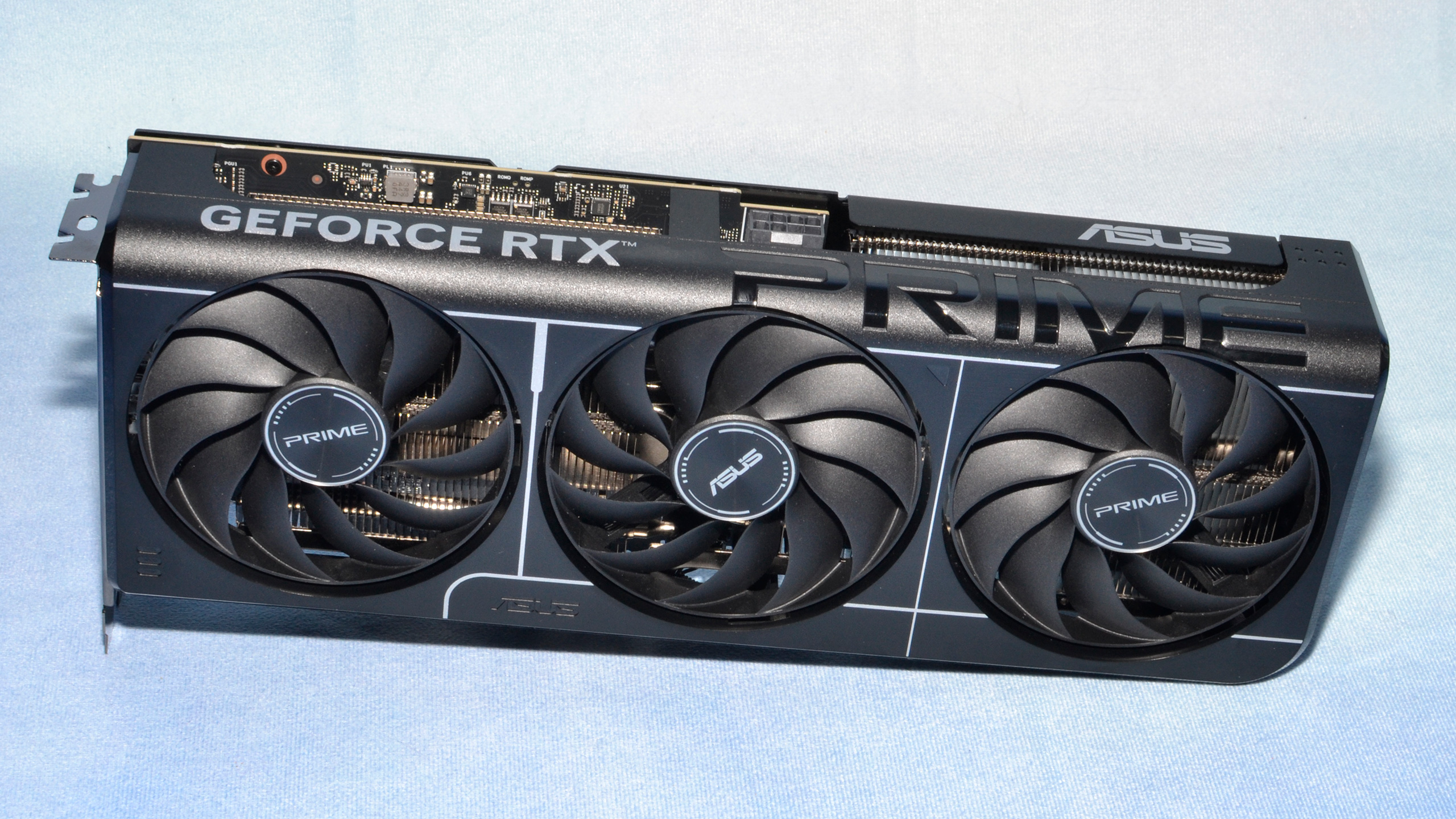
Specifications
Reasons to buy
Reasons to avoid
If an RTX 5070 is too spendy and you absolutely must have access to all that DLSS 4 and MFG can offer, the RTX 5060 Ti is your most attainable option worth buying specifically for that purpose.
The RTX 5060 Ti offers performance about 7-8% faster than the RX 9060 XT 16GB across our full test suite of raster and RT games at 1080p and 1440p, all for about 25% more money than the Radeon. That’s a hefty premium, but the DLSS 4 Transformer upscaling model is the best thing going in this space, and MFG gives you the flexibility to take greater advantage of a high-refresh rate monitor than cards that lack it.
16GB of VRAM on the 5060 Ti means you have all the space you need for both game data and DLSS’s AI models, unlike its 8GB counterpart. And while it’s not a decisive factor, the RTX 5060 Ti 16GB does draw about 10% less power under load than the RX 9060 XT 16GB, so its power efficiency is slightly superior to AMD’s, too.
If you’re not sold on the value of MFG and are less sensitive to the image quality differences between upscalers, $100 is a lot to ask over the Radeon RX 9060 XT, and we’d happily game on AMD’s card all day long.
But if you can’t stomach FSR upscaling, don’t want to wait for FSR 4 to come to more games, or you really want the smoothness boost of Nvidia MFG in titles that support it, the RTX 5060 Ti 16GB is Nvidia’s least expensive way to get there without dipping into considerable compromises.
Read: Nvidia GeForce RTX 5060 Ti 16GB review
5. Best enthusiast value graphics card: Radeon RX 9060 XT 16GB, $389.99
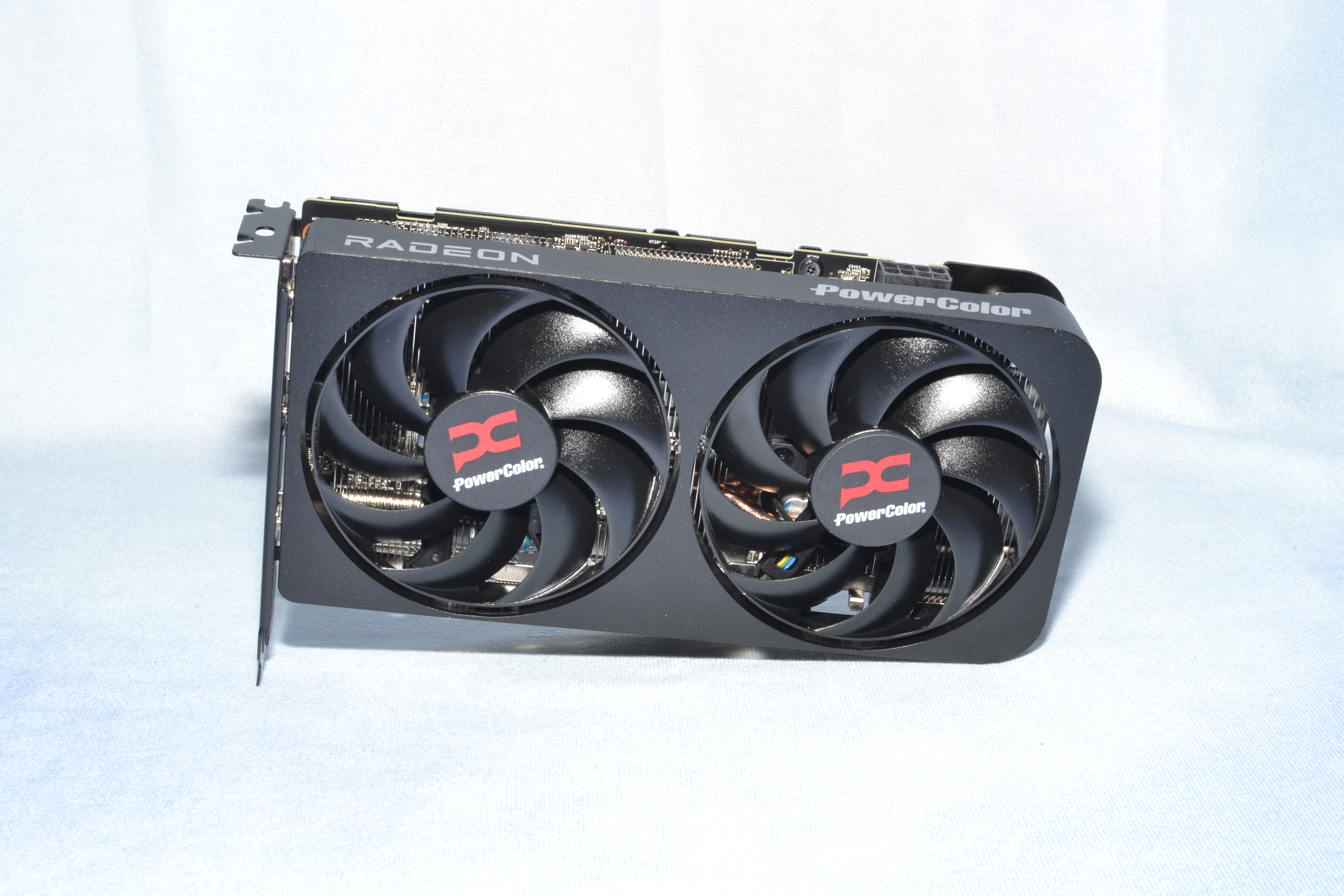
Specifications
Reasons to buy
Reasons to avoid
AMD's Radeon RX 9060 XT 16GB can handle basically anything the mainstream gamer can throw at it at 1920x1080 and 2560x1440.
The RX 9060 XT enjoys the much-improved ray-tracing and AI performance of the RDNA 4 architecture, both of which bring Radeons a lot closer to the latest Nvidia competition. And its 16GB of VRAM gives mainstream gamers the assurance they'll basically never find VRAM a bottleneck in modern games at 1080p and 1440p resolutions.
Like the RX 9070 XT, the 9060 XT 16GB gives you access to AMD's much-improved FSR 4 upscaling tech, allowing you to boost performance with a small hit to image quality in the small but growing list of titles that support it. FSR Frame Generation, however, remains limited to a doubling of output frame rate at best, so it’s not a direct competitor to Nvidia’s DLSS 4 with MFG.
The RTX 5060 Ti 8GB is the RX 9060 XT 16GB's closest competition, dollar for dollar, but we can’t recommend it at all. If you're spending over $350 on a GPU, we don't think you should have to fine-tune every setting to avoid running out of VRAM. The RX 9060 XT is easy to live with for a wide range of gamers in a wide range of games, all for a reasonable price, and that’s why it won our Editor’s Choice award.
Read: AMD Radeon RX 9060 XT 16GB review
6. The best $300(ish) graphics card: Nvidia GeForce RTX 5060 $339.99
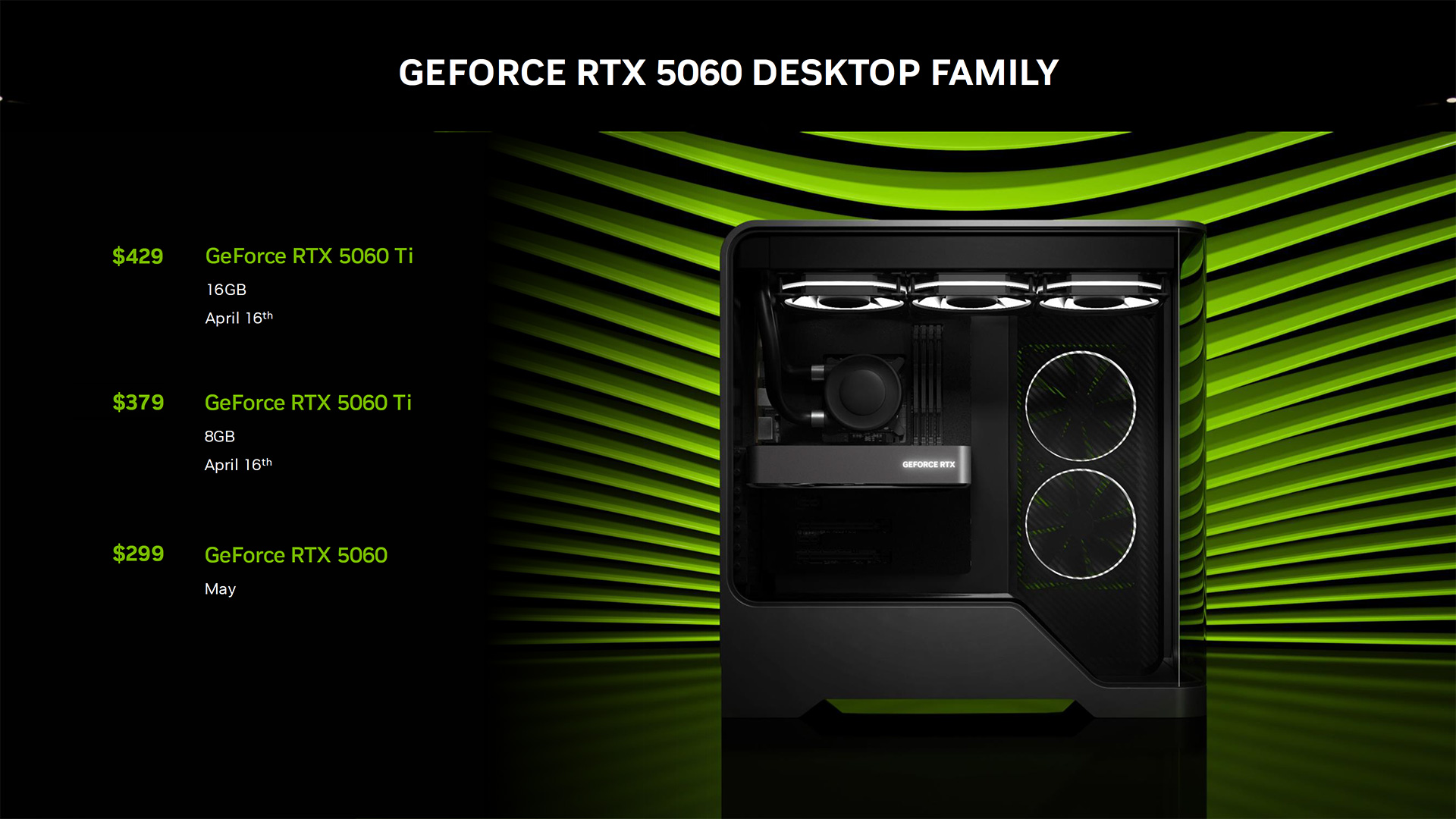
6. Nvidia GeForce RTX 5060
Specifications
The lower end of the graphics card market isn't a great place to shop for the budget-constrained gamer right now, but if you absolutely can't spend more than $300 or so and want to get your PC game on at 1080p, we think the RTX 5060 is your best bet. The midpoint of RTX 5060 prices is around $340, but it's so easy to find these cards for their $299.99 MSRP that we wouldn't look at anything pricier for even a second.
The RTX 5060 has solid enough baseline performance for 1080p gaming before you turn on DLSS and potentially MFG, and access to the image quality of the DLSS 4 upscaler is a big bonus in this segment. If you can tune your settings right, enabling MFG could make for an even smoother ride on this card.
The downside is that you'll always be thinking of the 8GB of VRAM on the RTX 5060 when sizing up more demanding games even today, so every cent you can spend over $300 makes this card less appealing. If you can wait and save, the Radeon RX 9060 XT 16GB is more capable across a broader range of settings and resolutions than the RTX 5060. It's well worth the extra money.
Intel's Arc B580 offers more VRAM than the RTX 5060 for around the same price, but if you're only gaming at 1920x1080, we don't think the massive amount of performance you lose upfront is worth it for the insurance. We'd sooner tune DLSS upscaling and relax some in-game settings to maintain the RTX 5060's high performance. And the Radeon RX 9060 XT 8GB suffers from the same potential pitfalls as the RTX 5060 without any of its DLSS upsides, so we’d skip it.
Read: Full Benchmark Testing and Results
7. The best graphics card, period: GeForce RTX 5090, $3000
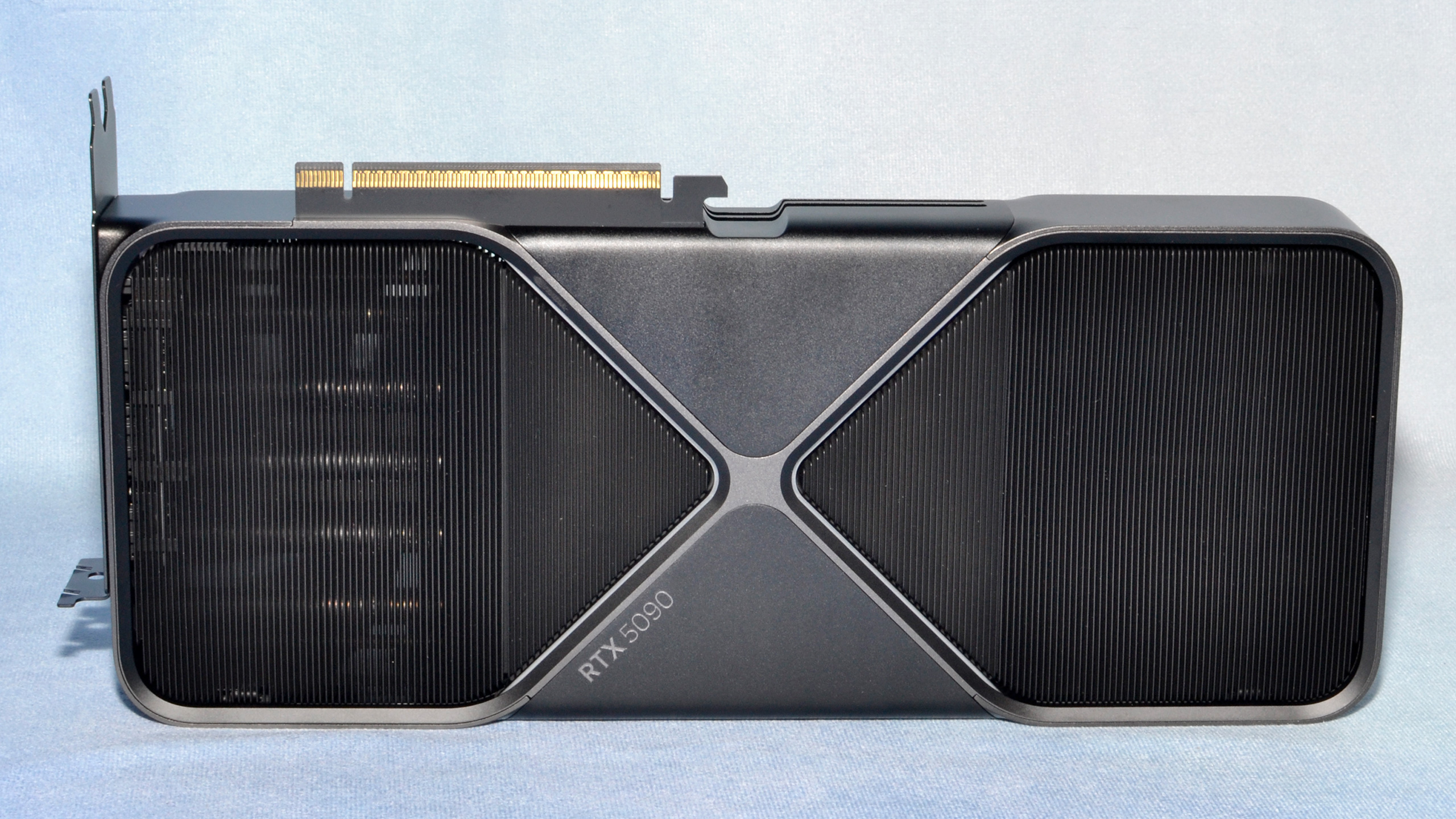
Specifications
Reasons to buy
Reasons to avoid
There's nothing else like the GeForce RTX 5090. There's practically nothing it can't do for the modern gamer at any setting or display resolution. If you want to turn on every bell and whistle in modern games at 4K (or beyond), the RTX 5090's sheer shader horsepower, along with support for Nvidia's DLSS 4 upscaling and multi-frame generation, lets you tune your gaming experience to perfection even on high-refresh-rate 4K displays.
If you're a hardcore PC gamer who demands only the best, the hair will stand up on the back of your neck when you watch the RTX 5090 breeze through workloads that other graphics cards leak out all their thermal gel about.
At its $3000-ish street price today, an RTX 5090 is an indulgence of the highest order, but without a compelling AMD alternative even on the horizon, considerations of value don't really apply in this segment.
This card needs a system with a massive power supply, one of our best gaming CPUs, and a top-shelf monitor to take full advantage of its astounding capabilities, and all those spendy components add up. But if you're shopping for a graphics card of this caliber, you probably don't need us to tell you all that.
If Nvidia and its industry partners fixed the meltdown-prone ATX12V-2x6 connector, the RTX 5090 would be as close to gaming perfection as any graphics card that's ever been made. Guess that's something to improve on the RTX 6090.
Read: Nvidia GeForce RTX 5090 Founders Edition review
8. The best budget graphics card: Intel Arc B570, $259
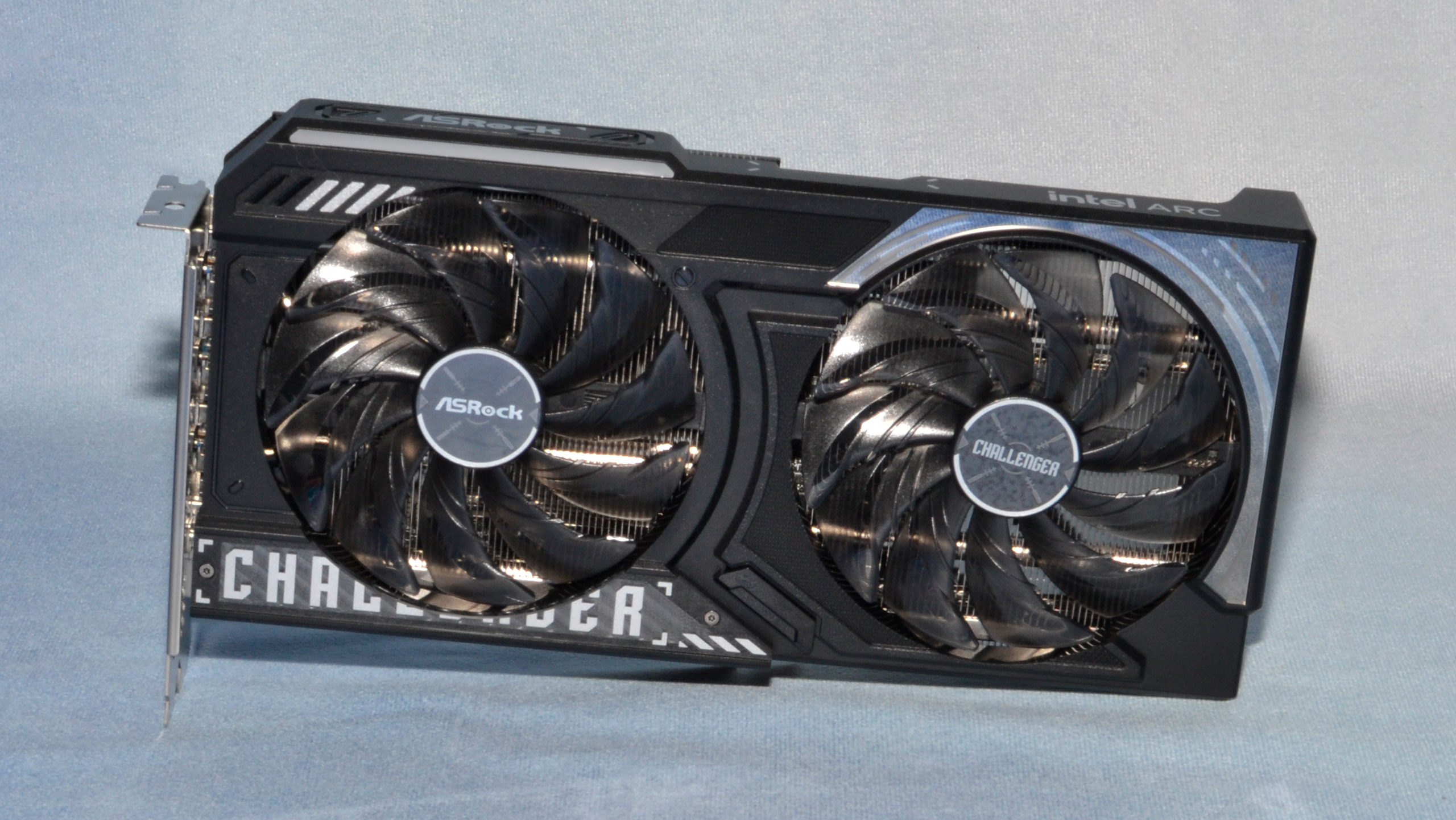
Specifications
Reasons to buy
Reasons to avoid
If even $300 is too much for a new GPU with a warranty in your parts list, you're hard up for options. Nvidia and AMD have sorely neglected this price point (and the upcoming RTX 5050 doesn't seem poised to change that much). The daring might have considered an Arc A750 for $200 until recently, but stock of those cards appears to have dried up, and the ancient GeForce RTX 3050 and Radeon RX 6600 are hard to recommend.
Intel tried to give budget gamers a lifeline with the Arc B570 at $219, but on-shelf pricing for both Arc B-series cards has always been far above Intel's promised stickers. Prices for the B570 are finally starting to creep downward, though, to the point that it's worth a serious look in the sub-$300 range.
If you can't even stretch your budget up to an RTX 5060, the B570 is... fine. 10 GB of VRAM means that you're less likely to end up tanking performance by slamming in-game sliders to ultra at 1080p. Stick to high settings, and this card should deliver a solid 60 FPS average in most games at 1080p. Its modest power requirements won't strain a cheap or aged PSU, and it runs cool and quiet.
Intel's Xe2 graphics architecture has everything you'd want for modern games, including credible RT support, XMX AI accelerators for XeSS upscaling and frame generation, and a modern media engine. The B570 is a modern graphics card through and through, just not a particularly powerful one.
Perhaps the biggest tragedy of the B570 is that Intel has the necessary weapon to make the B570 a smoother operator in its software arsenal with Xe Frame Generation, but it's not being adopted with any urgency. XeSS 2 is in a mere 19 titles, not nearly enough to pull buyers toward the B570.
It's not clear how much of a budget Intel is piping to developer relations amid its current zeal for cutting costs, but software can move much faster than hardware, and we think it would be money well spent to convince more studios to implement XeSS 2 wherever possible.
For now, though, buyers will have to contend with settings tweaks and XeSS upscaling to get the most out of the B570. That's not a bad thing, to be clear, as Intel's upscaler tends to deliver much better results than AMD's FSR 3.x and earlier attempts, and it's in enough major games that you might actually see it in settings lists.
Read: Intel Arc B570 review
How we test the best graphics cards
Determining pure graphics card performance is best done by eliminating all other bottlenecks — as much as possible, at least. To that end, our updated 2025 graphics card testbed consists of an AMD Ryzen 7 9800X3D CPU, ASRock X670E Taichi motherboard, 32GB G.Skill DDR5-6000 CL28 memory, Crucial T700 4TB SSD, Corsair HX1500i Platinum PSU, and a Cooler Master 280mm CPU cooler. The newer Ryzen 9 9950X3D might be slightly faster in some cases, but otherwise we've got just about the fastest components available so that our focus can be on the graphics cards.
We test across the three most common gaming resolutions, 1080p, 1440p, and 4K, using 'medium' and 'ultra' settings at 1080p and 'ultra' at 1440p and 4K. Where possible, we use 'reference' cards for all of these tests, like Nvidia's Founders Edition models and AMD's reference designs. Most midrange and lower GPUs do not have reference models, however, and in some cases we only have factory overclocked cards for testing. We do our best to select cards that are close to the reference specs in such cases.
For each graphics card, we follow the same testing procedure. We run one pass of each benchmark to "warm up" the GPU after launching the game, then run at least two passes at each setting/resolution combination. If the two runs are basically identical (within 0.5% or less difference), we use the faster of the two runs. If there's more than a small difference, we run the test at least twice more to determine what "normal" performance is supposed to be.
We also look at all the data and check for anomalies, so for example we expect the RTX 5080 to be faster than the RTX 5070 Ti; if it's not, and we're not in a CPU limited situation, we'll recheck both cards. (We did drop several games from our initial test suite after determining there was too much variability between tests, due to things like dynamic weather and time of day.)
Due to the length of time required for testing each GPU, updated drivers and game patches inevitably come out that can impact performance. We periodically retest a few sample cards to verify our results are still valid, and if not, we go through and retest the affected game(s) and GPU(s). We may also add games to our test suite over time, if one comes out that is popular and conducive to testing — see our what makes a good game benchmark for our selection criteria.
Best graphics cards performance results
Our updated test suite of games consists of 18 games at present, four of which have ray tracing enabled (seven of the games support DXR, but we only turn it on in cases where we feel the visual upgrades are worthwhile). The other 14 games are run in pure rasterization mode, whether or not they support ray tracing.
We also test everything without any upscaling or frame generation technologies. The difficulty with both upscaling and frame generation is that they're not universally supported, and the resulting image quality can vary quite a lot between the various algorithms. But if you want a quick and dirty summary: DLSS wins on image quality, with DLSS 4 offering enhanced upscaling and framegen support. FSR 3 gets more of a performance uplift from framegen but often looks more like bad interpolation; 3.1 mostly fixes that but isn't supported in as many games, while FSR 4 requires a 9070 card and seems to offer comparable image fidelity to DLSS 2. XeSS 1.3 and later are also comparable to DLSS 2/3 but aren't as widely supported.
The data in the following charts is from testing conducted during the past several months. We've tested all of the latest GPUs at every resolution and setting, even where it generally doesn't make sense (e.g. 4K with ray tracing at single digit framerates). For each resolution and setting, the first chart shows the geometric mean (i.e. equal weighting) for all tested games. The second chart shows performance in the 14 rasterization games, and the third chart focuses in on ray tracing performance in four games. Then we have the 18 individual game charts, for those who like to see all the data.
The charts below contain all the current Nvidia RTX 50-series, AMD RX 9000-series, and Intel Arc B-series graphics cards, plus a few prior generation cards that are still worth considering. Our GPU benchmarks hierarchy contains additional data for other tested GPUs if you want to see that. The charts are color coded with AMD in red, Nvidia in blue, and Intel in gray to make it easier to see what's going on.
The following charts are up to date as of March 28, 2025. Additional GPUs will be tested and added as needed.
Best Graphics Cards — 1080p Medium
Why you can trust Tom's Hardware
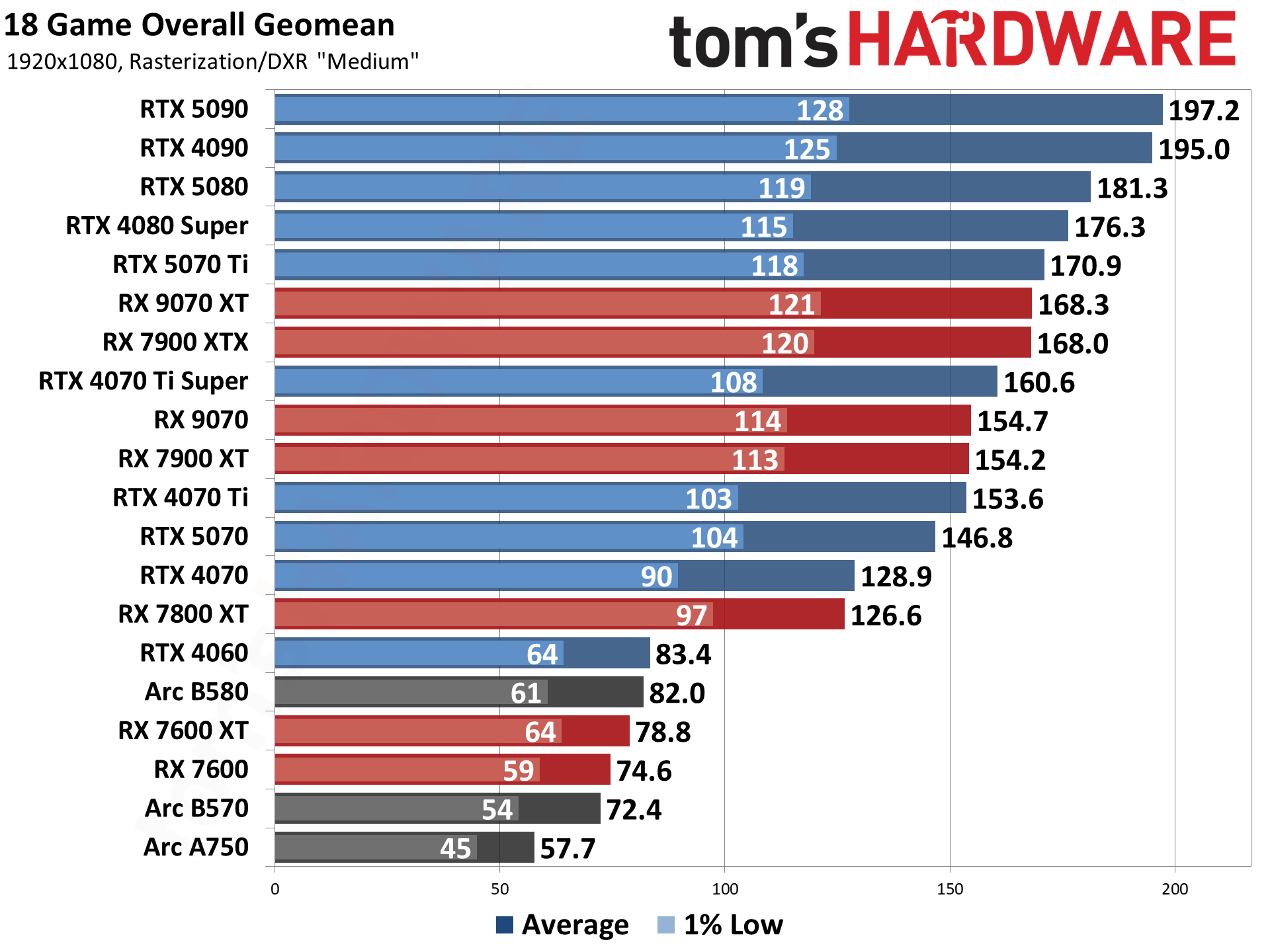
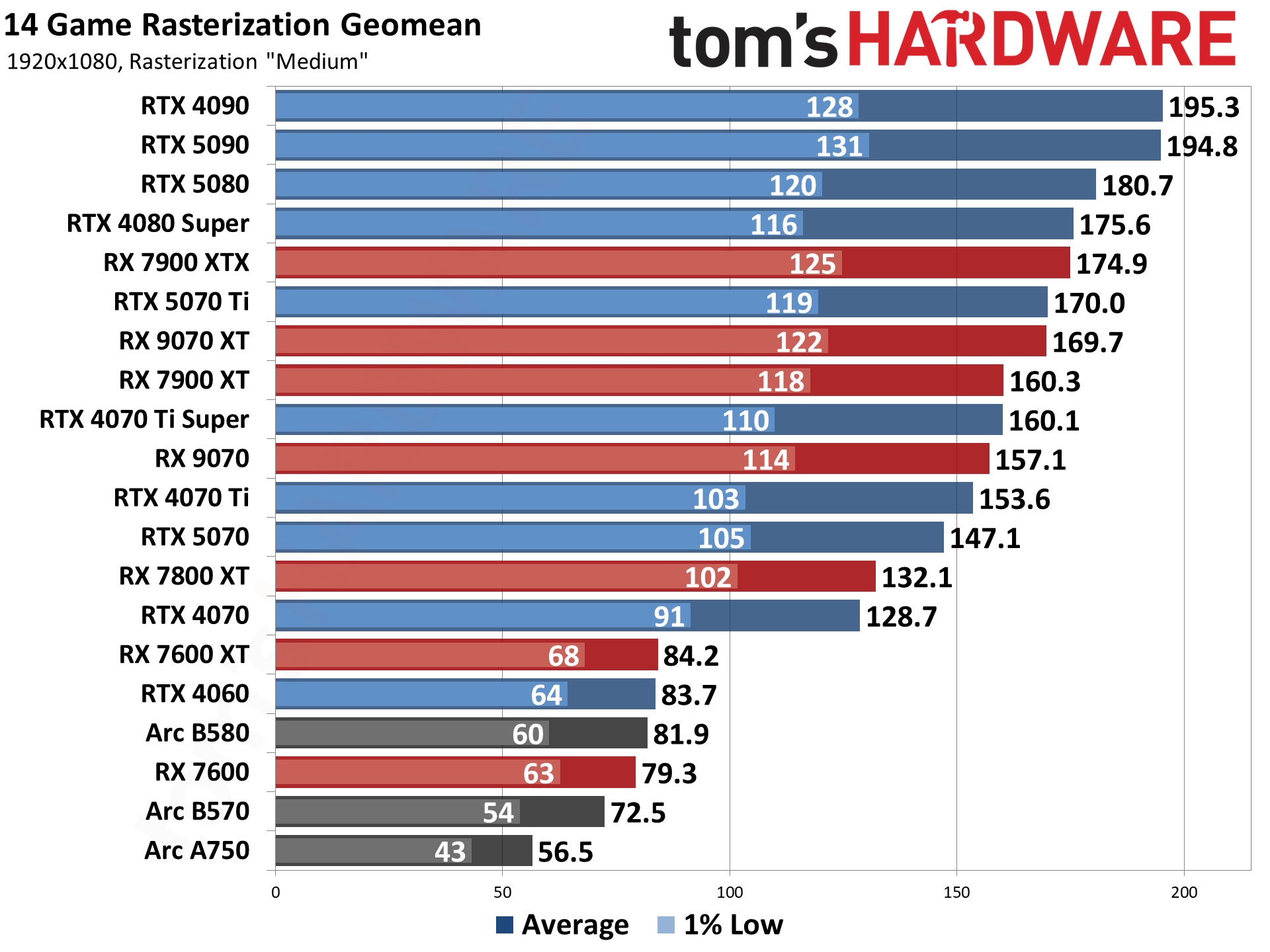
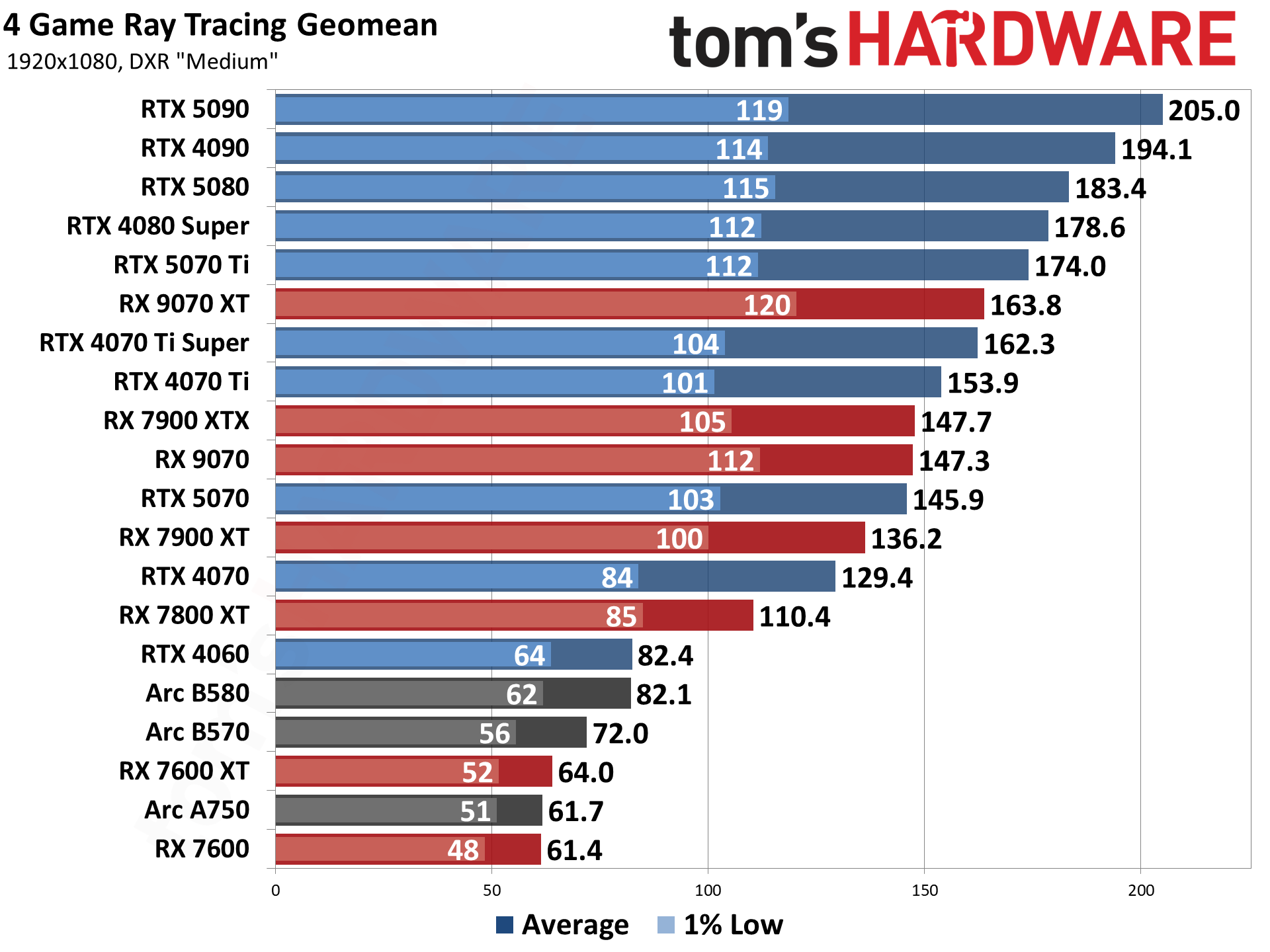
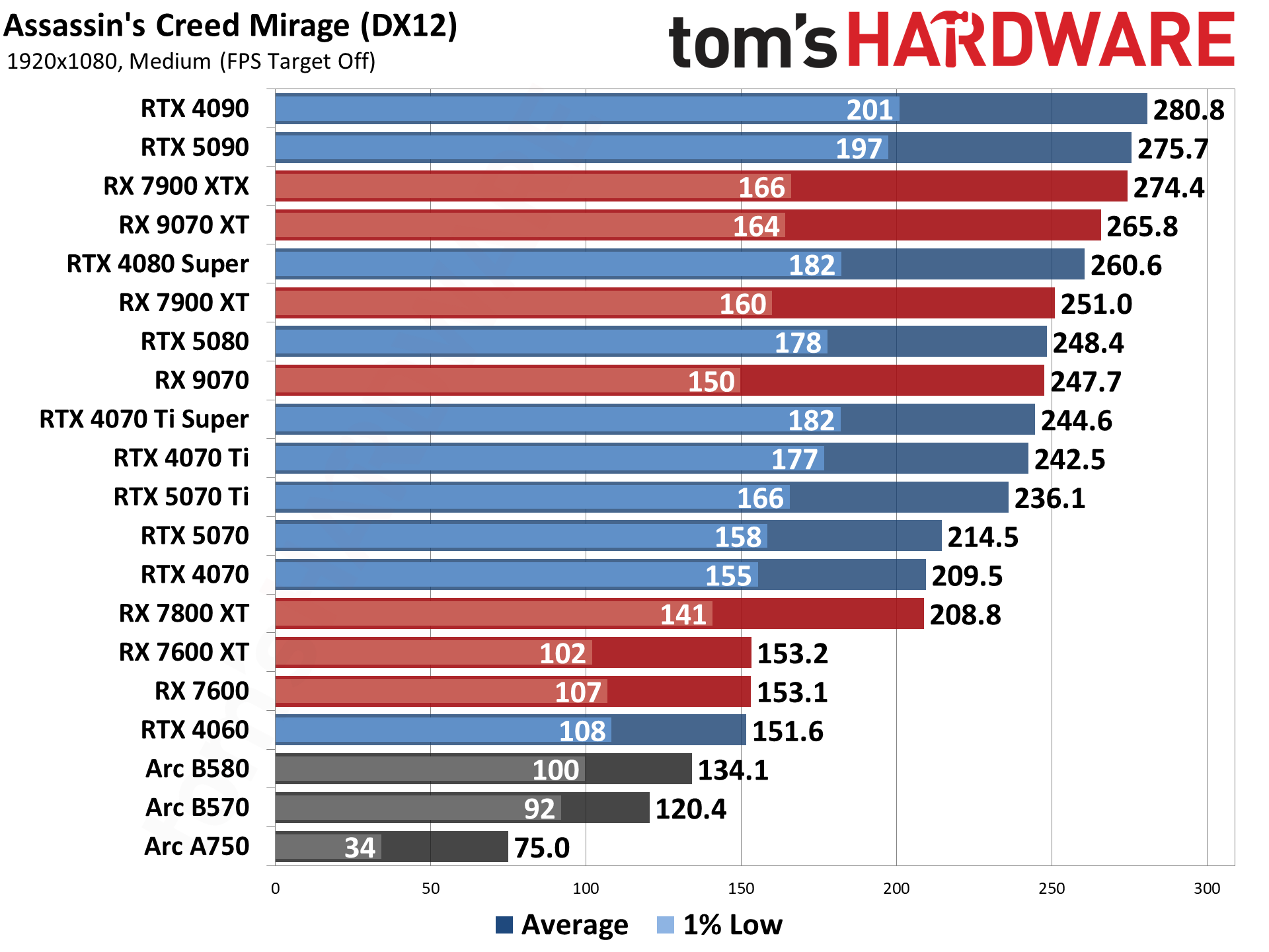
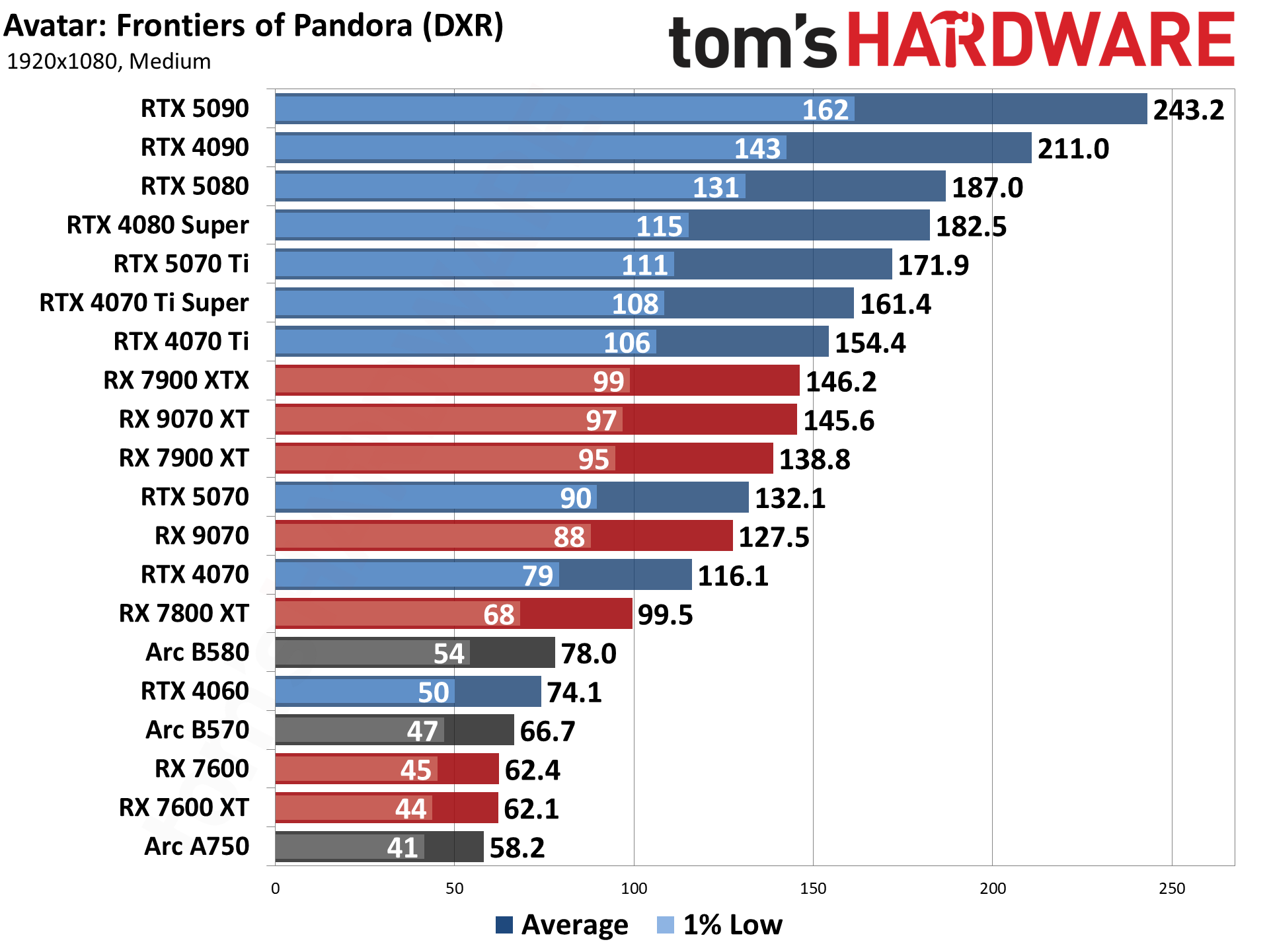
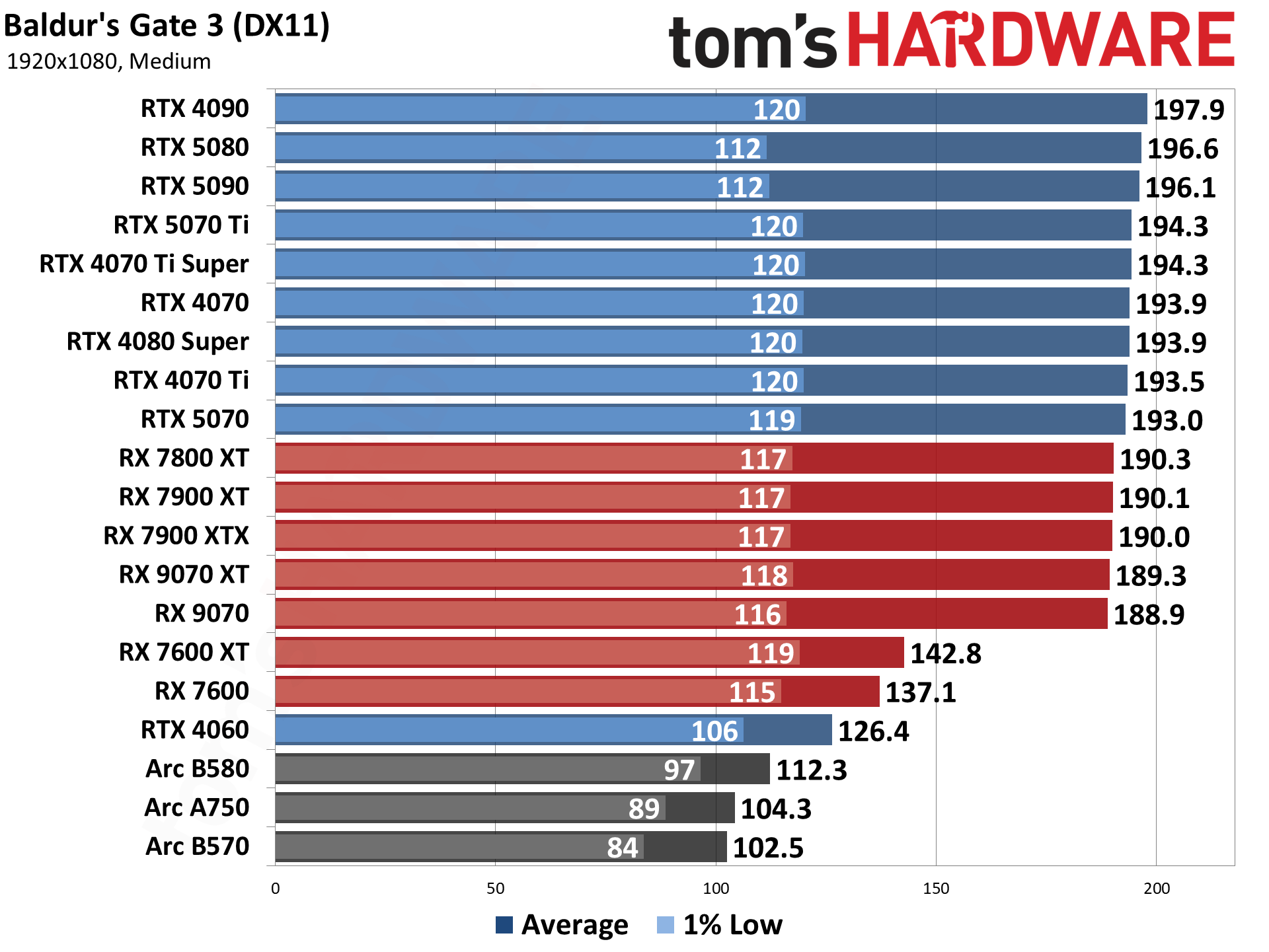
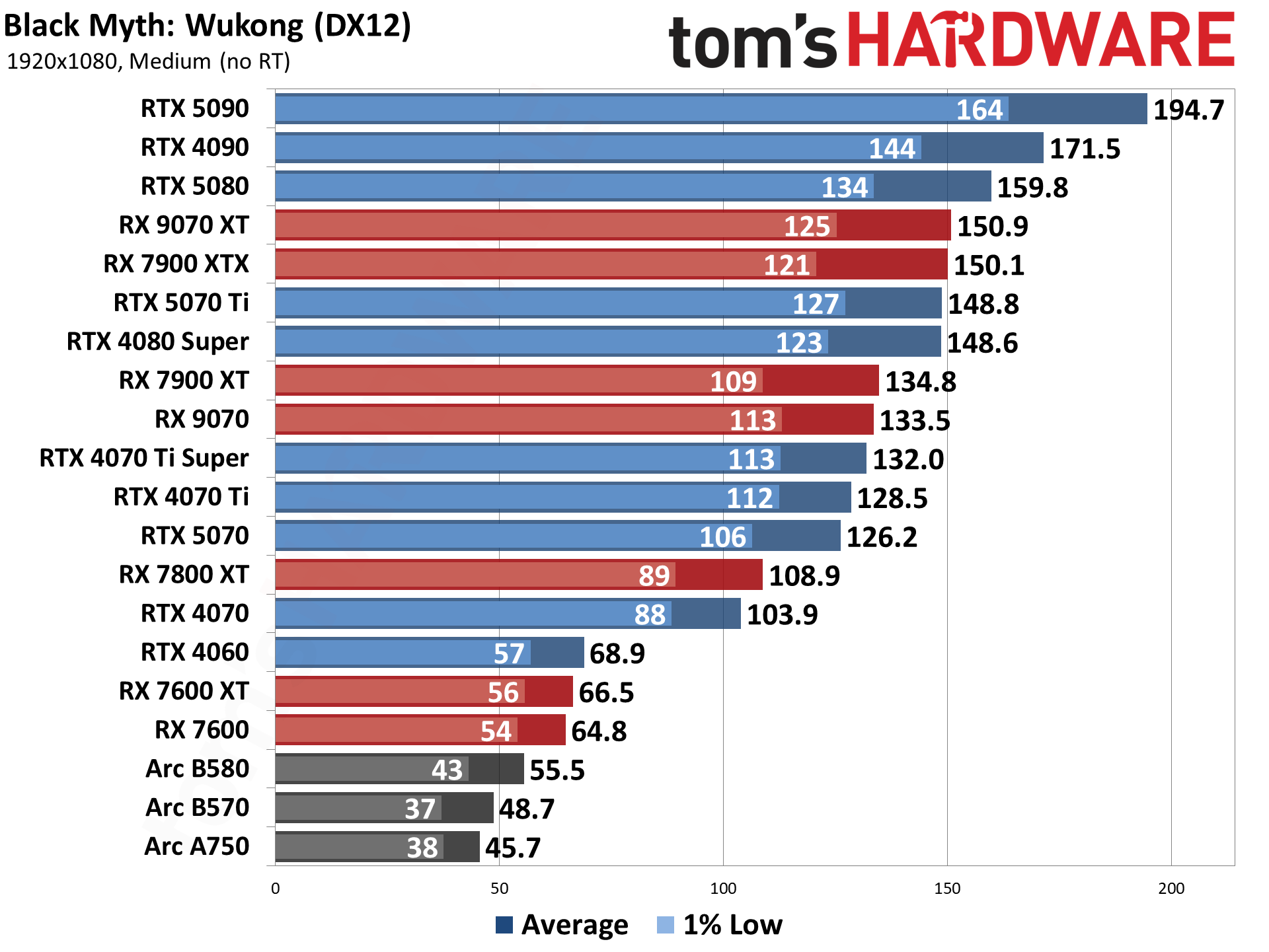
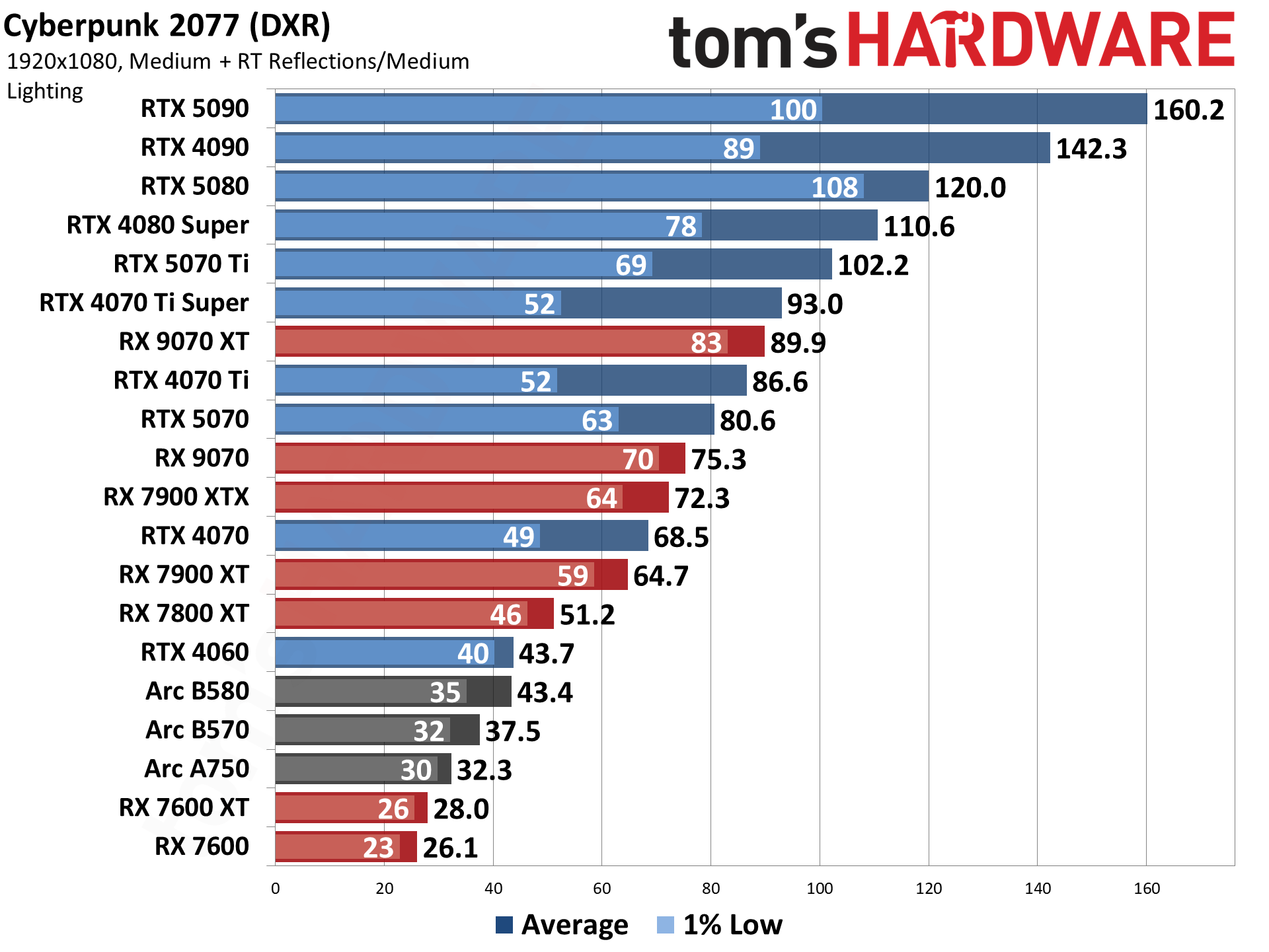
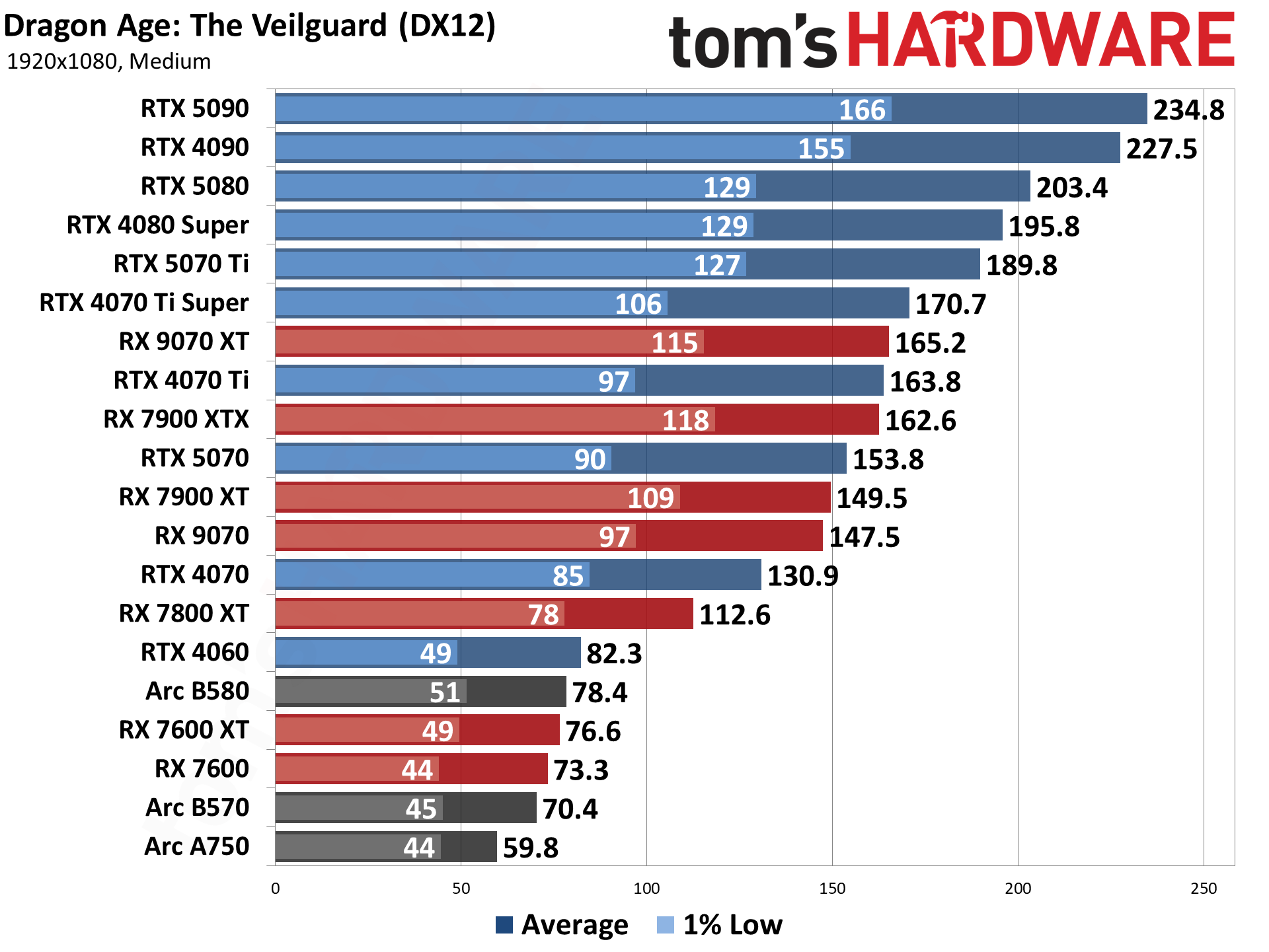

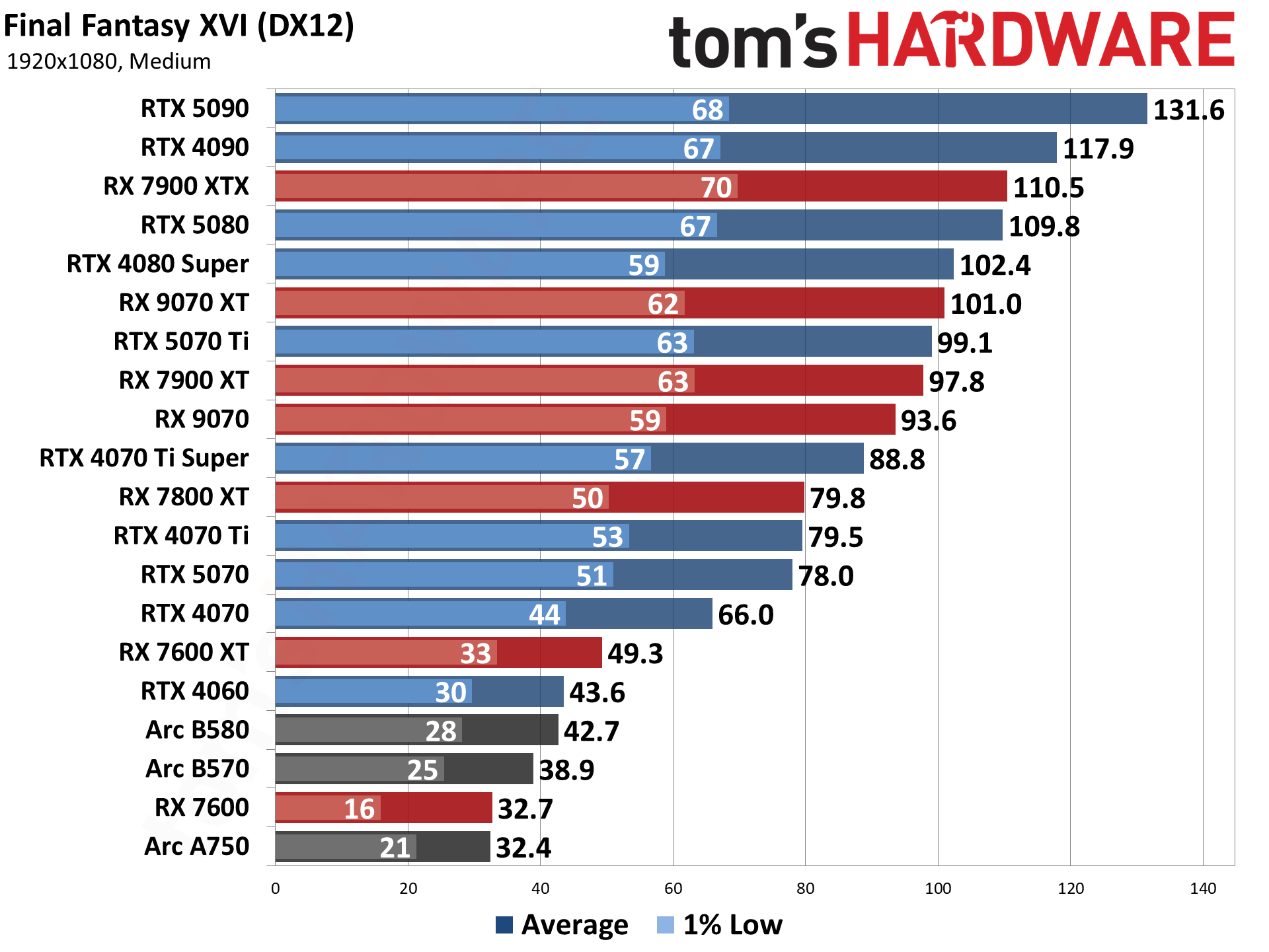
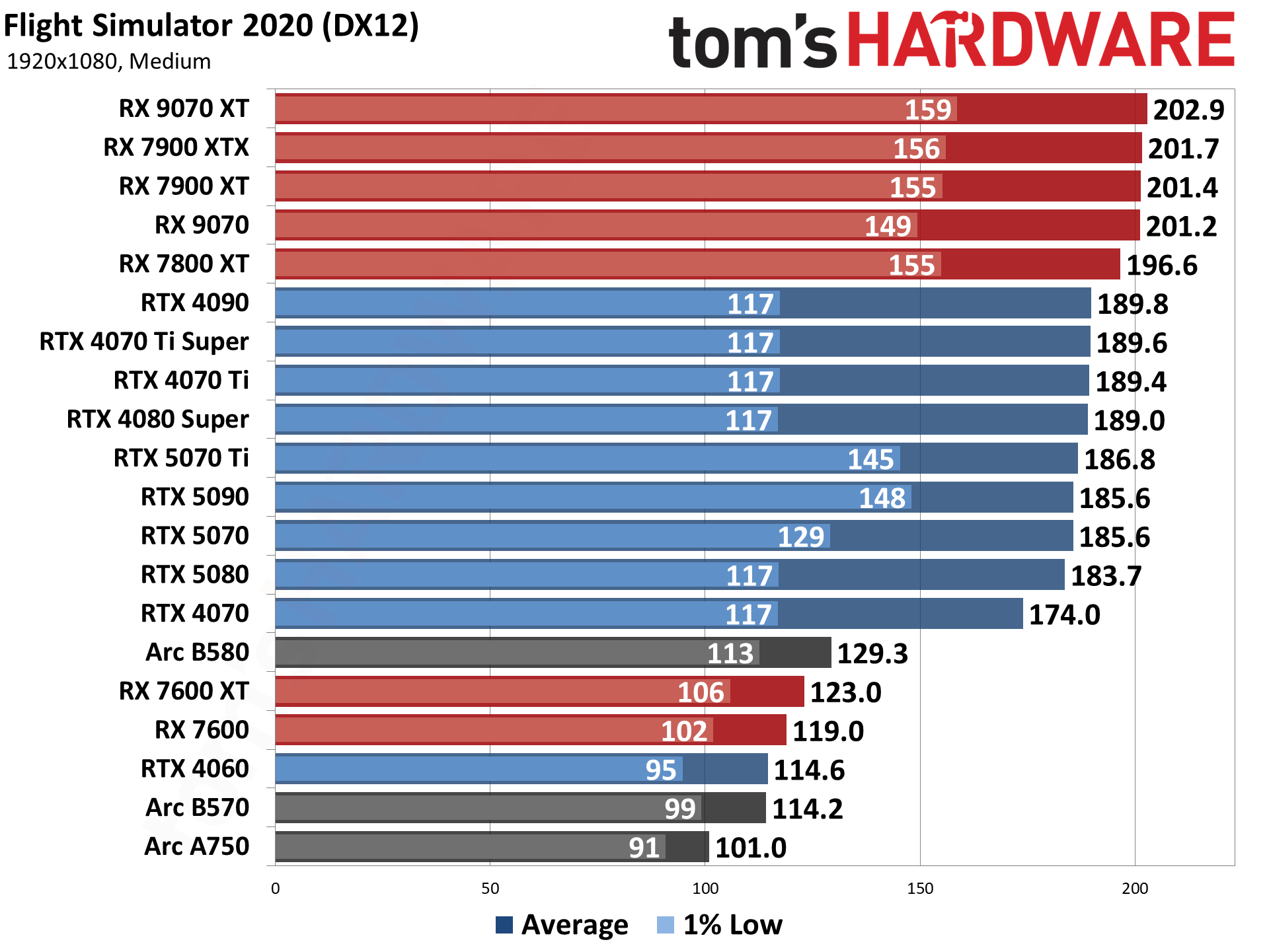

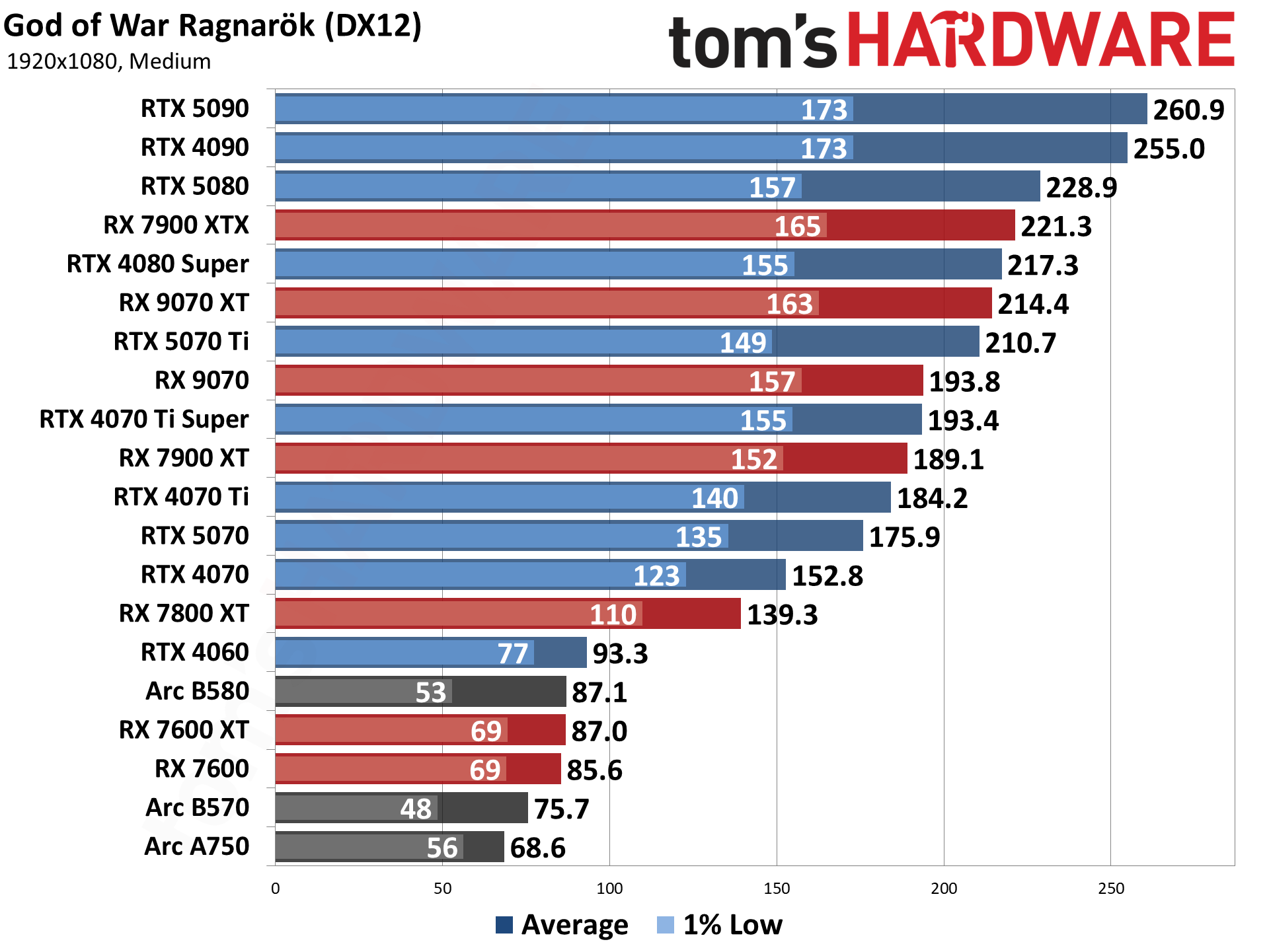
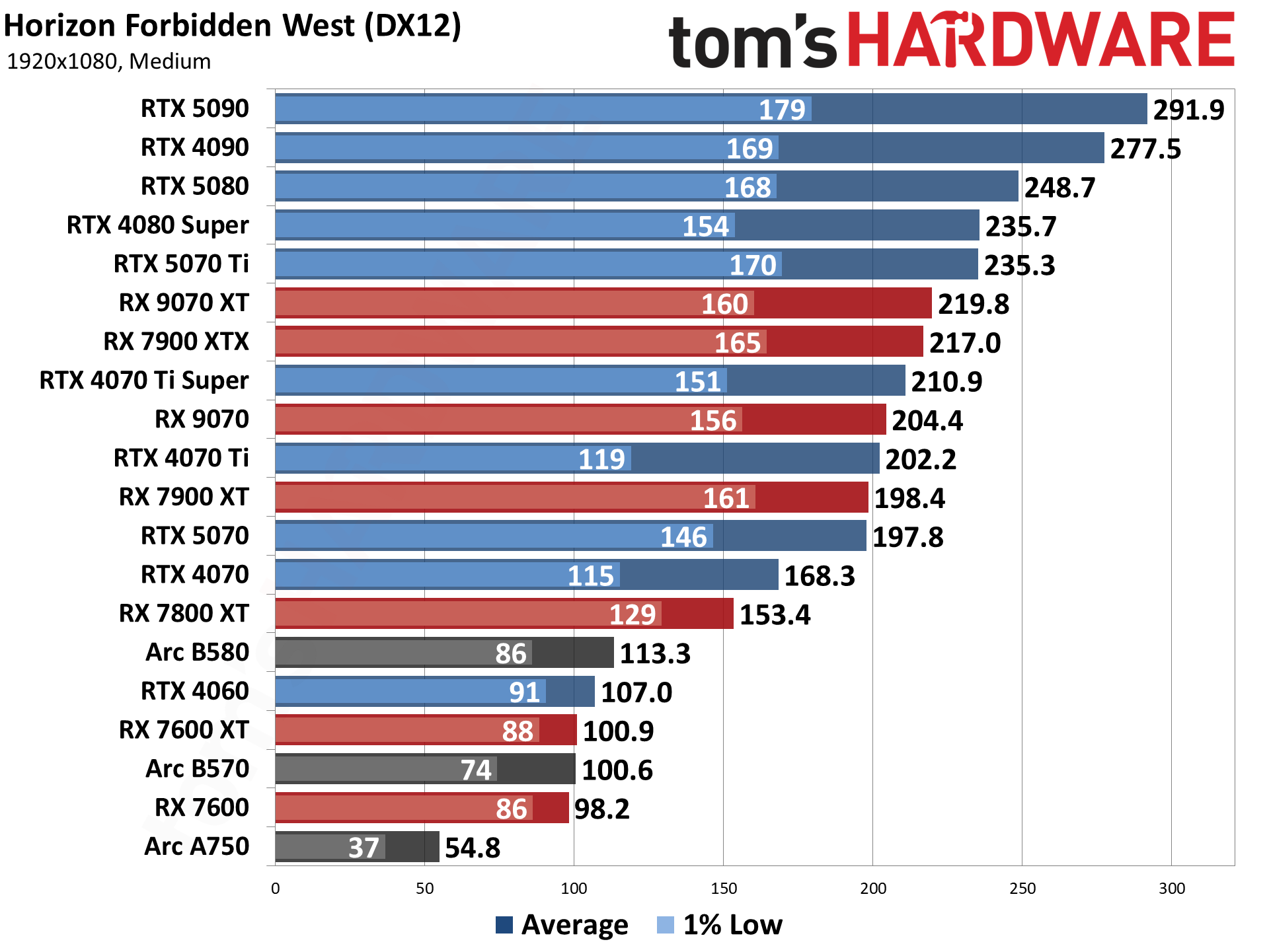
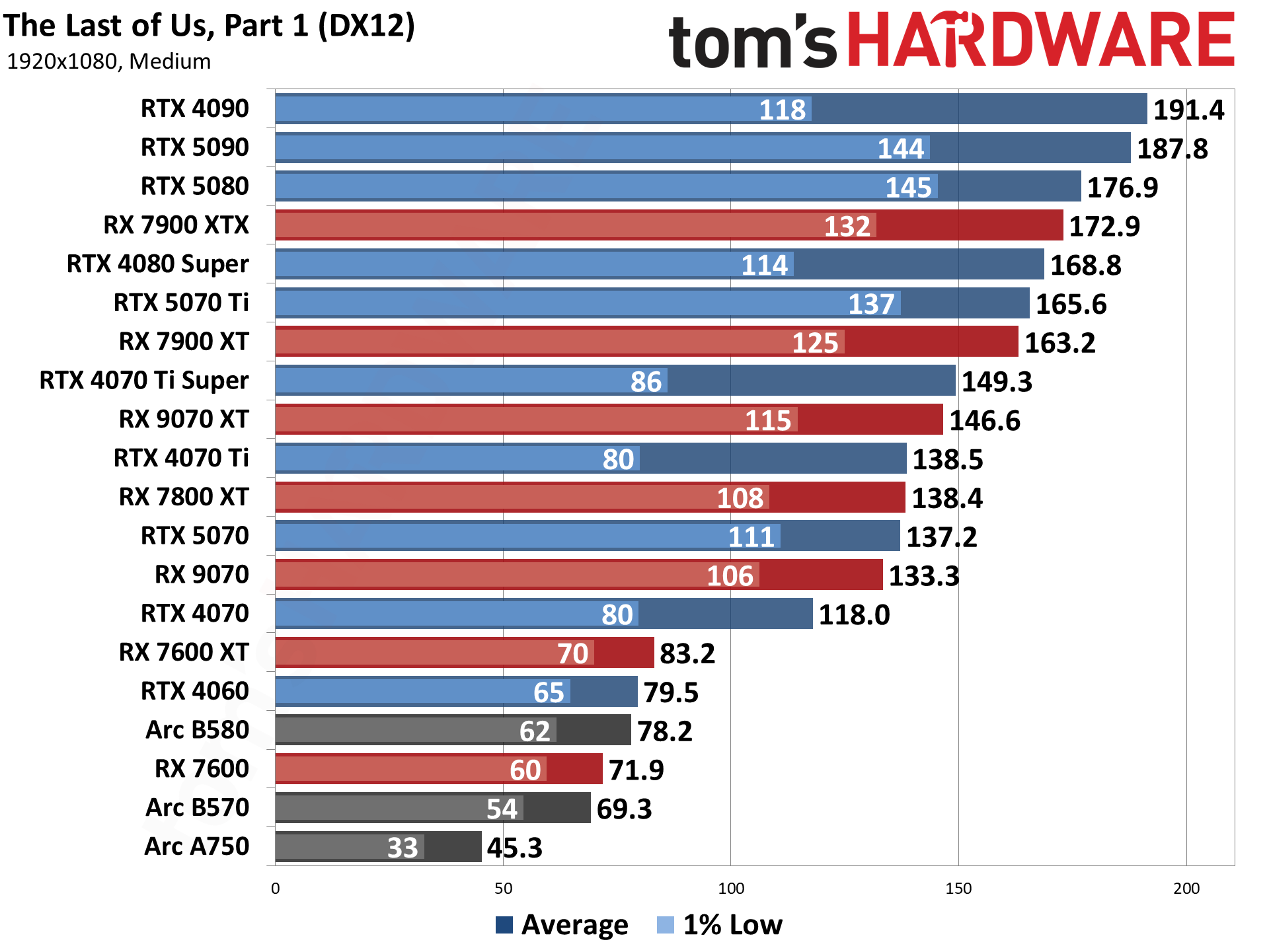
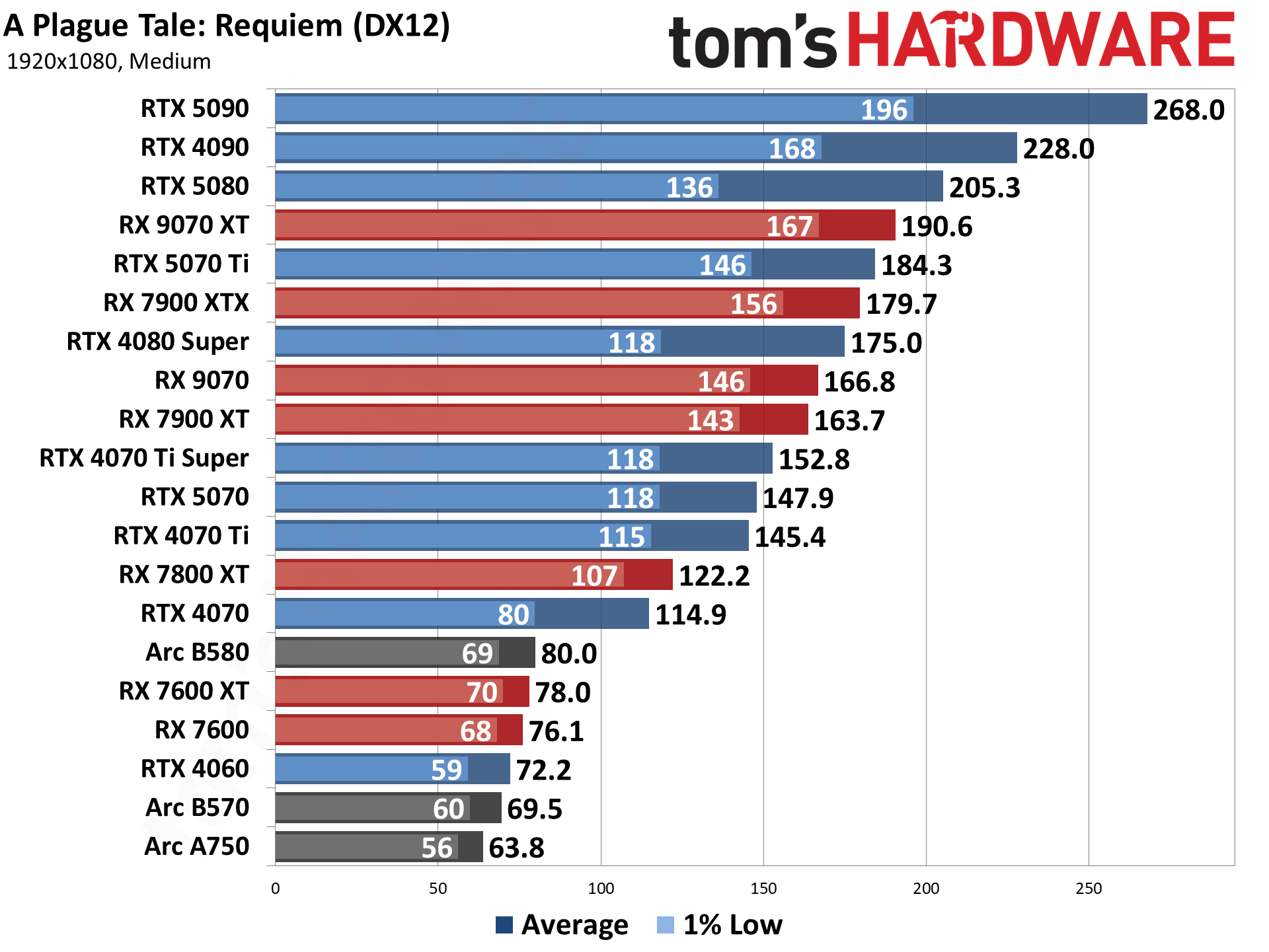
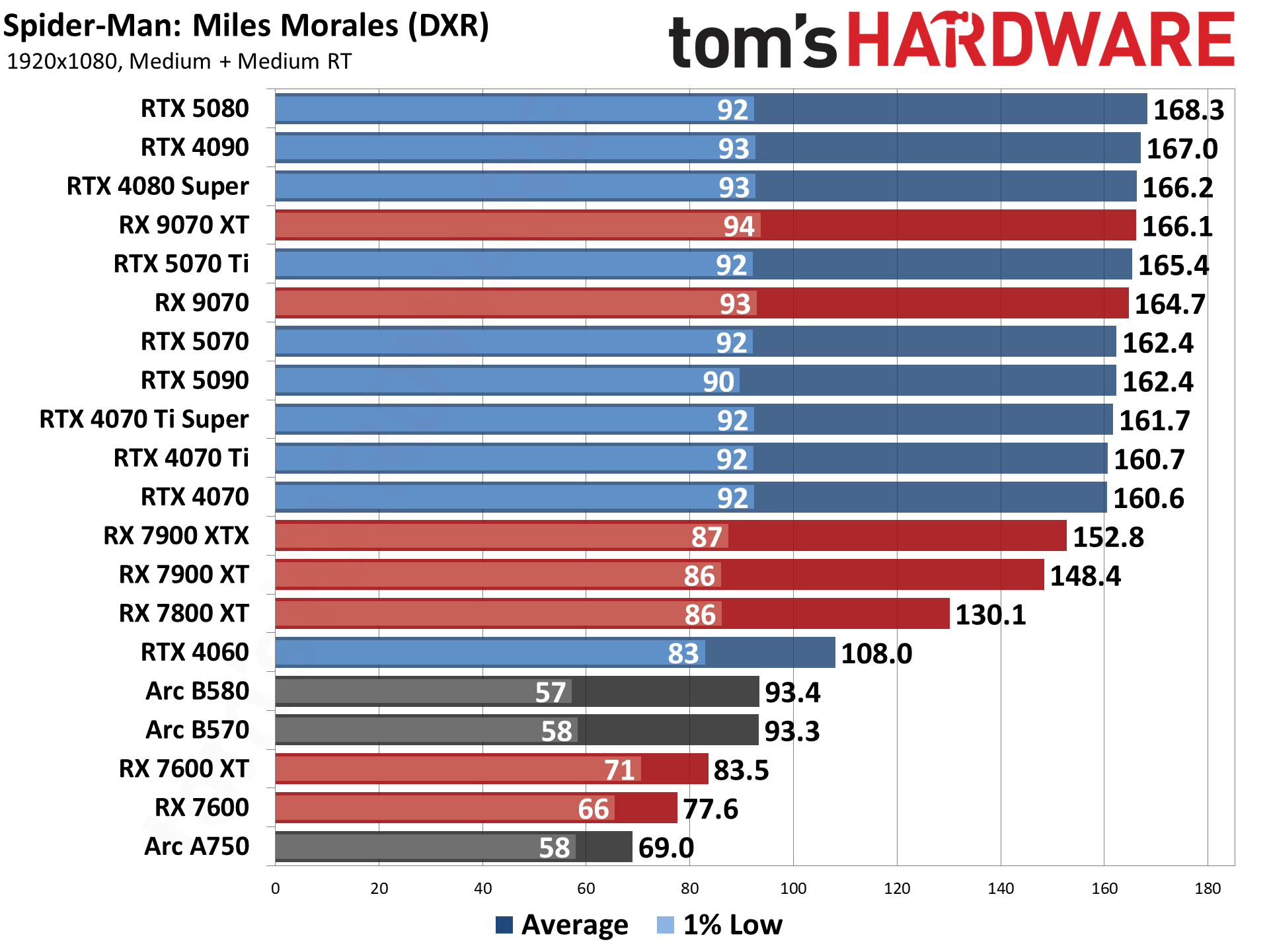
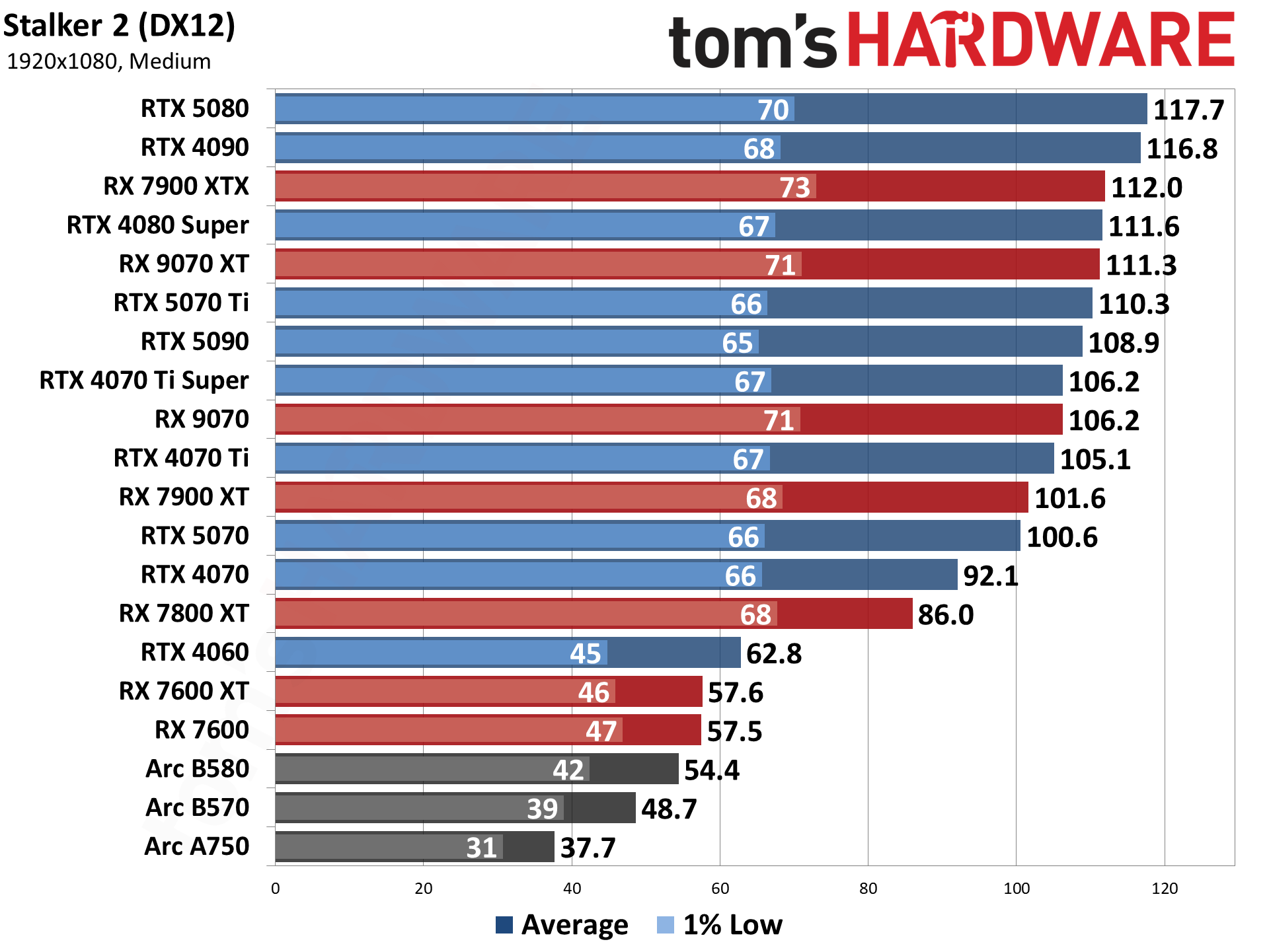
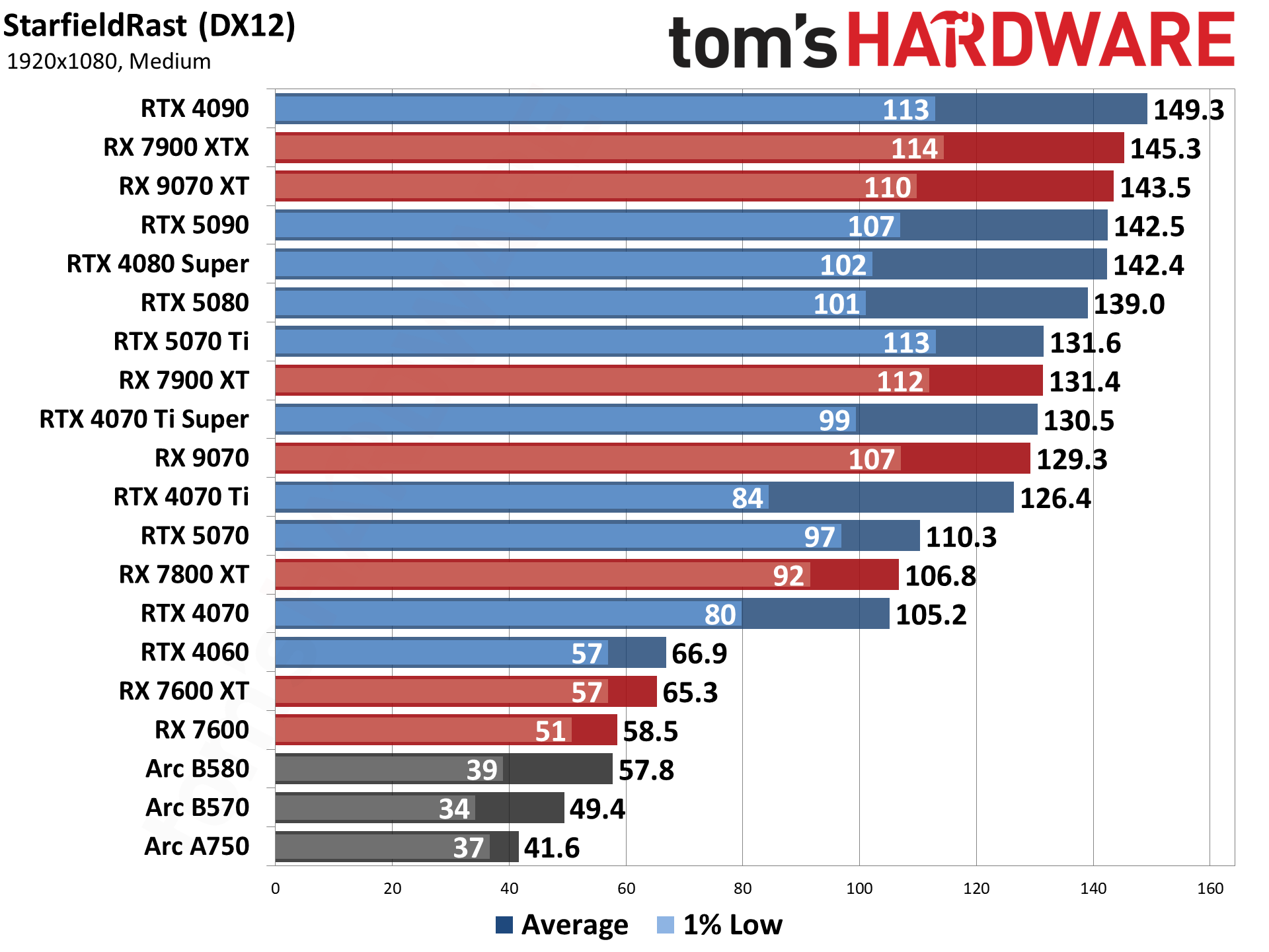
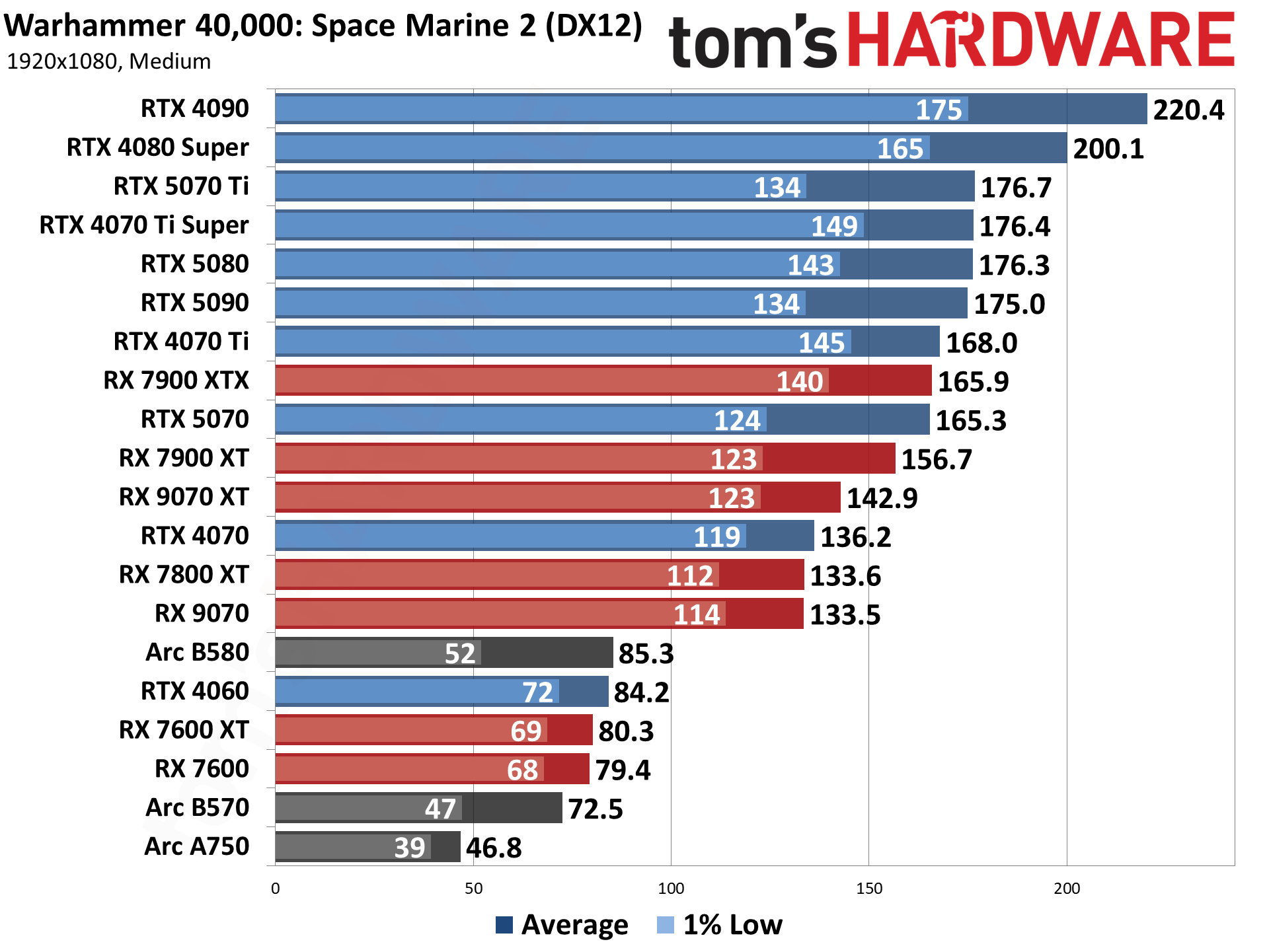
Best Graphics Cards — 1080p Ultra
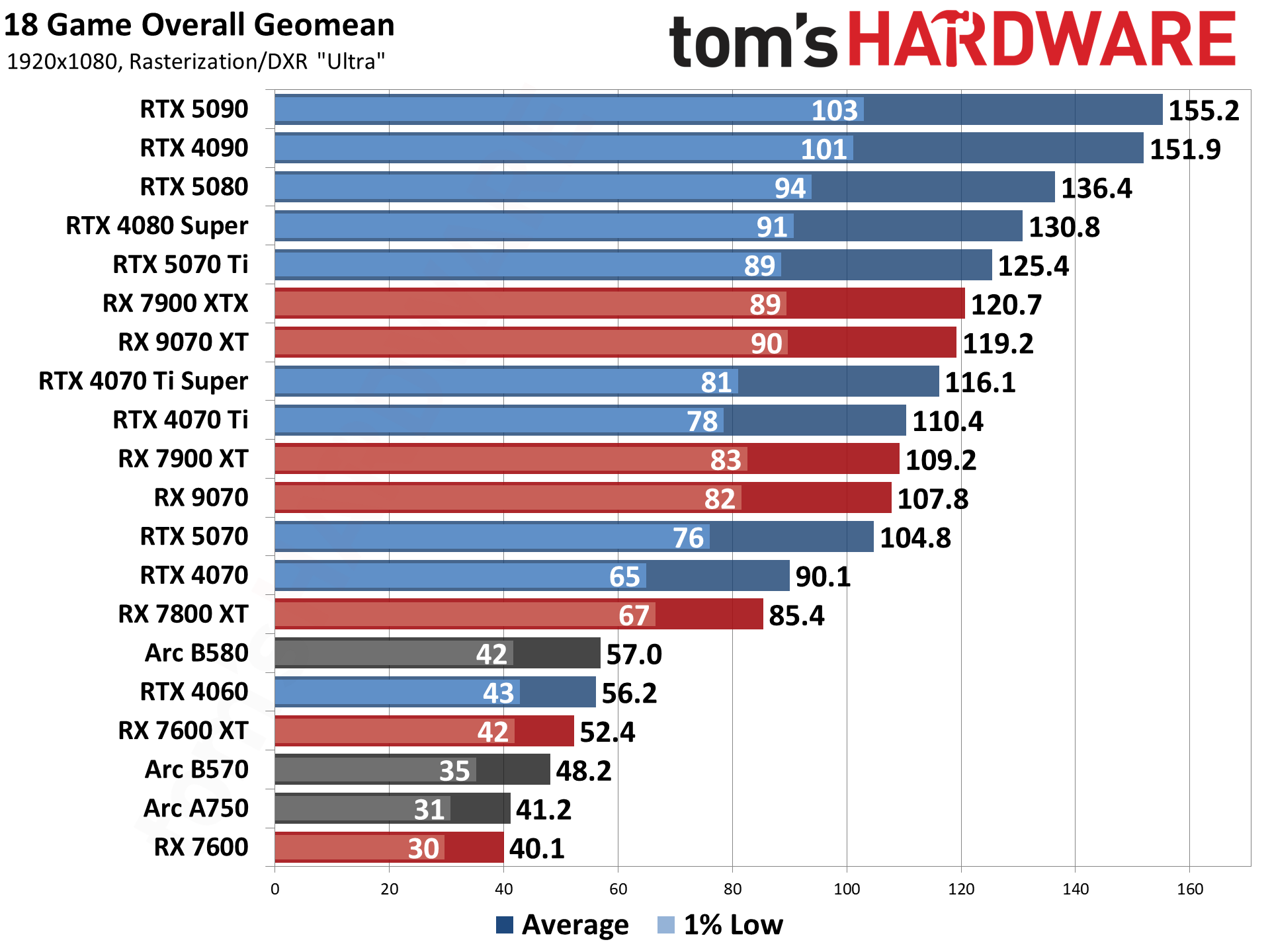
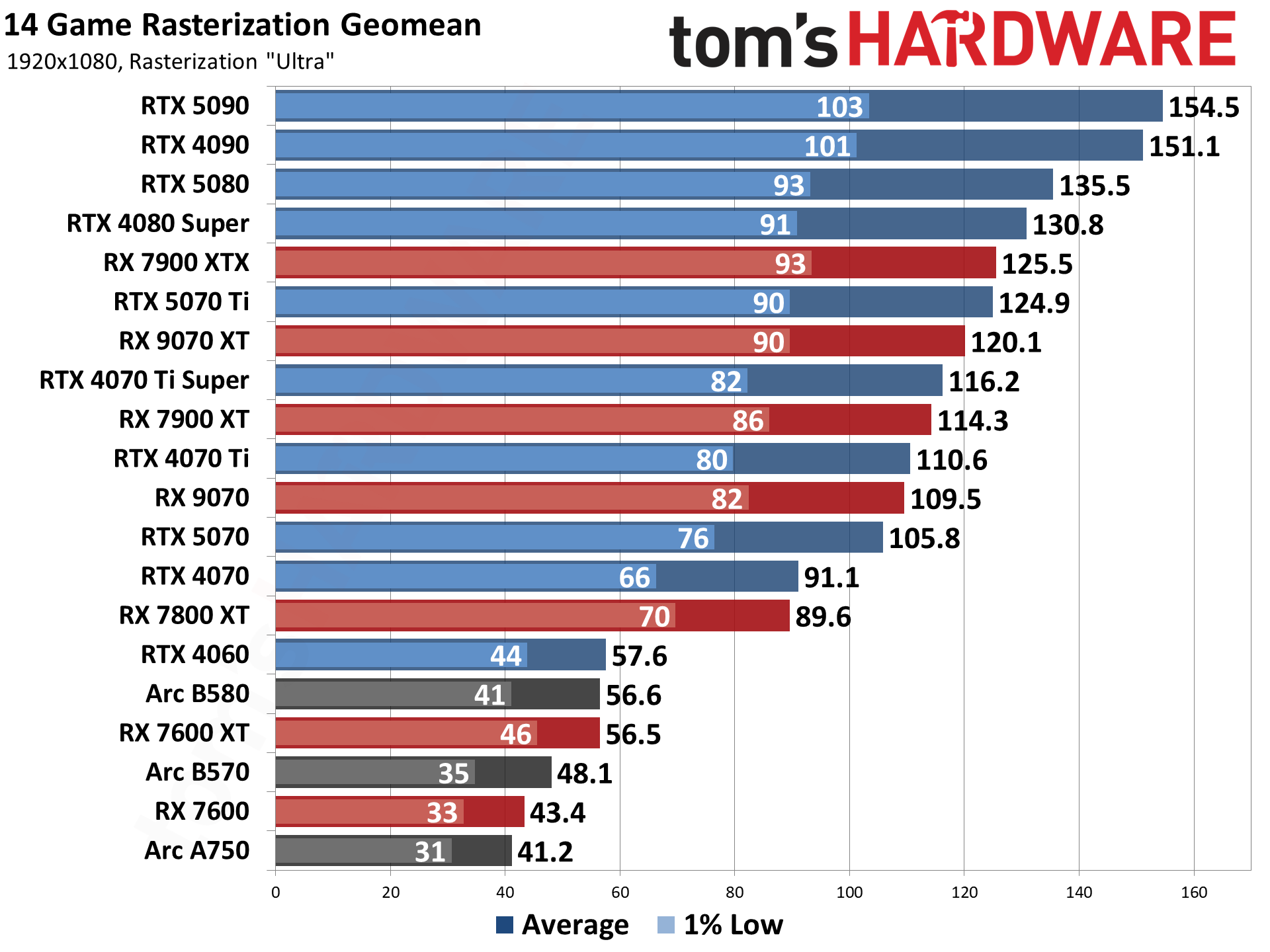
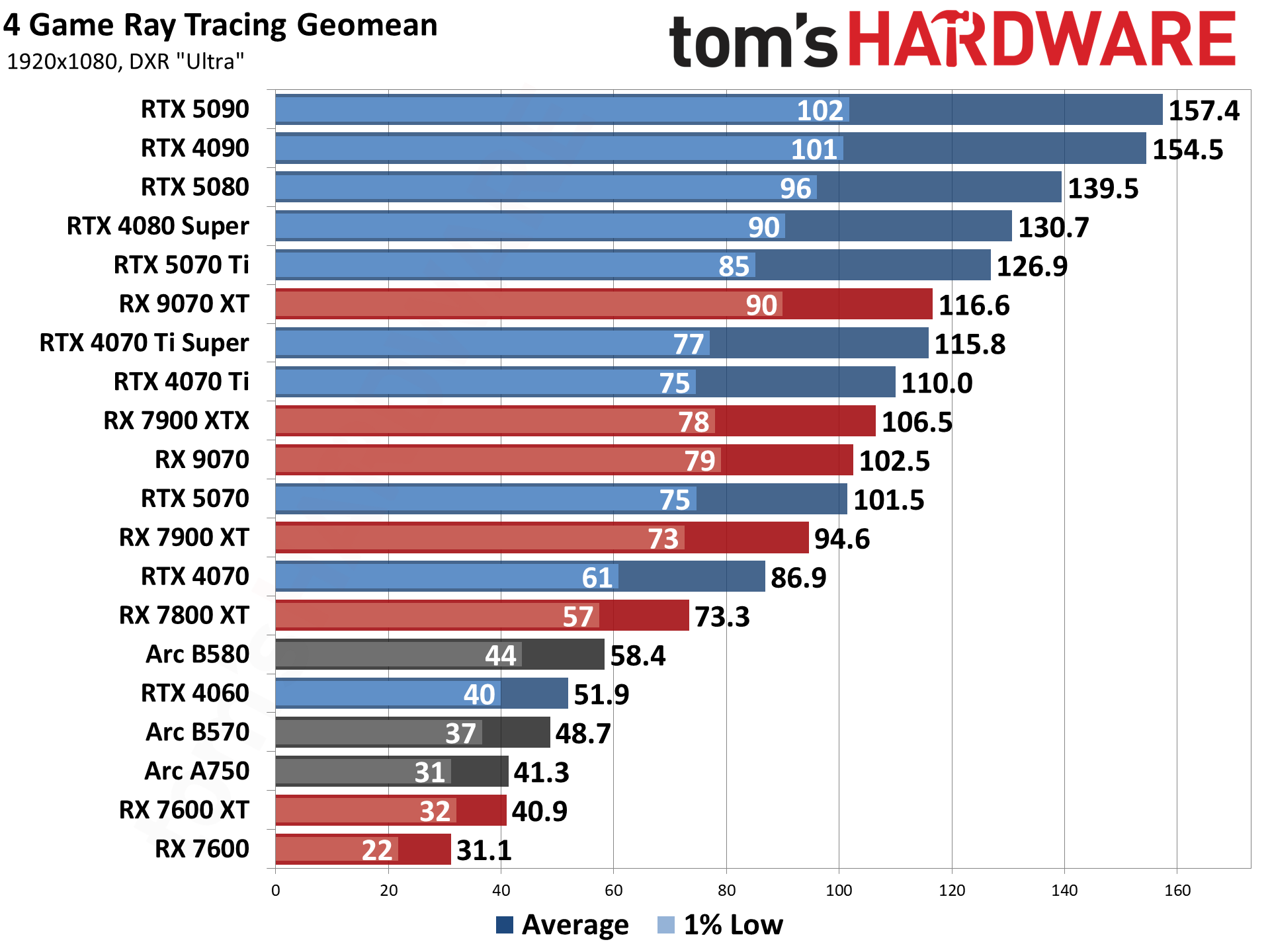
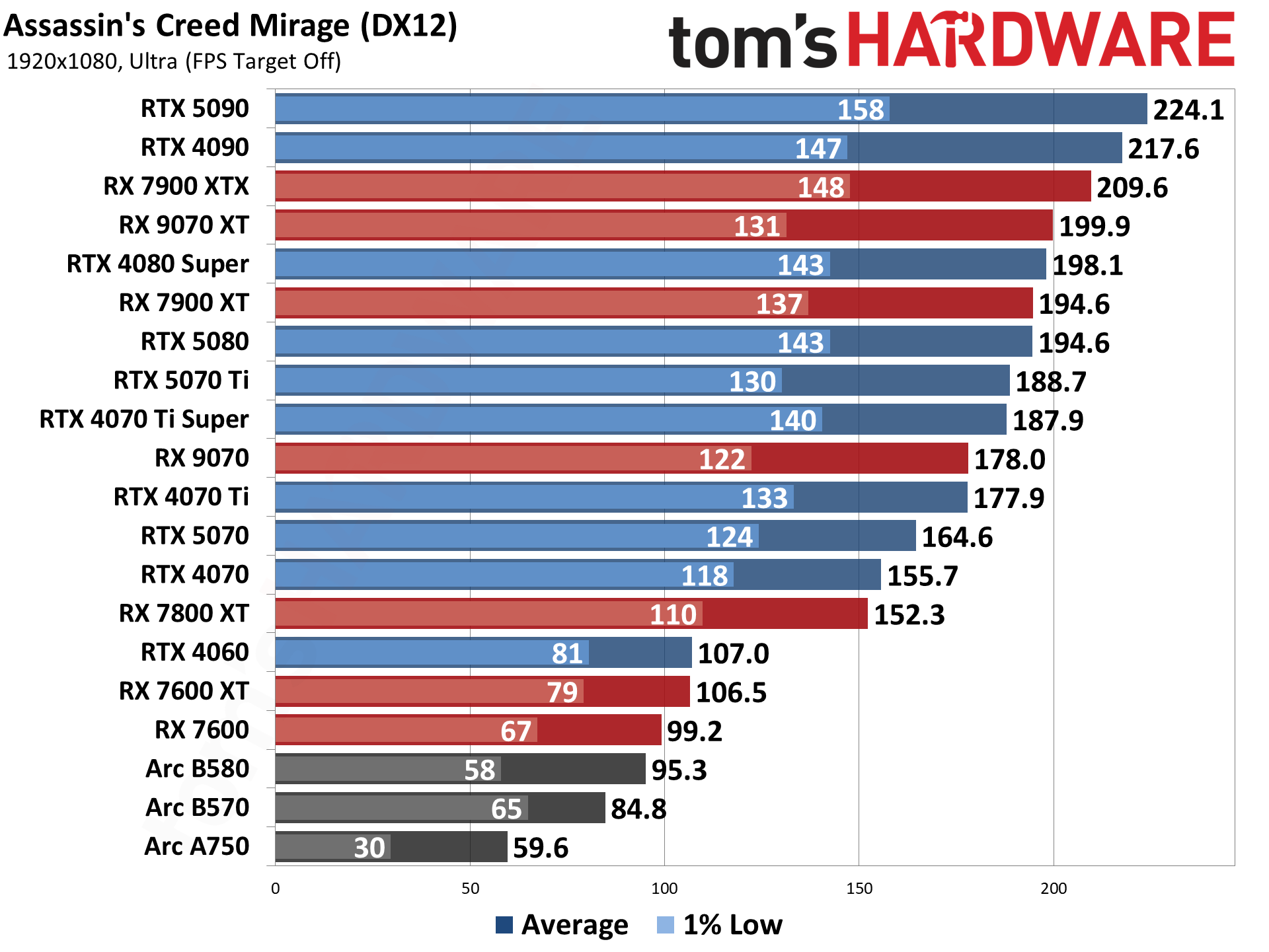
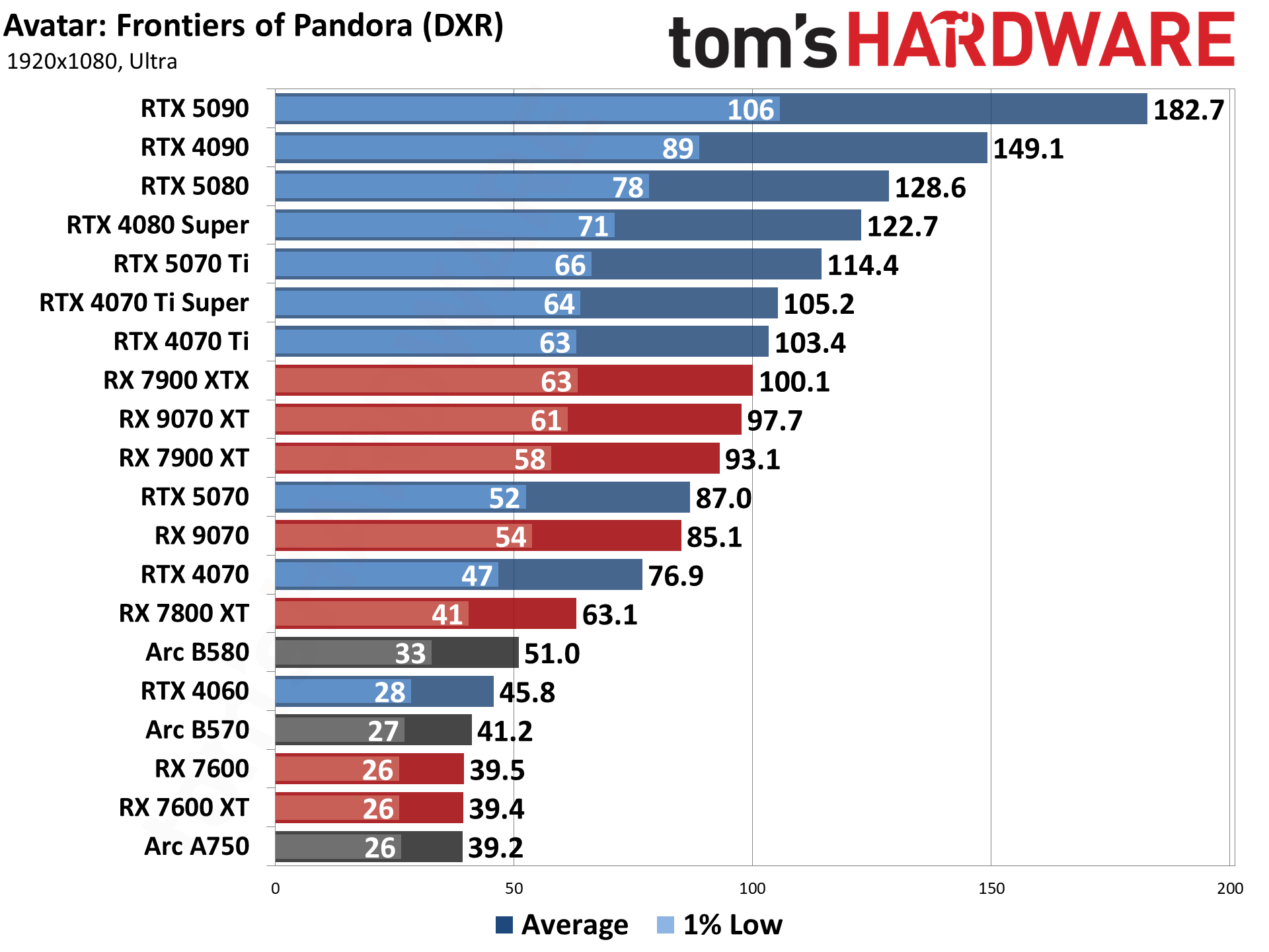
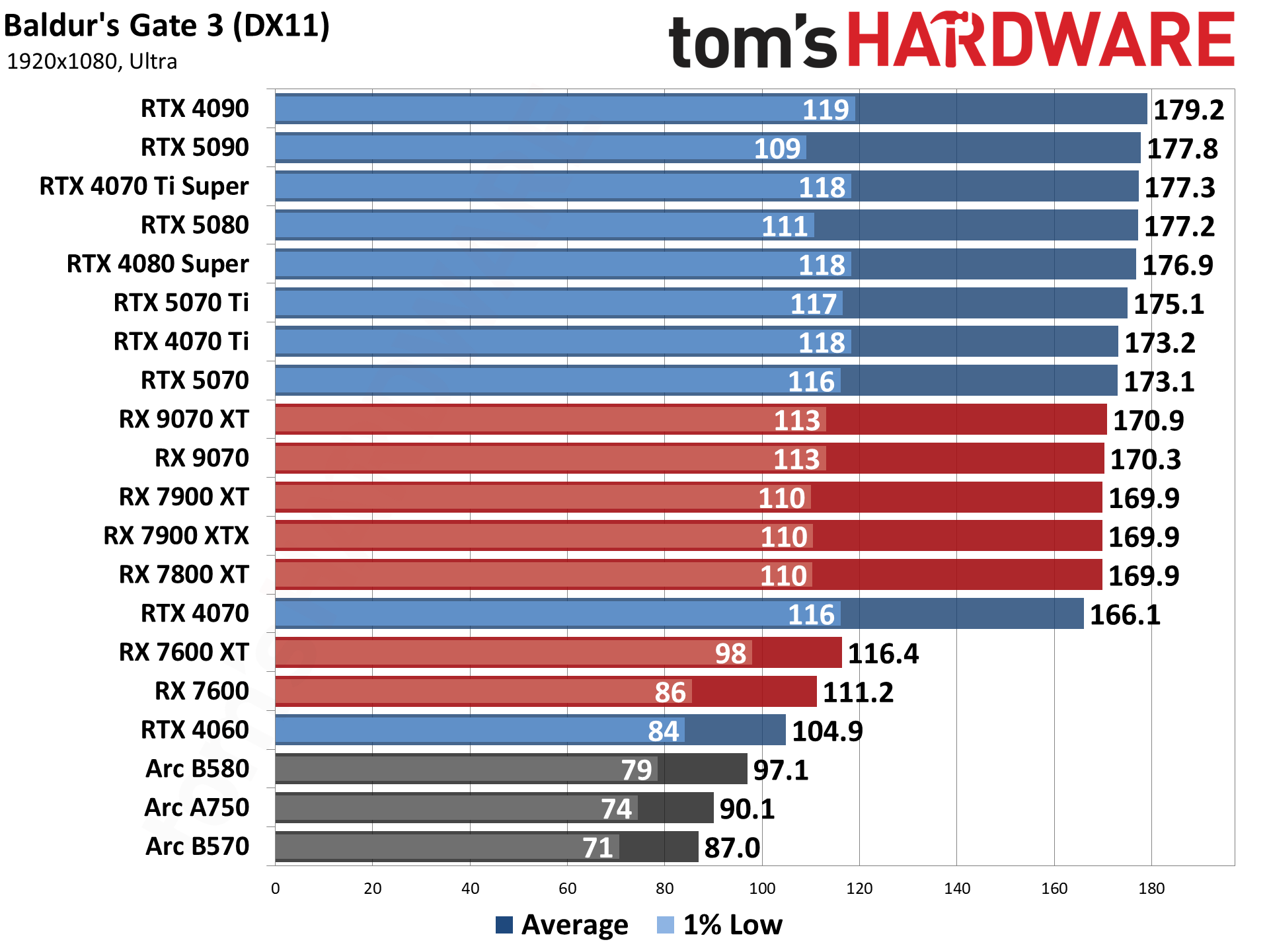
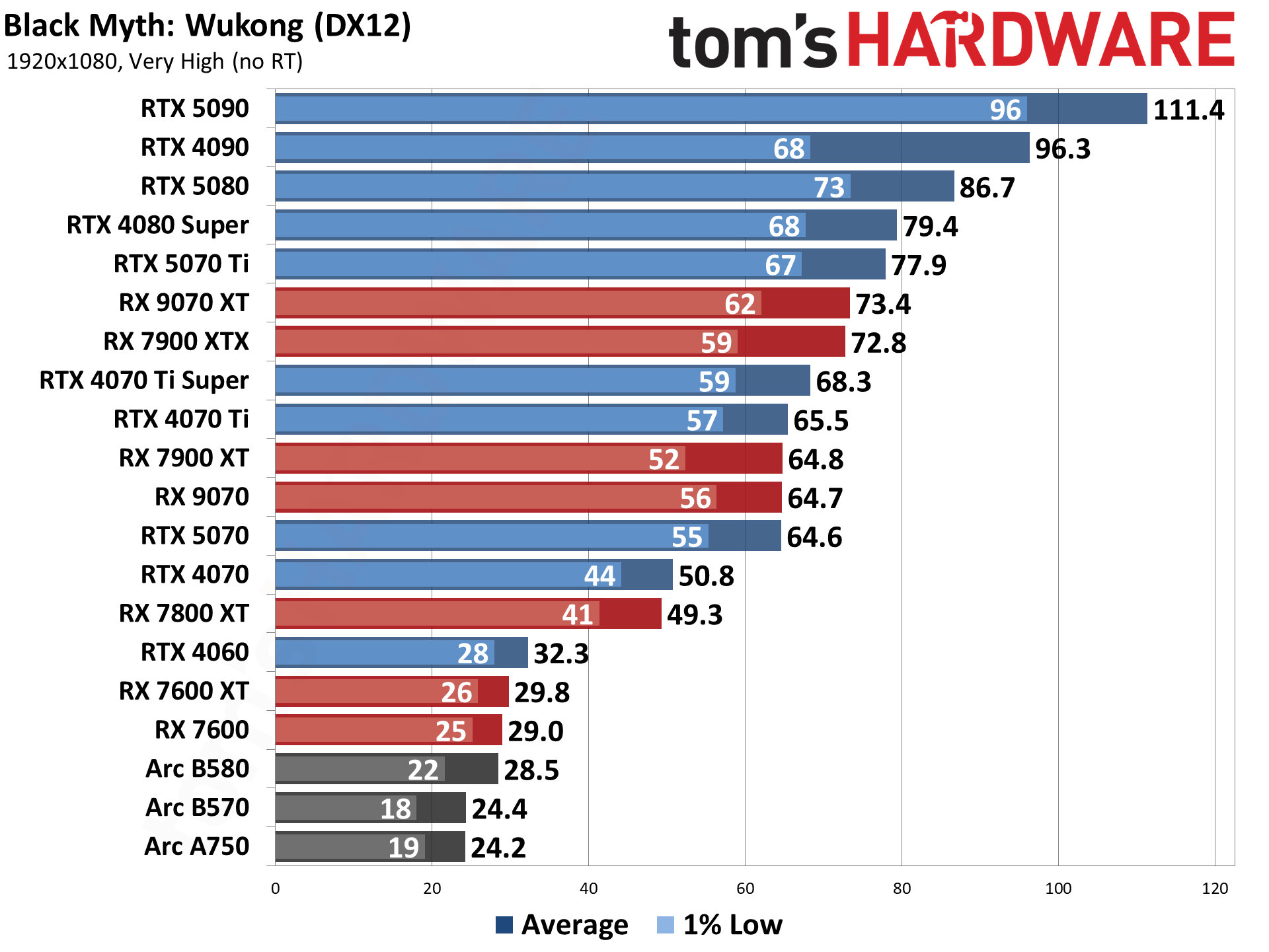
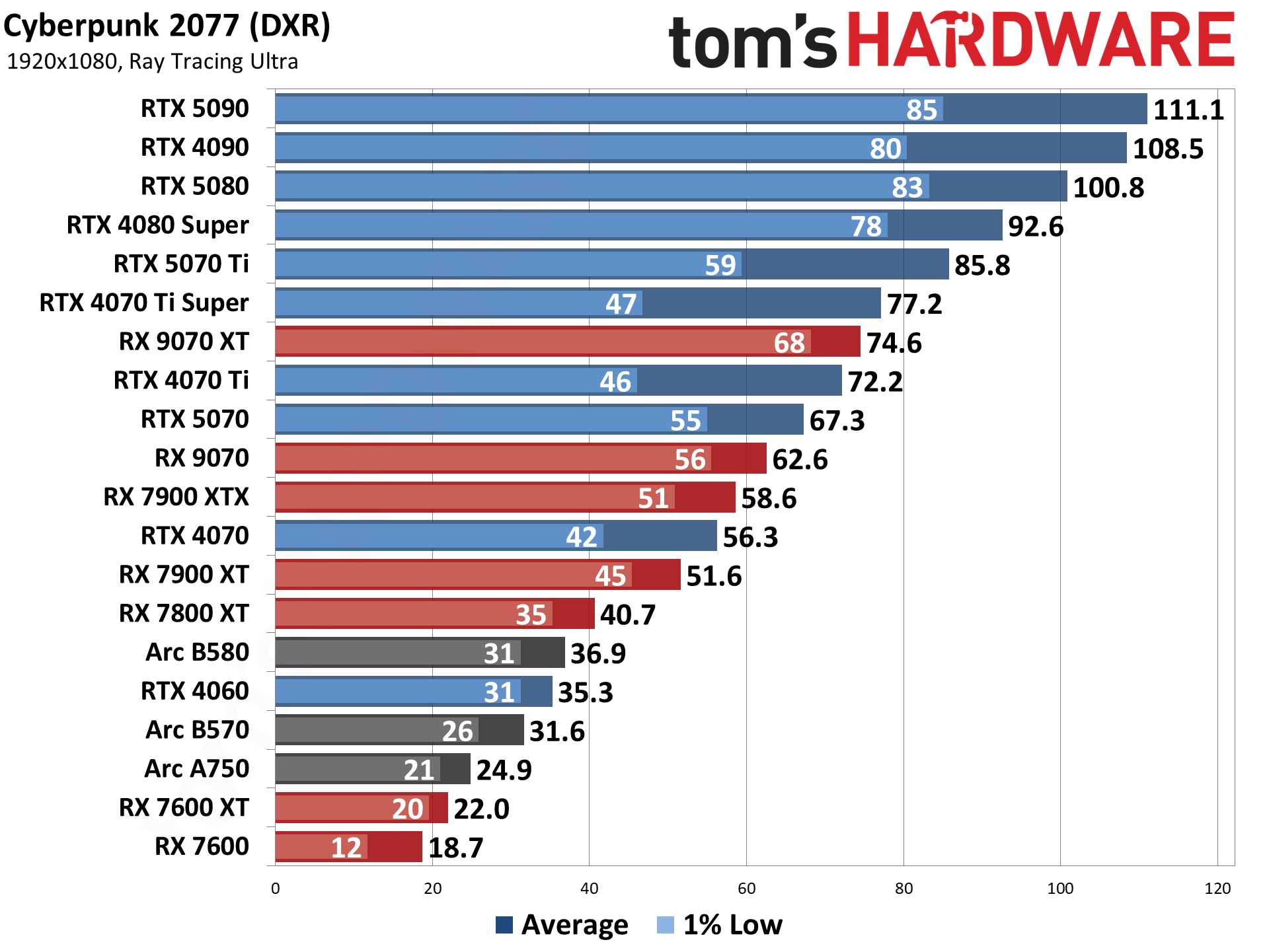
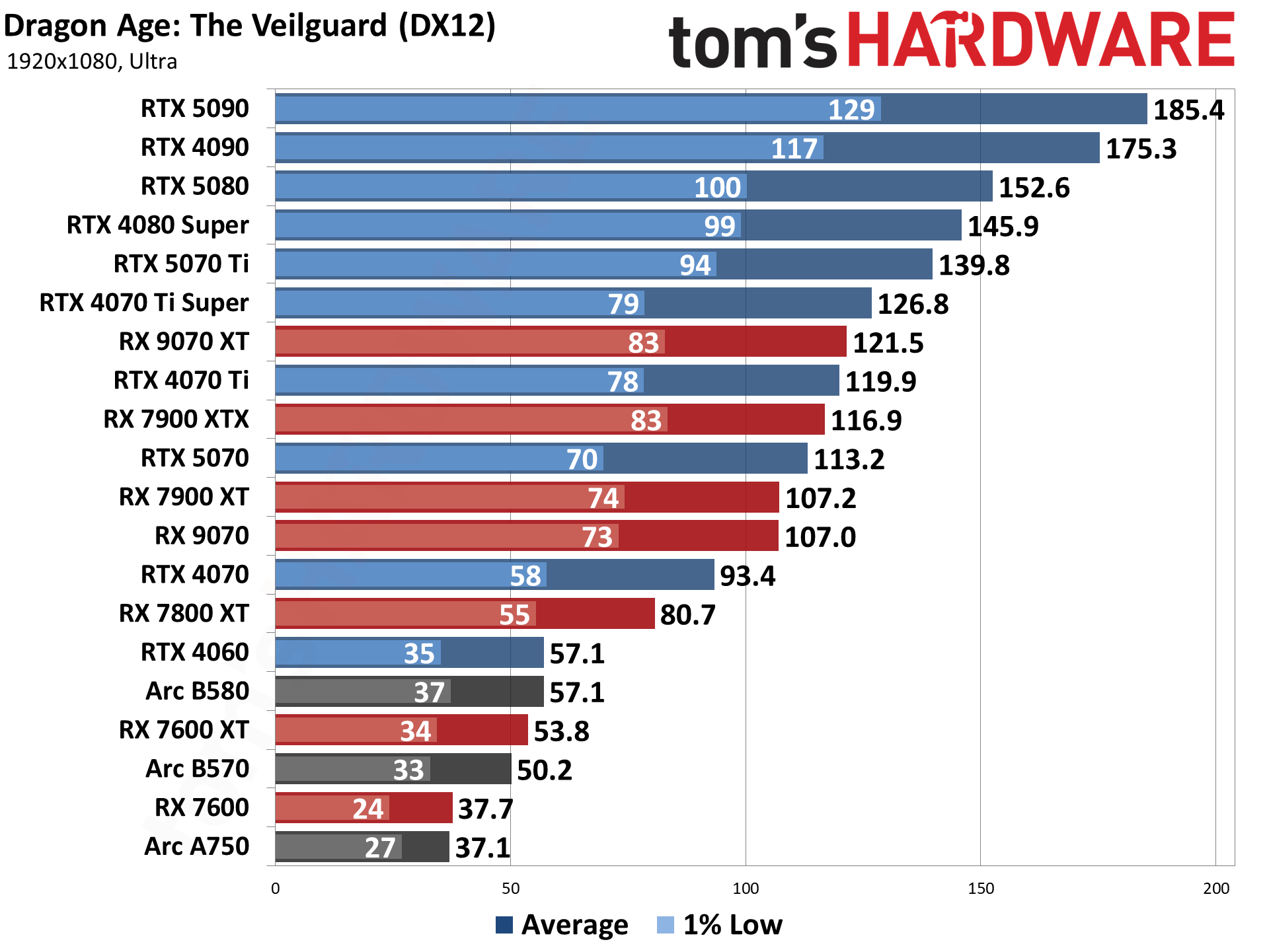
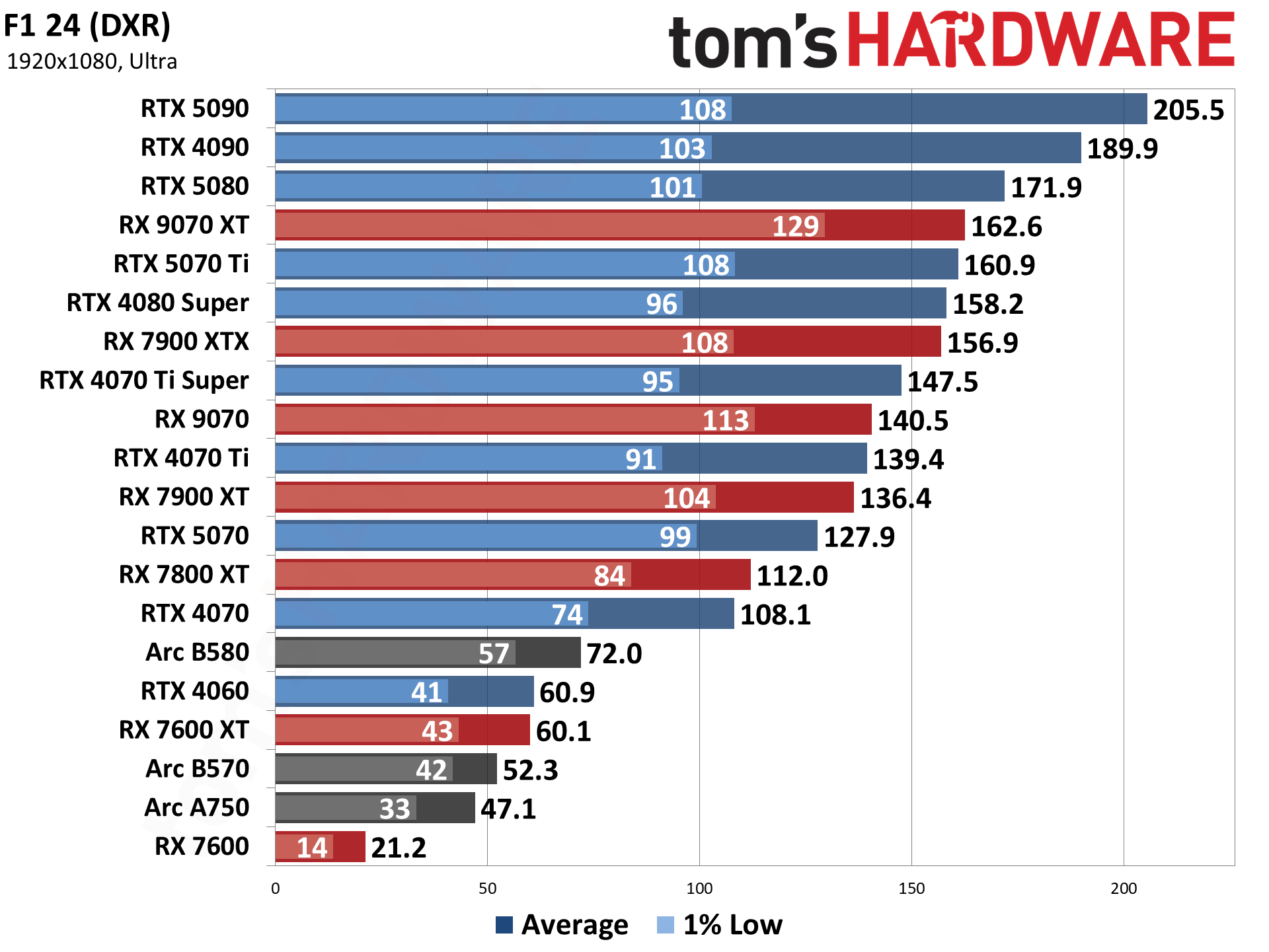
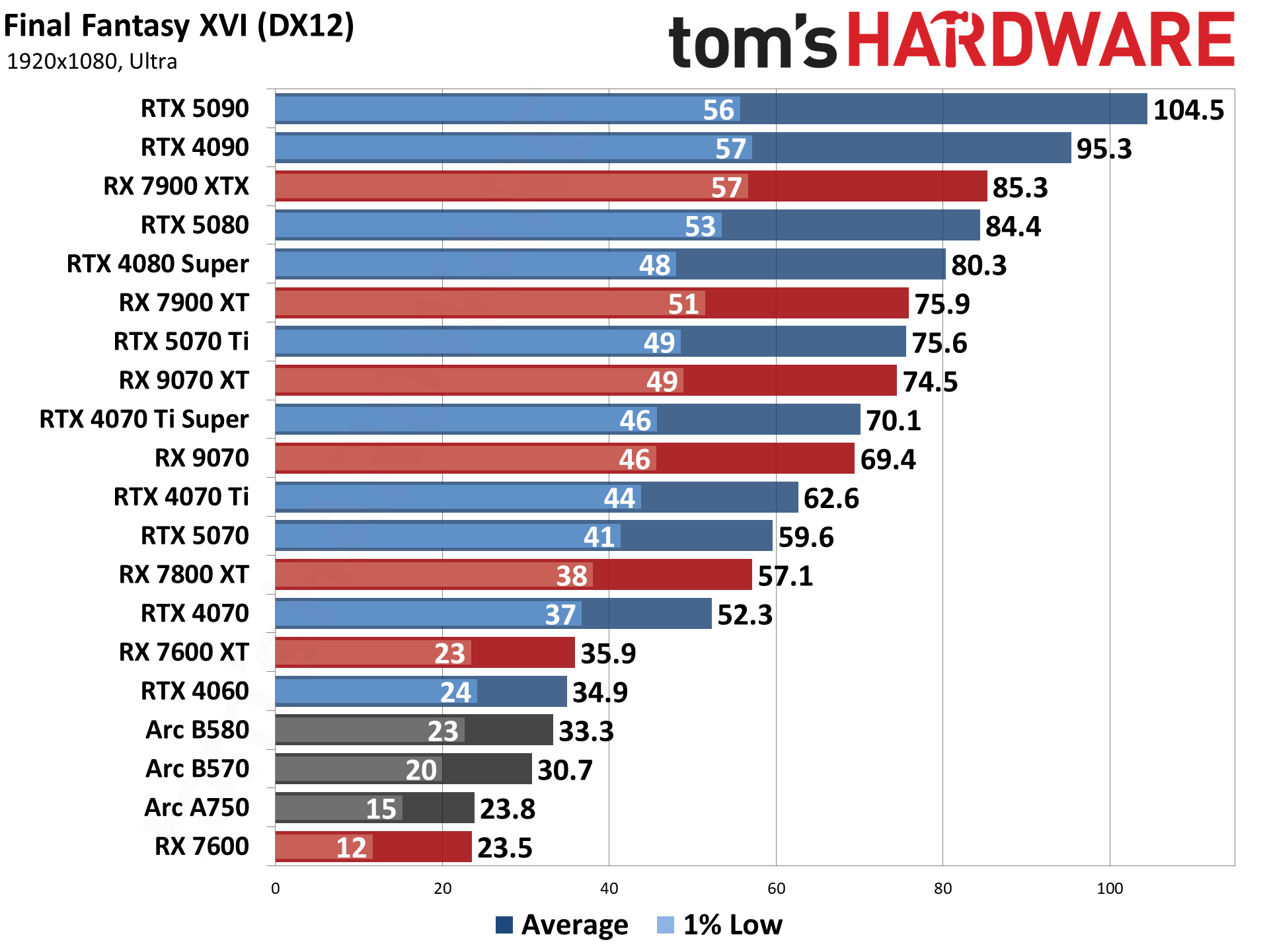
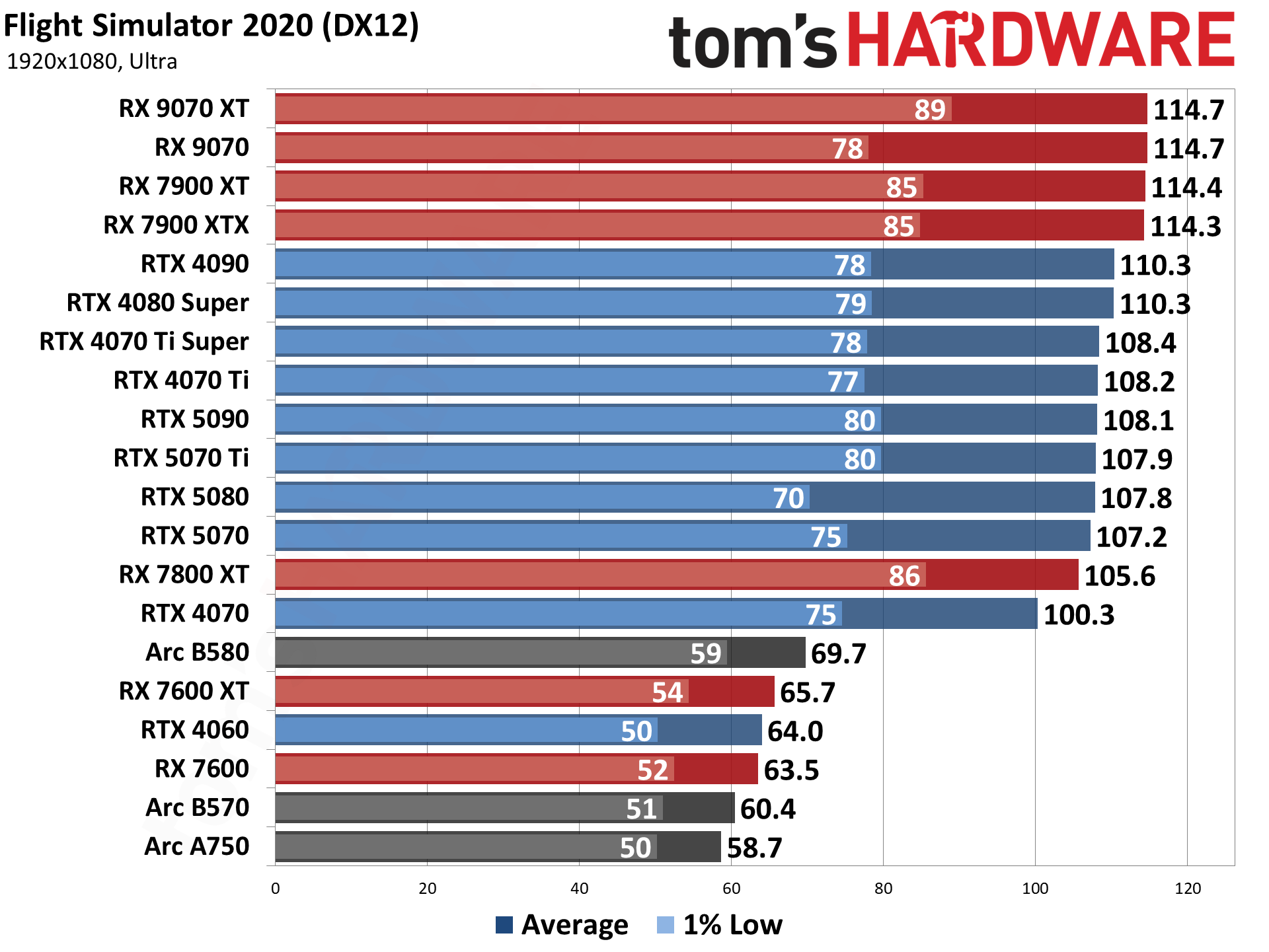
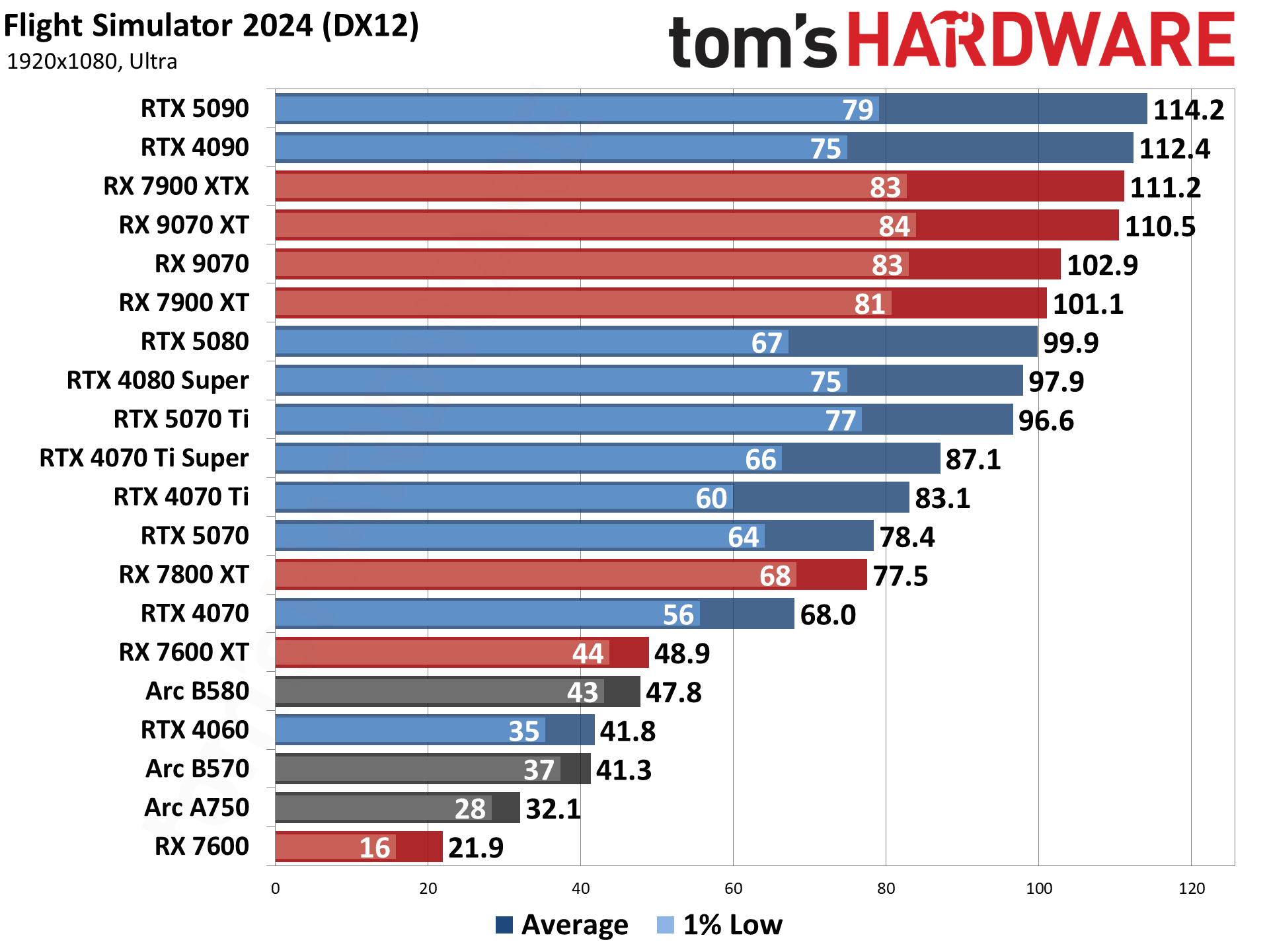
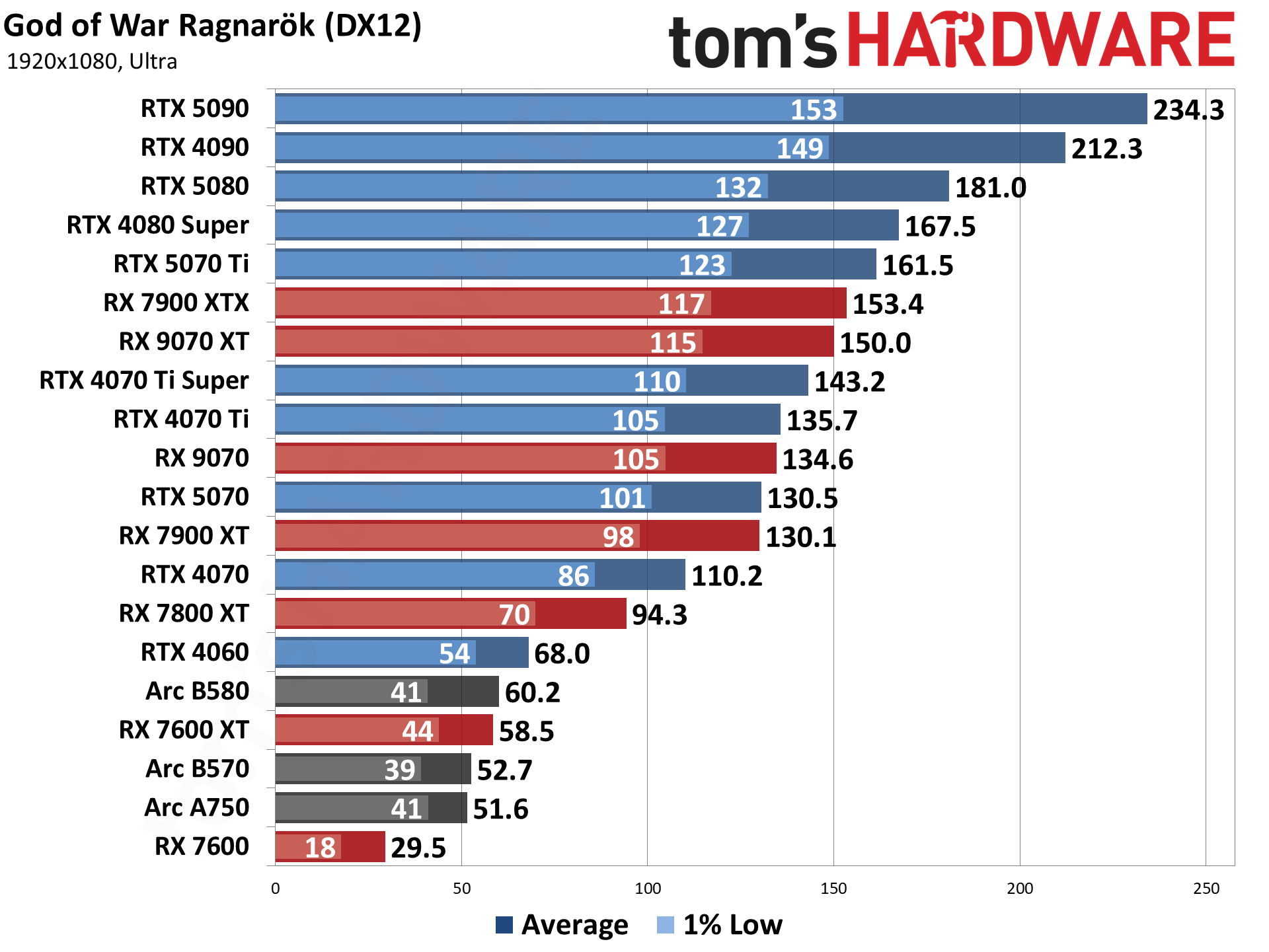
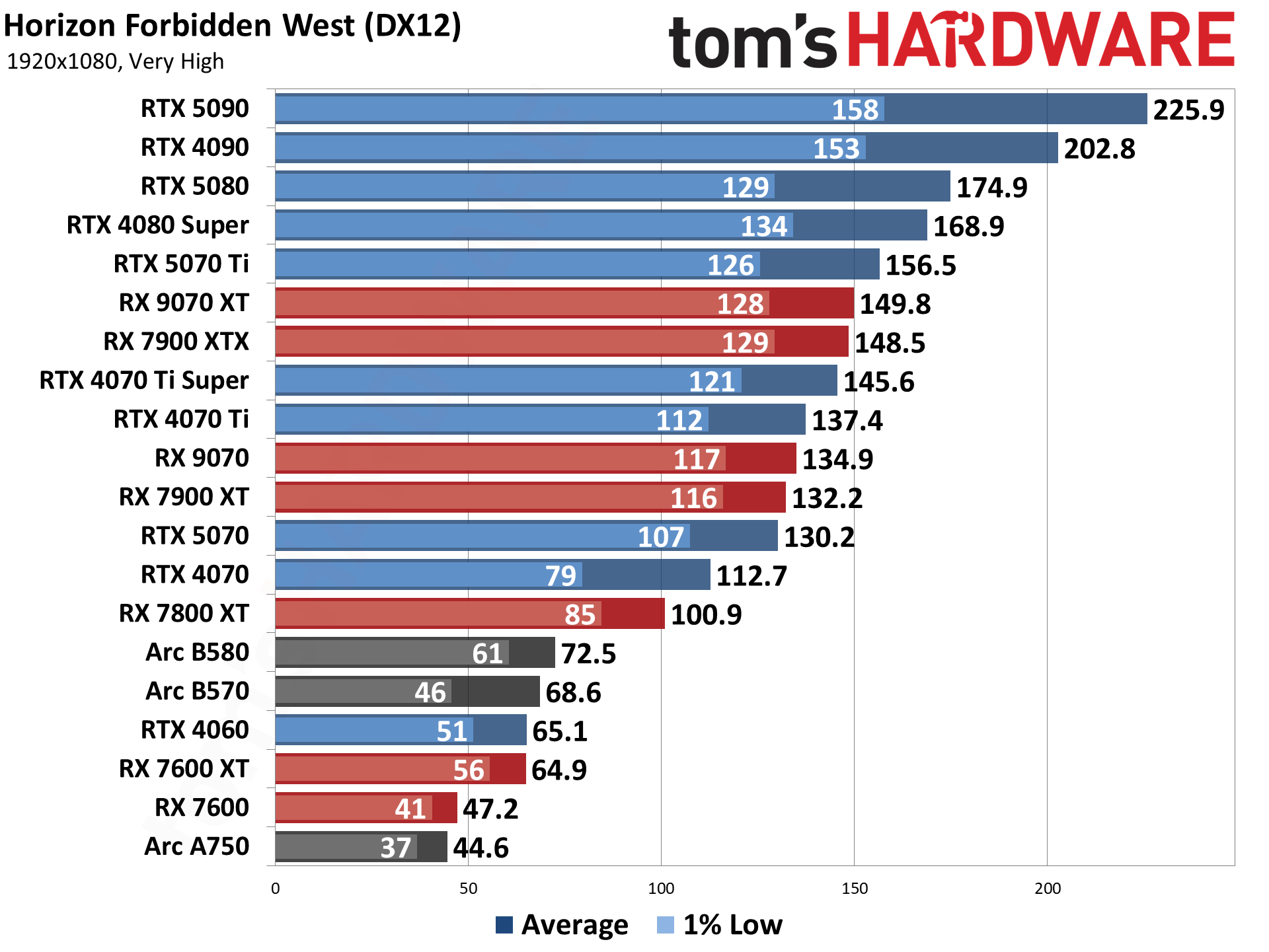
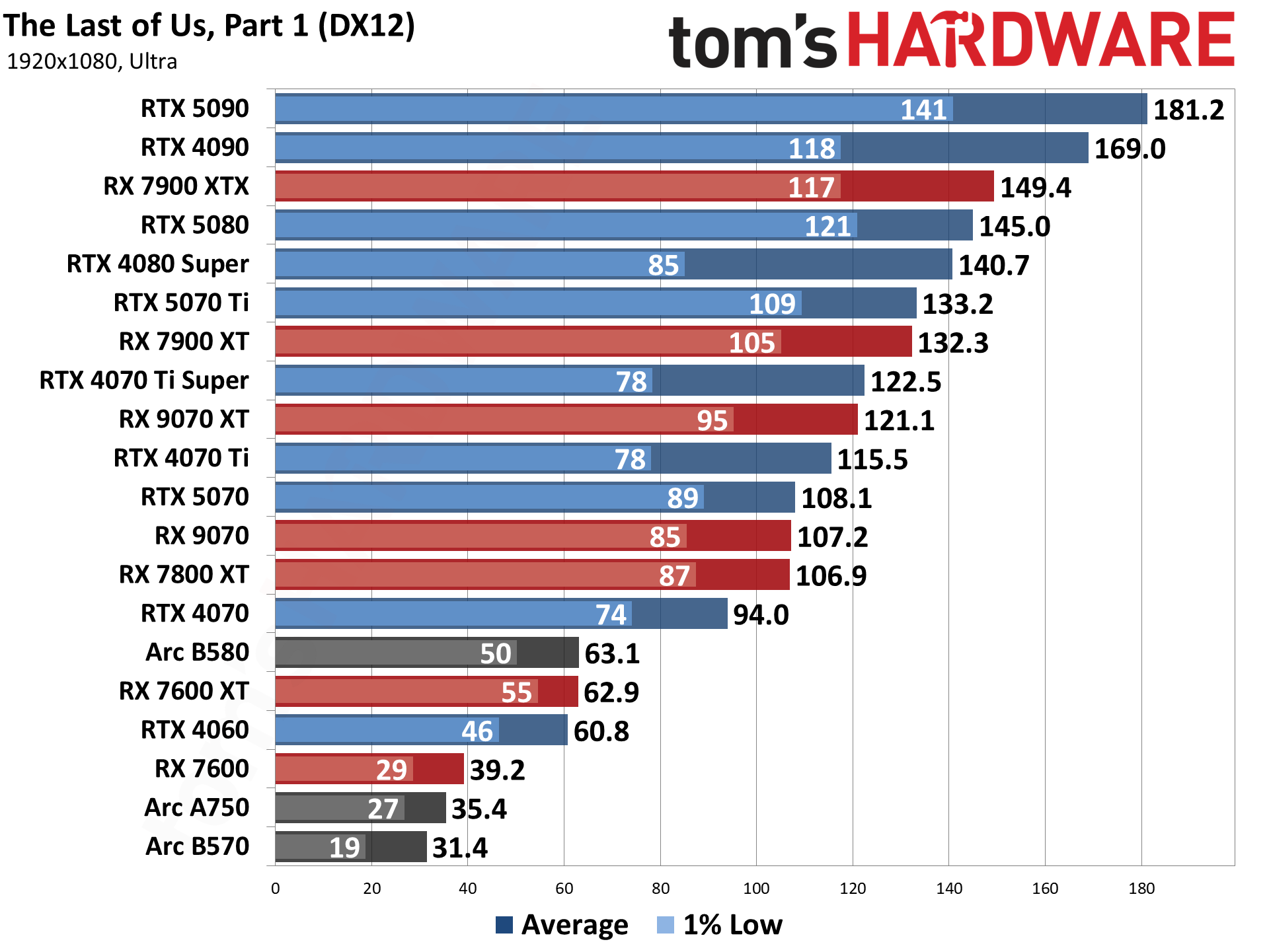
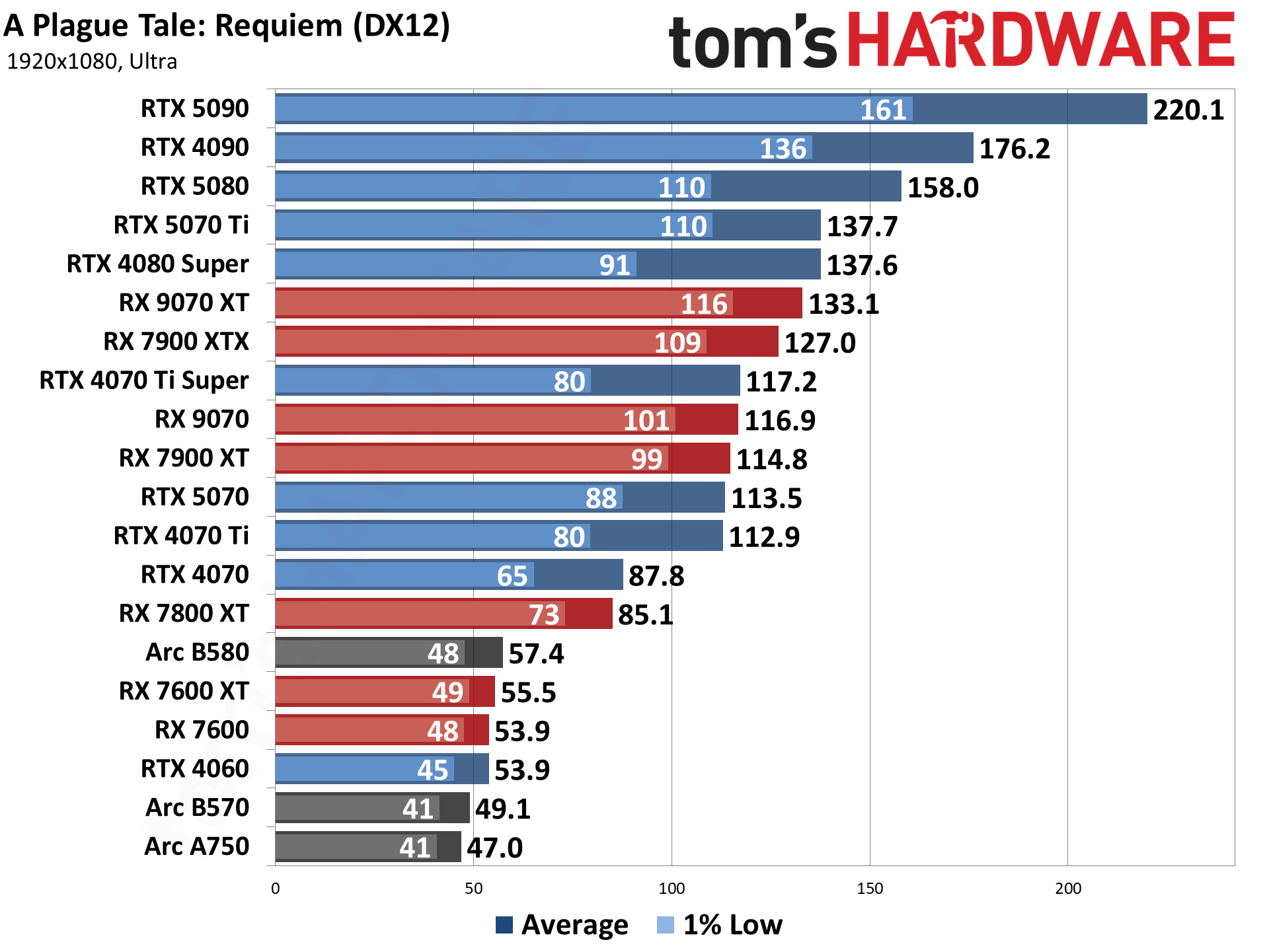


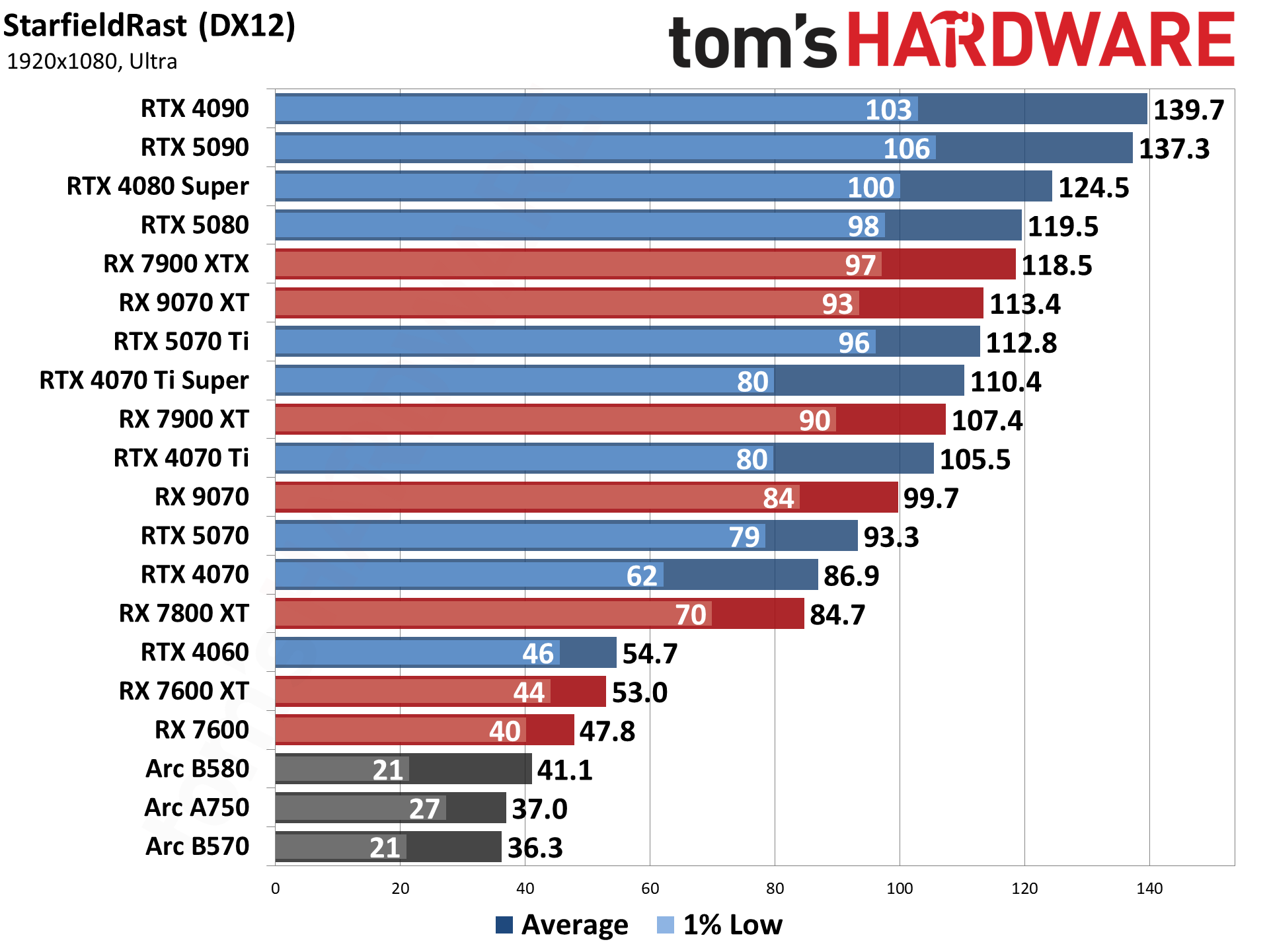
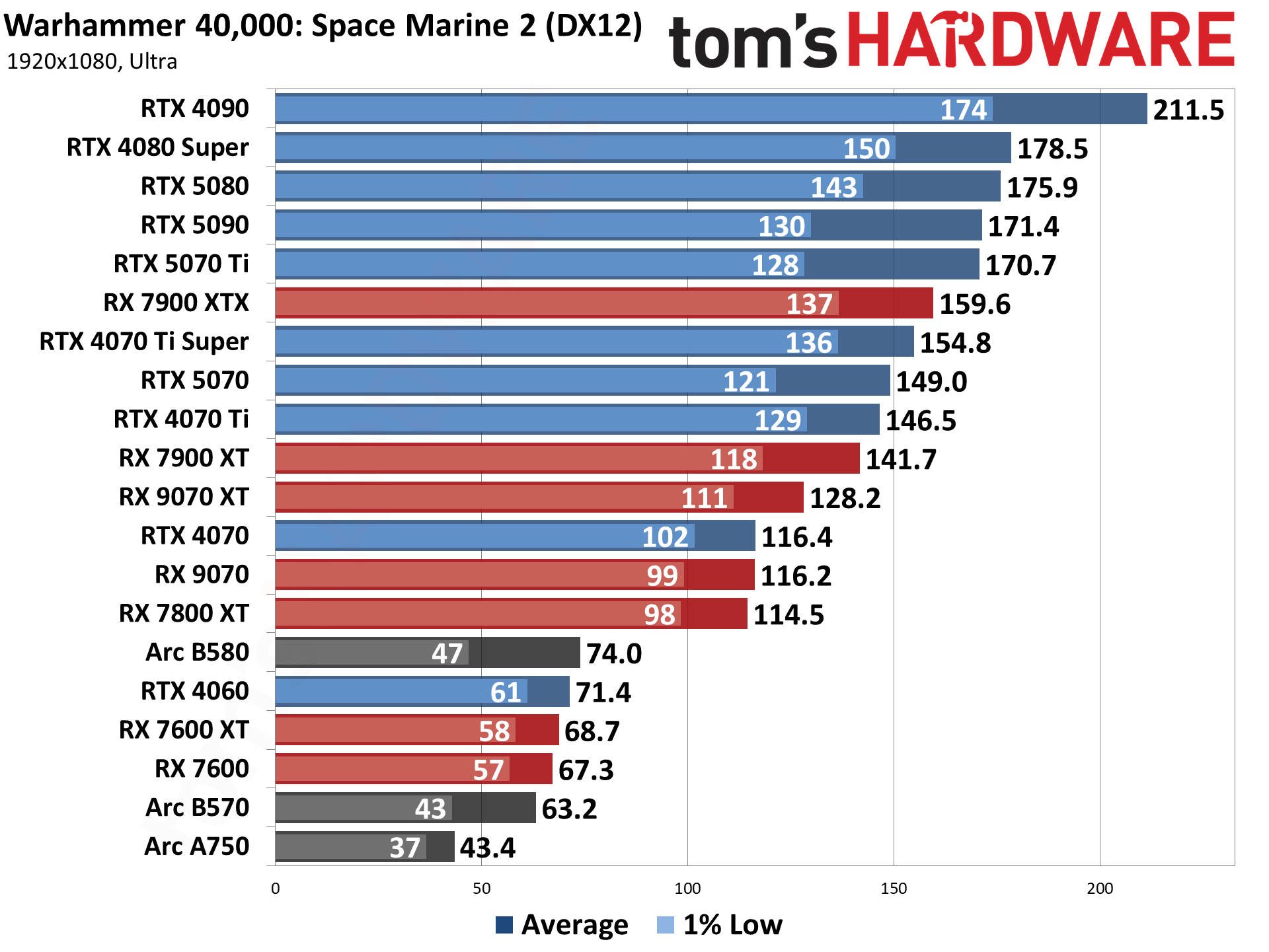
Best Graphics Cards — 1440p Ultra
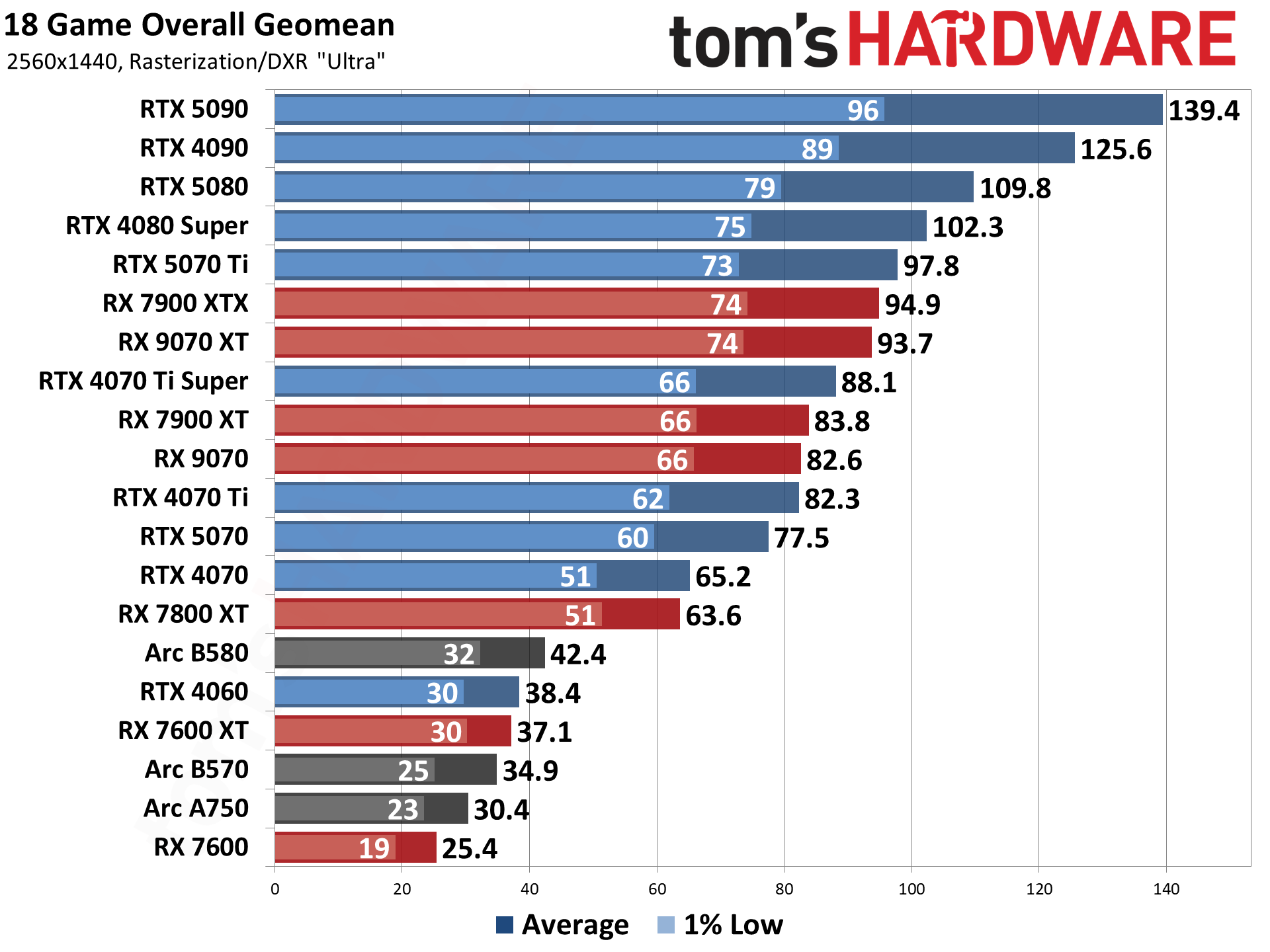
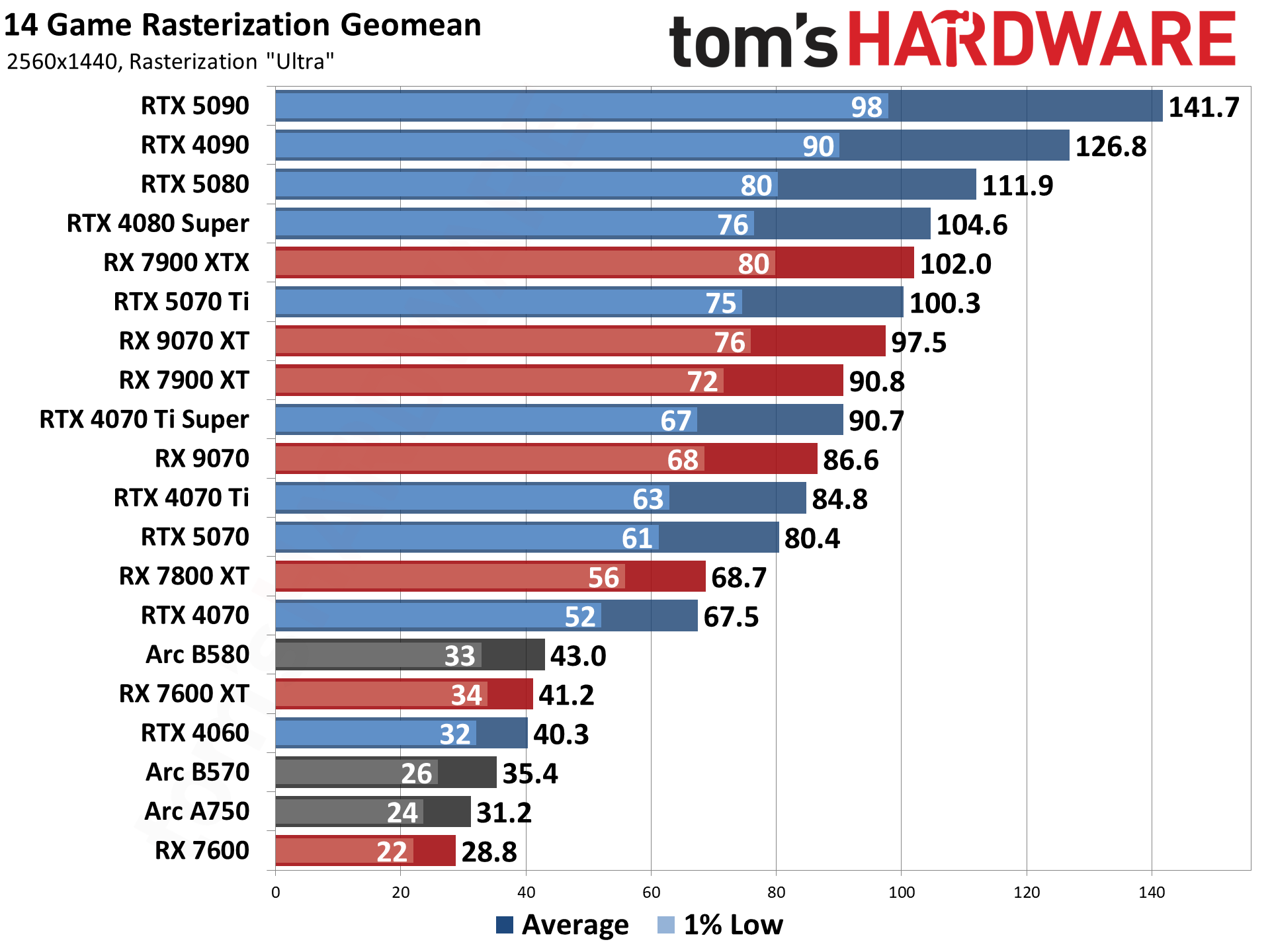
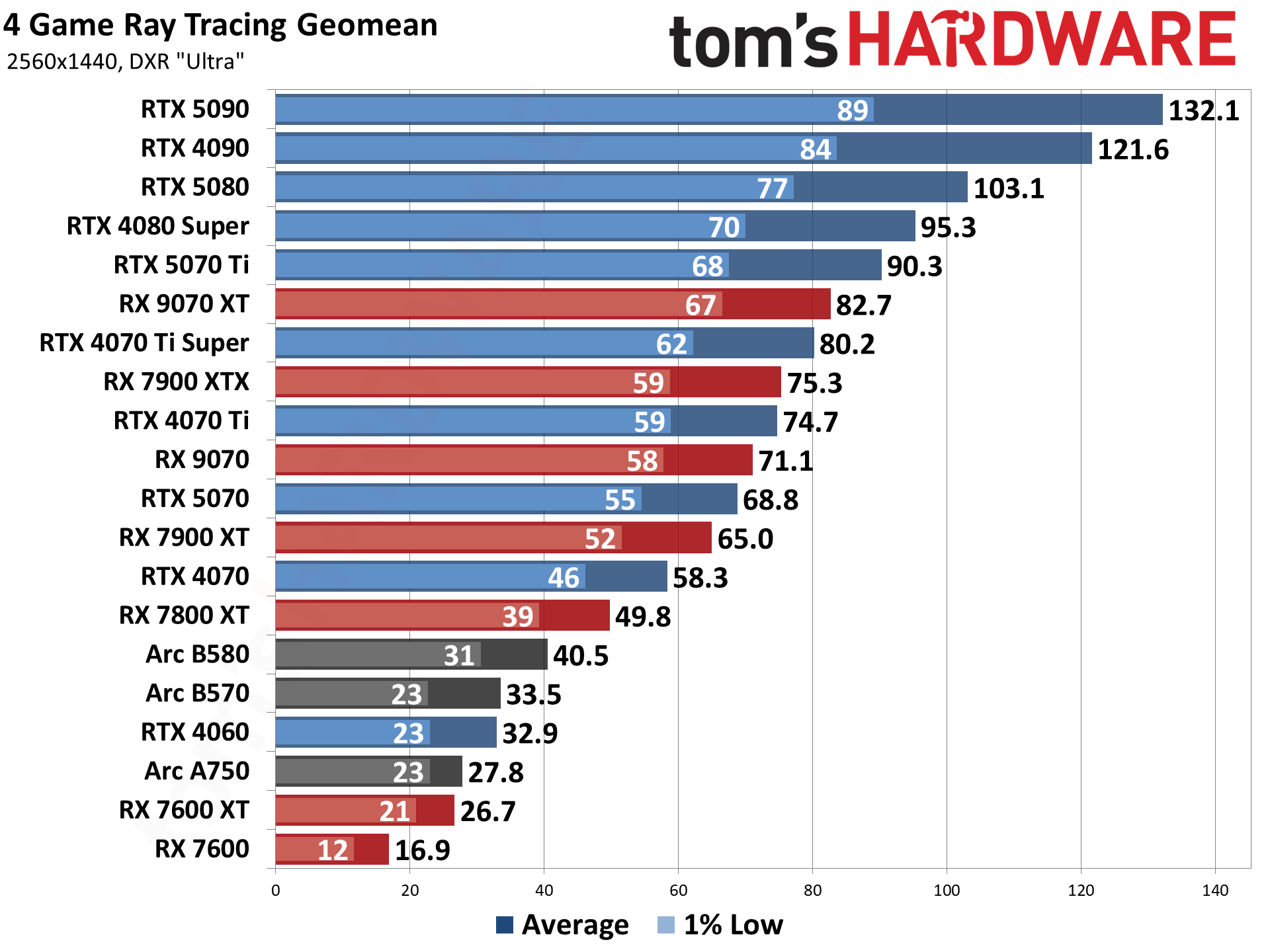
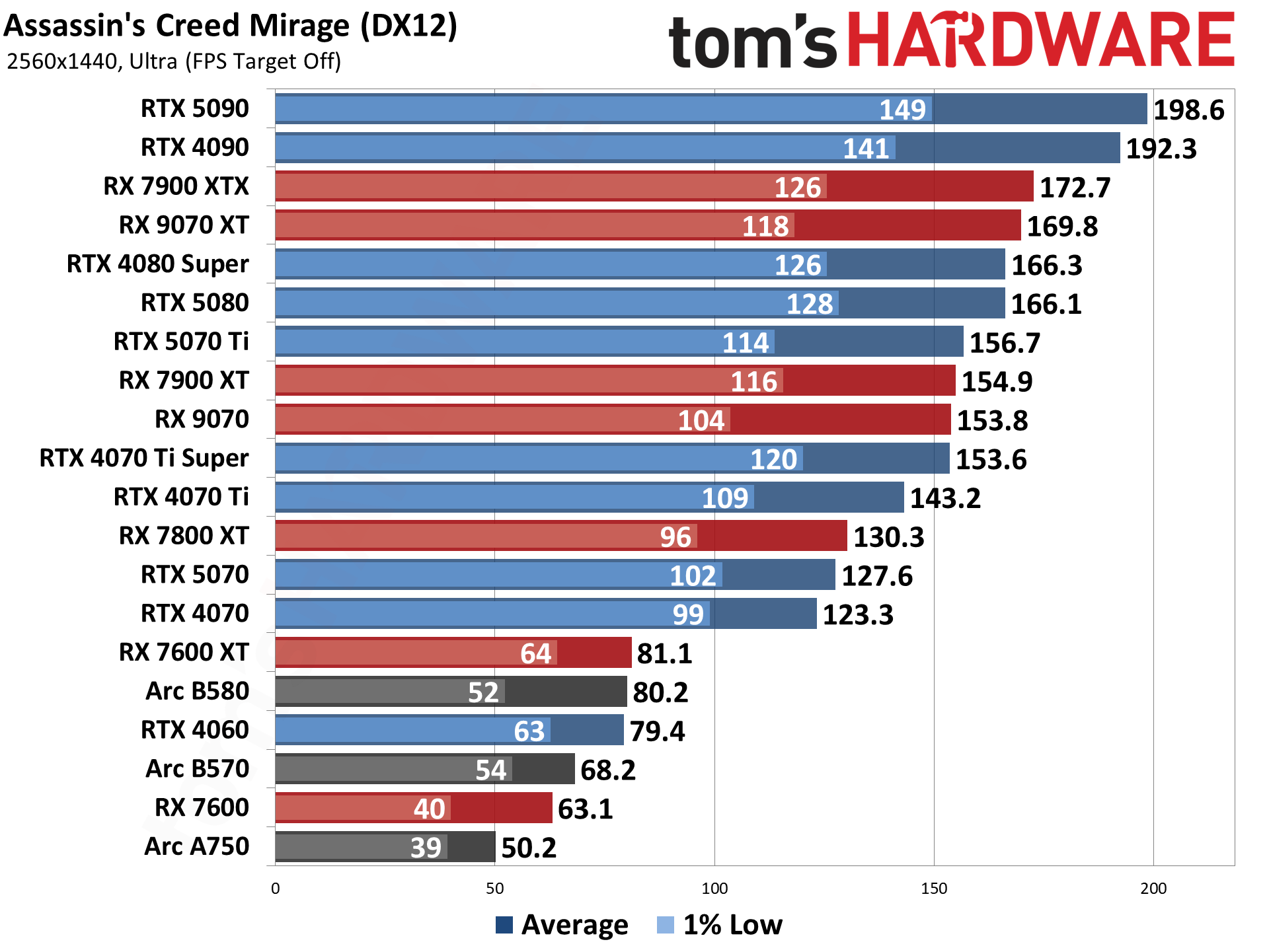
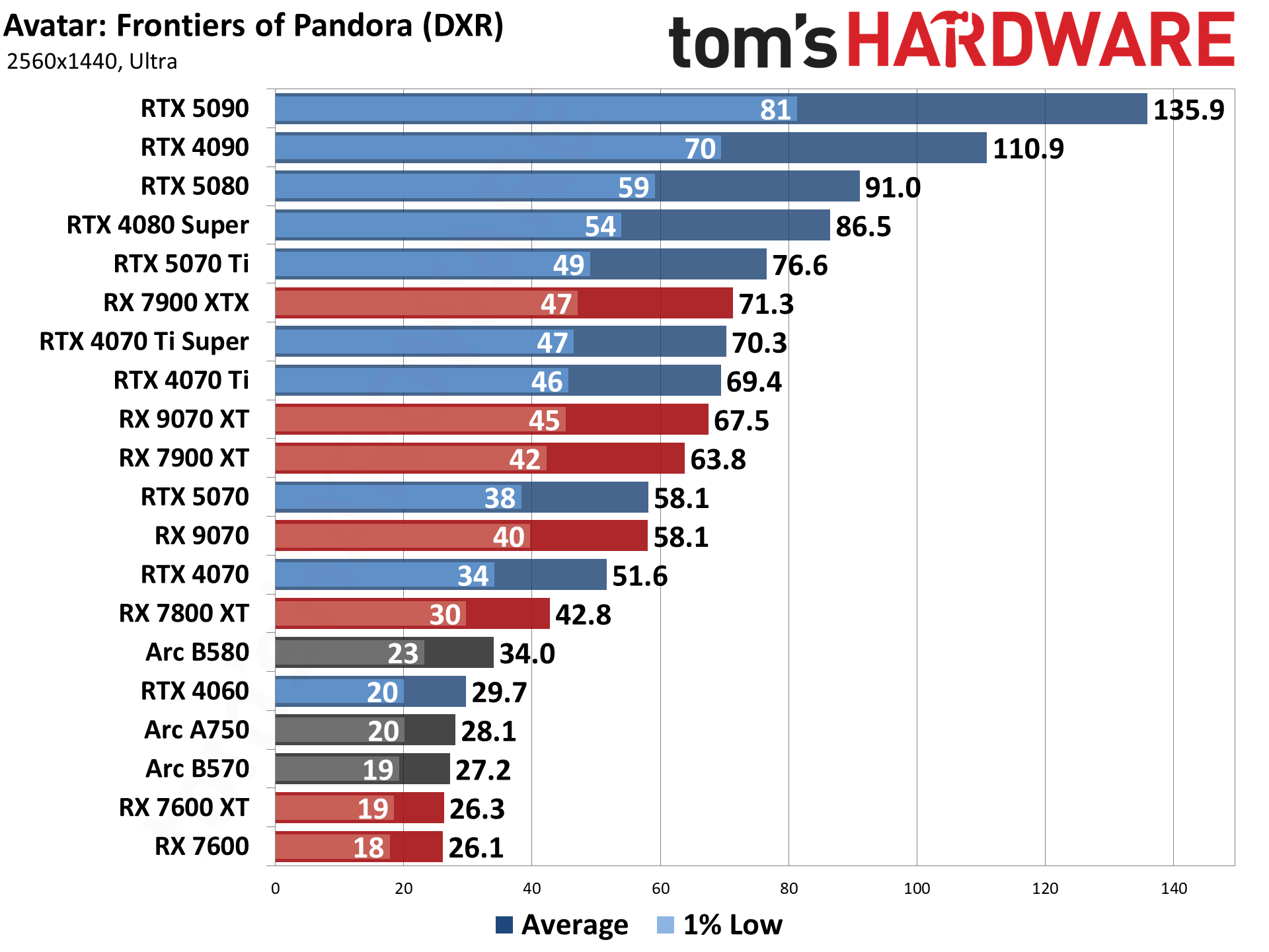
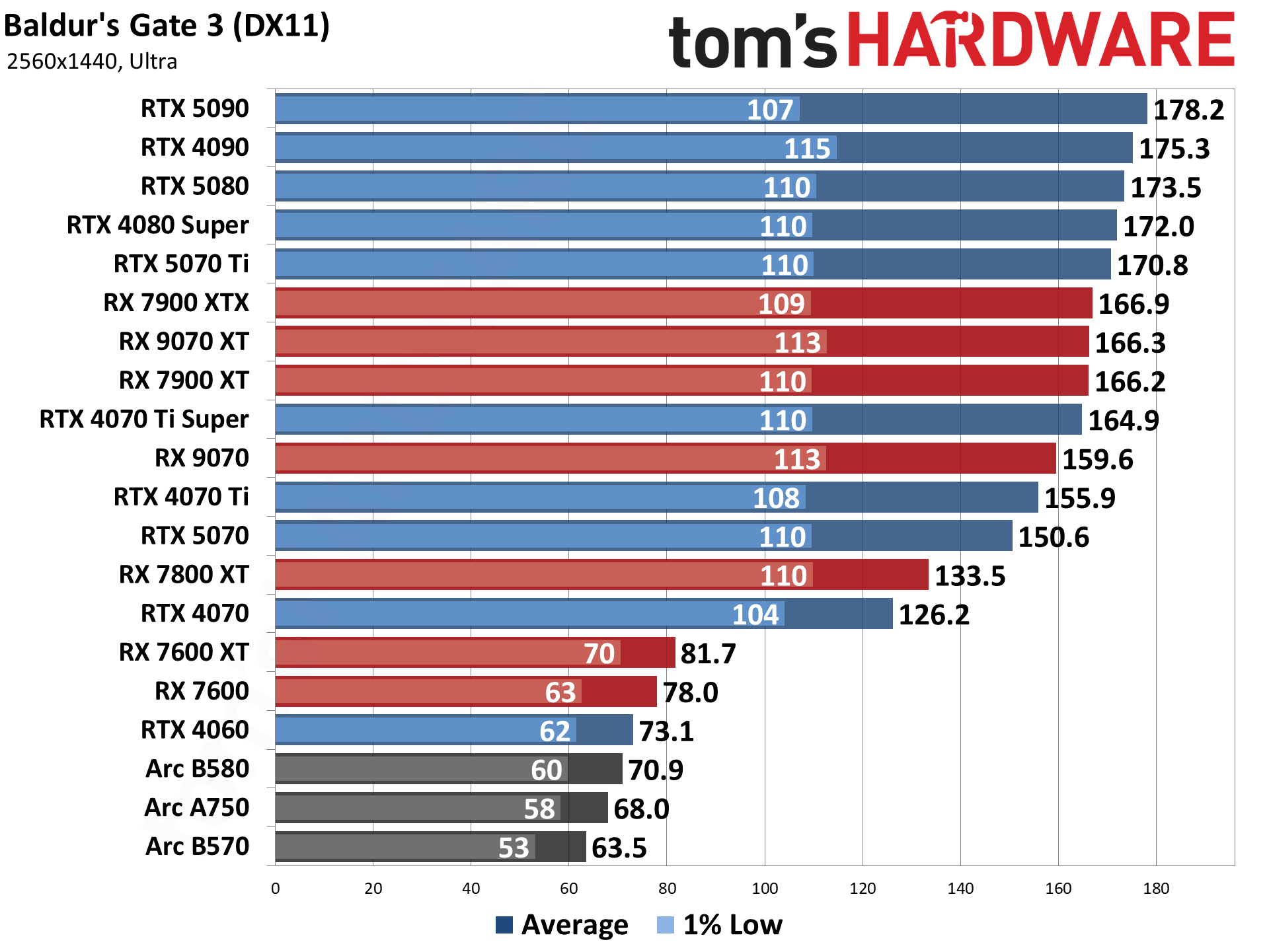
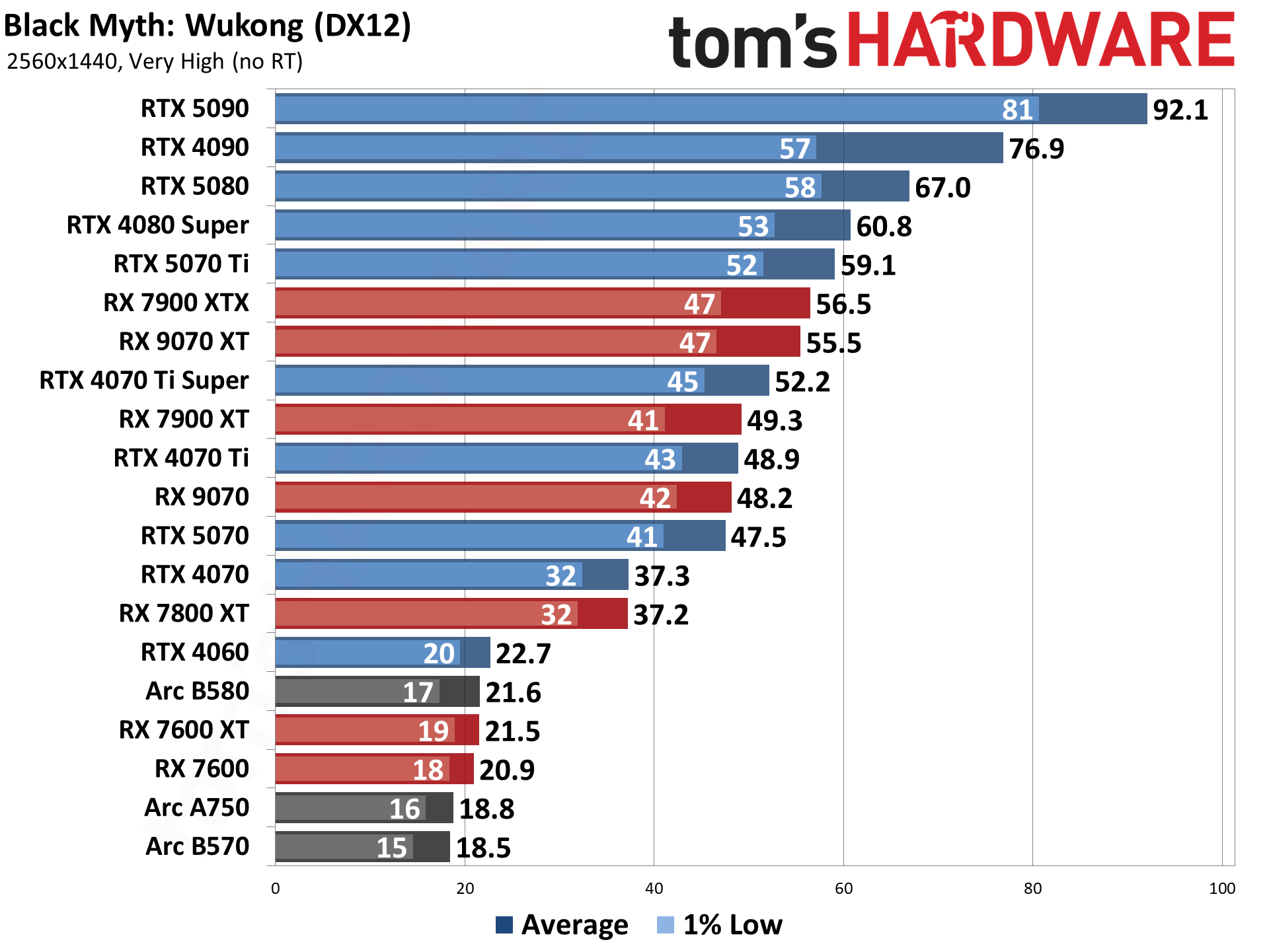
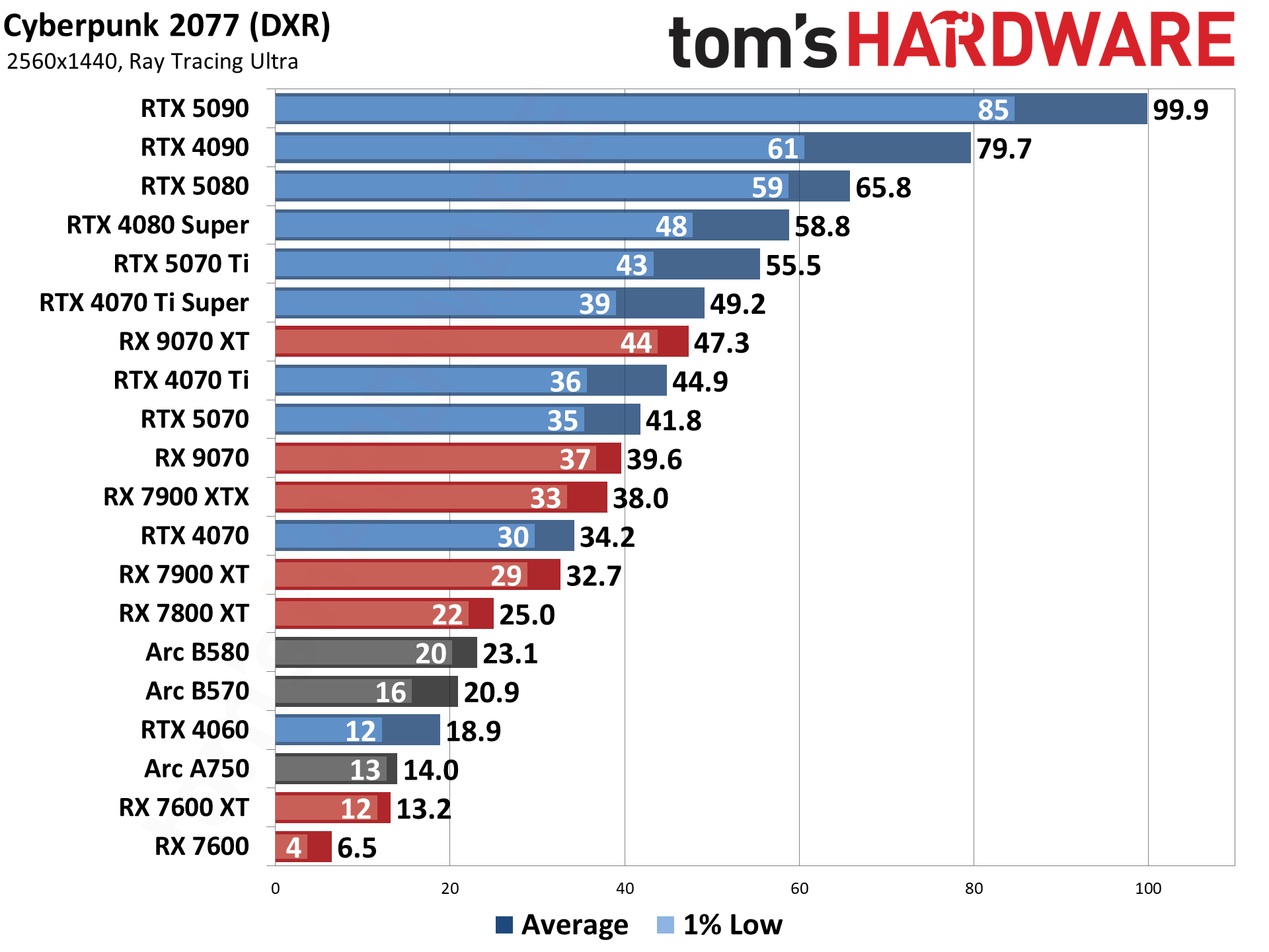

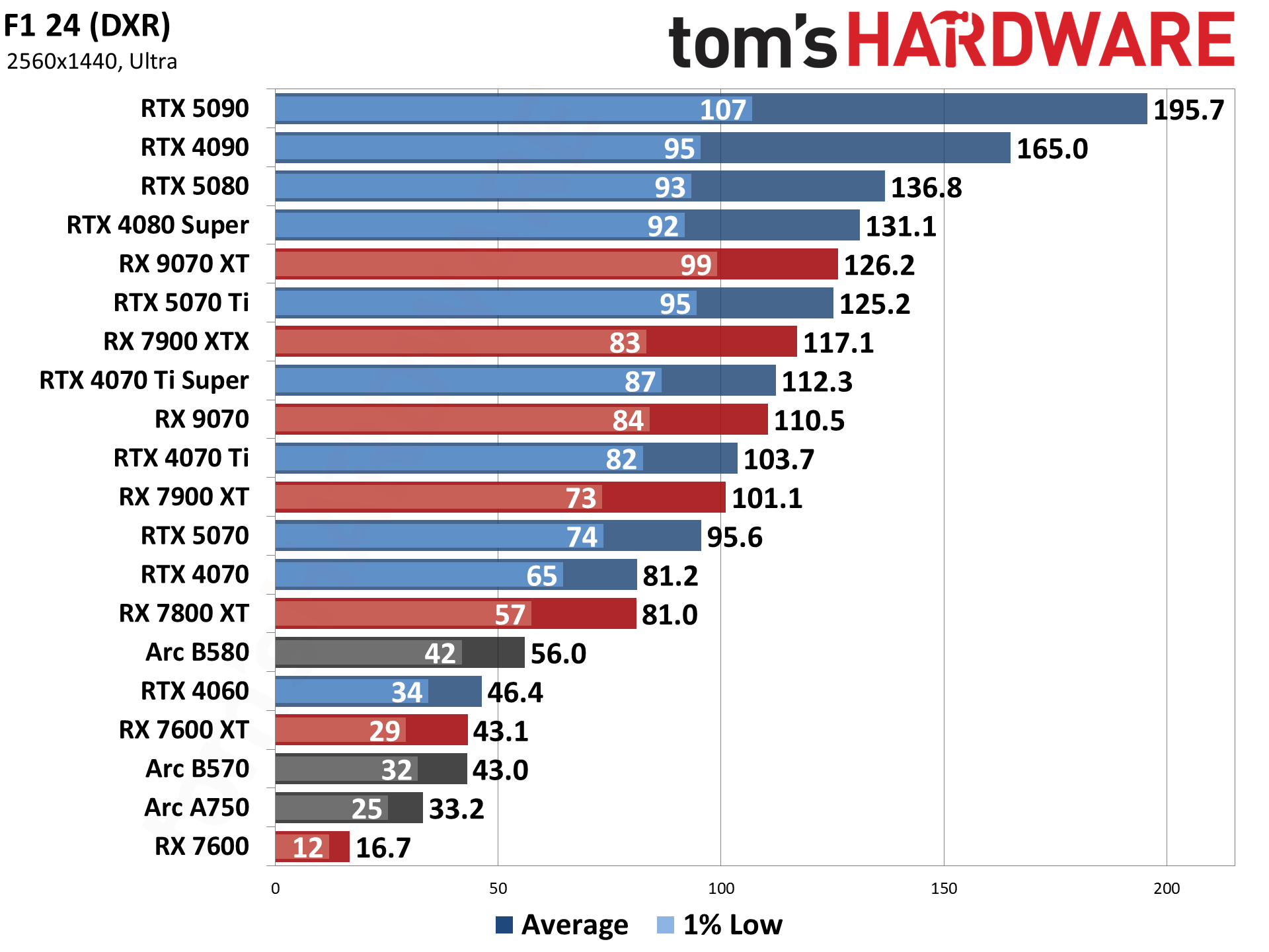
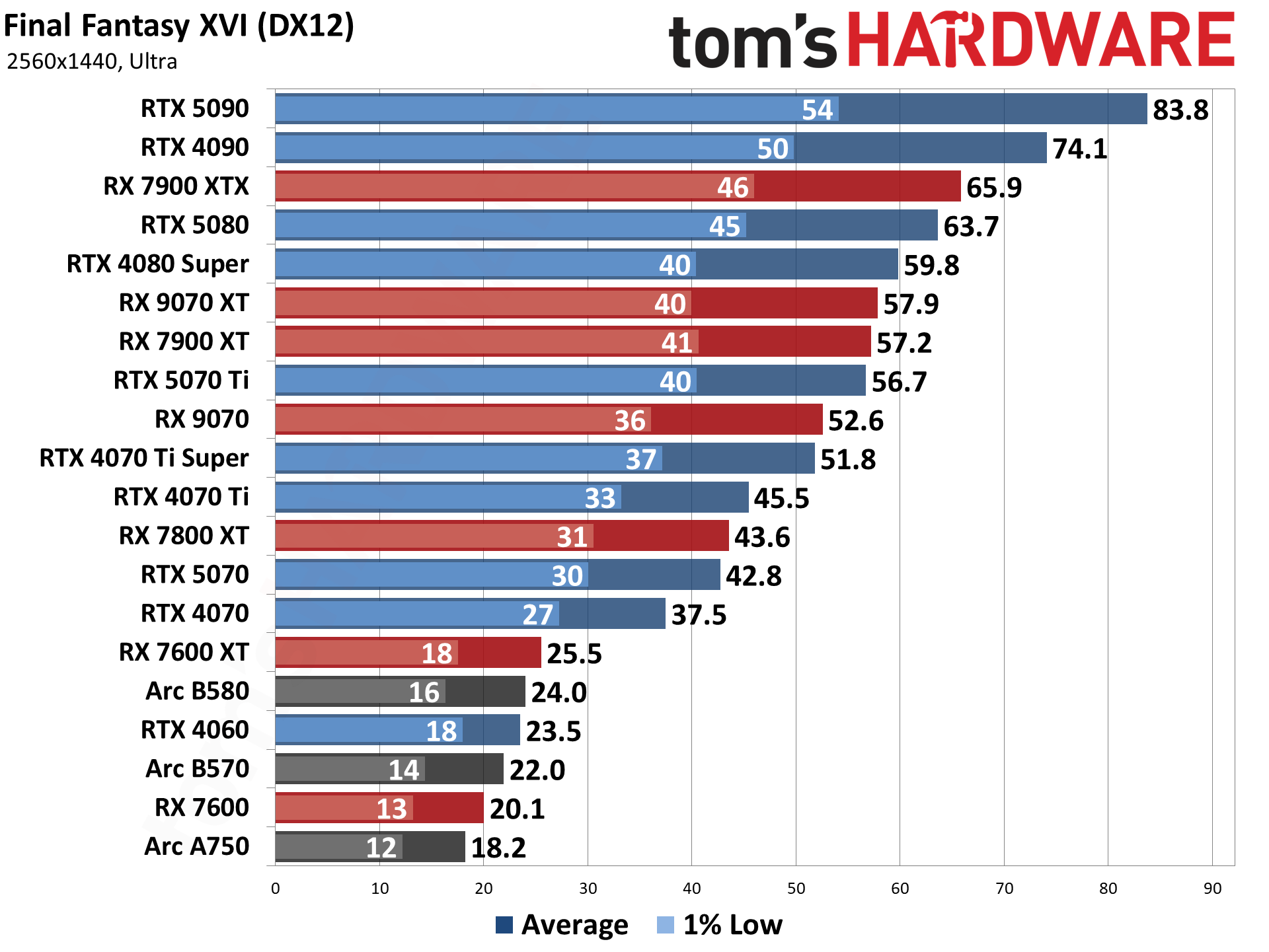
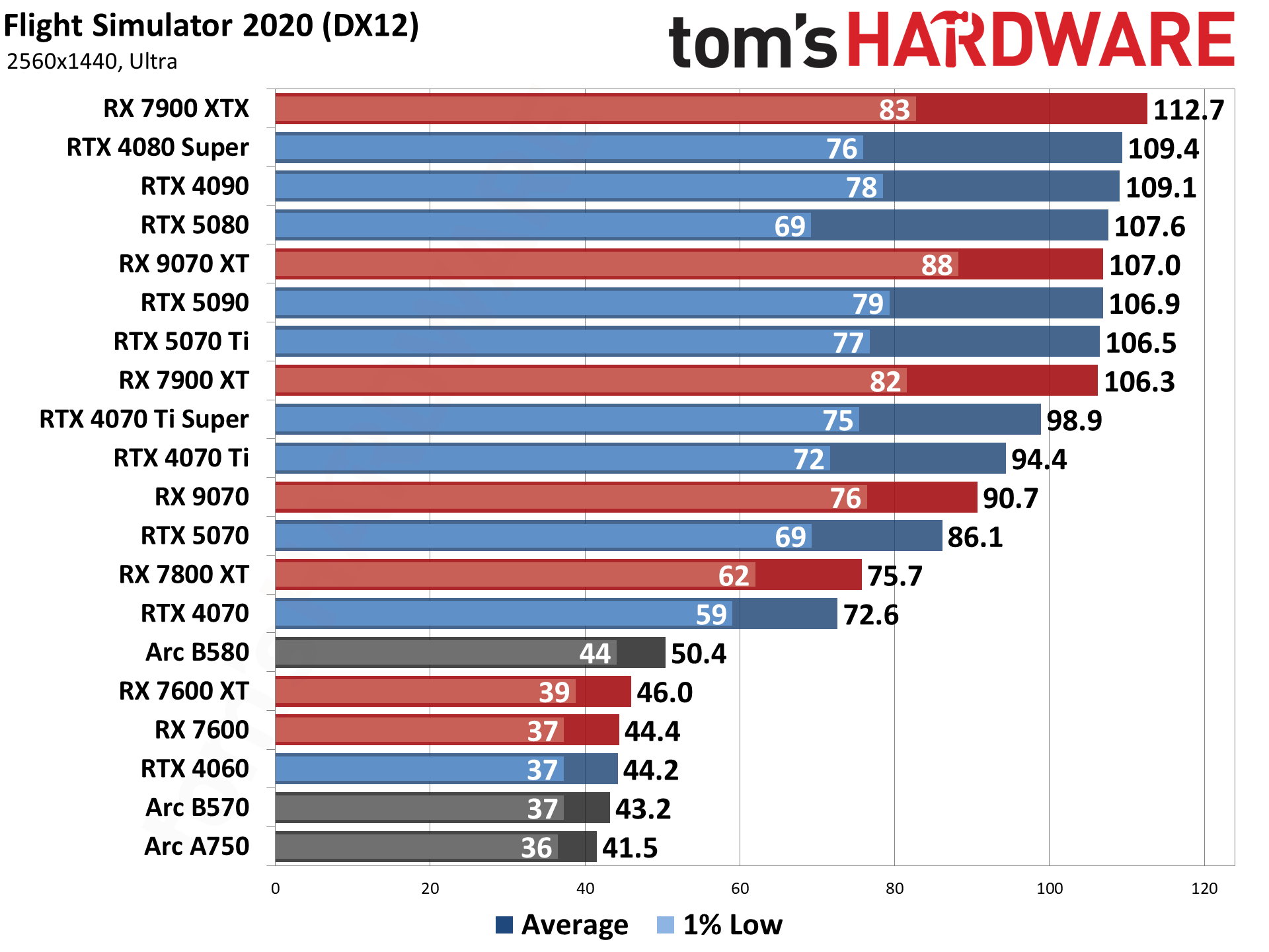
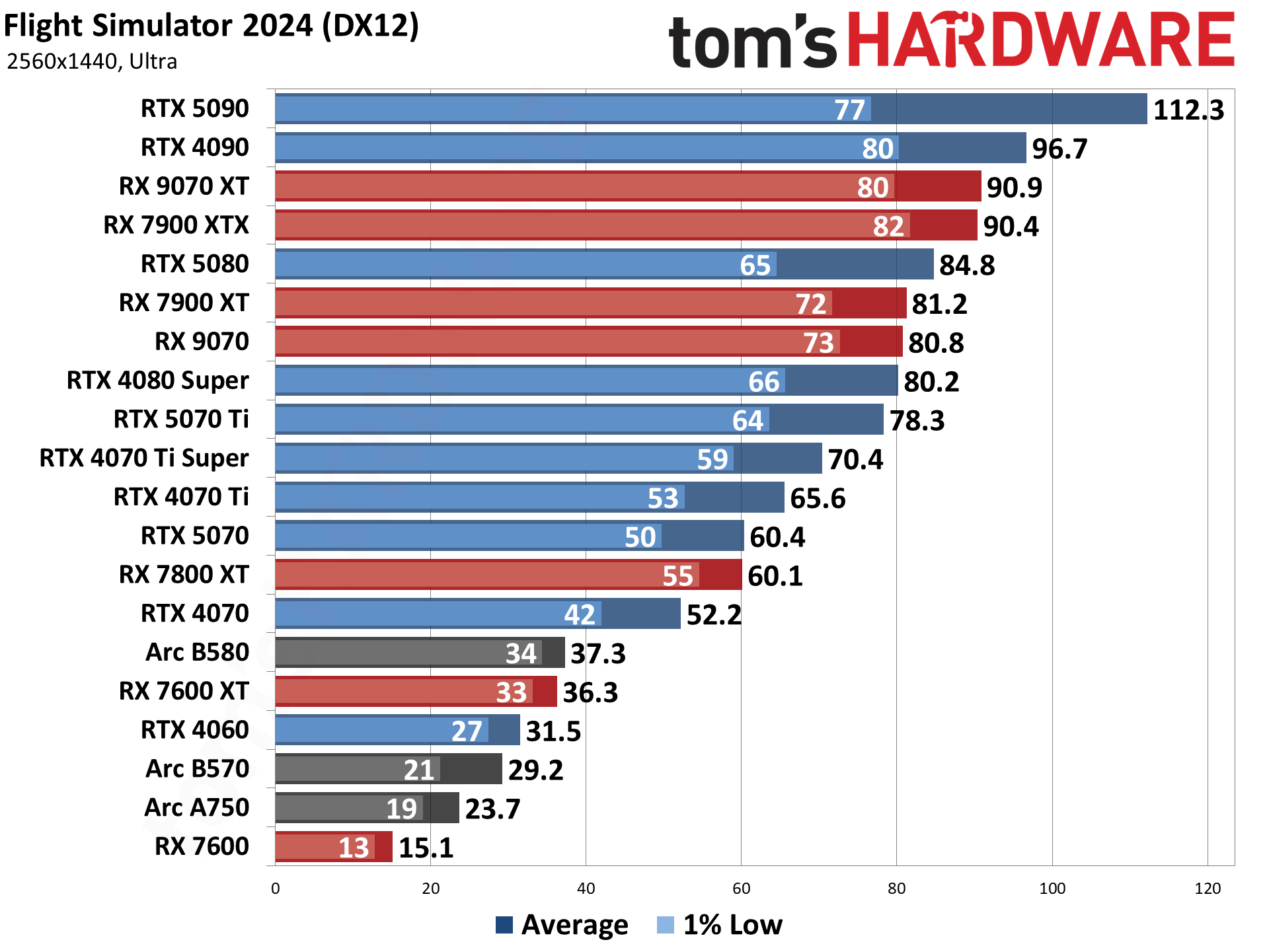
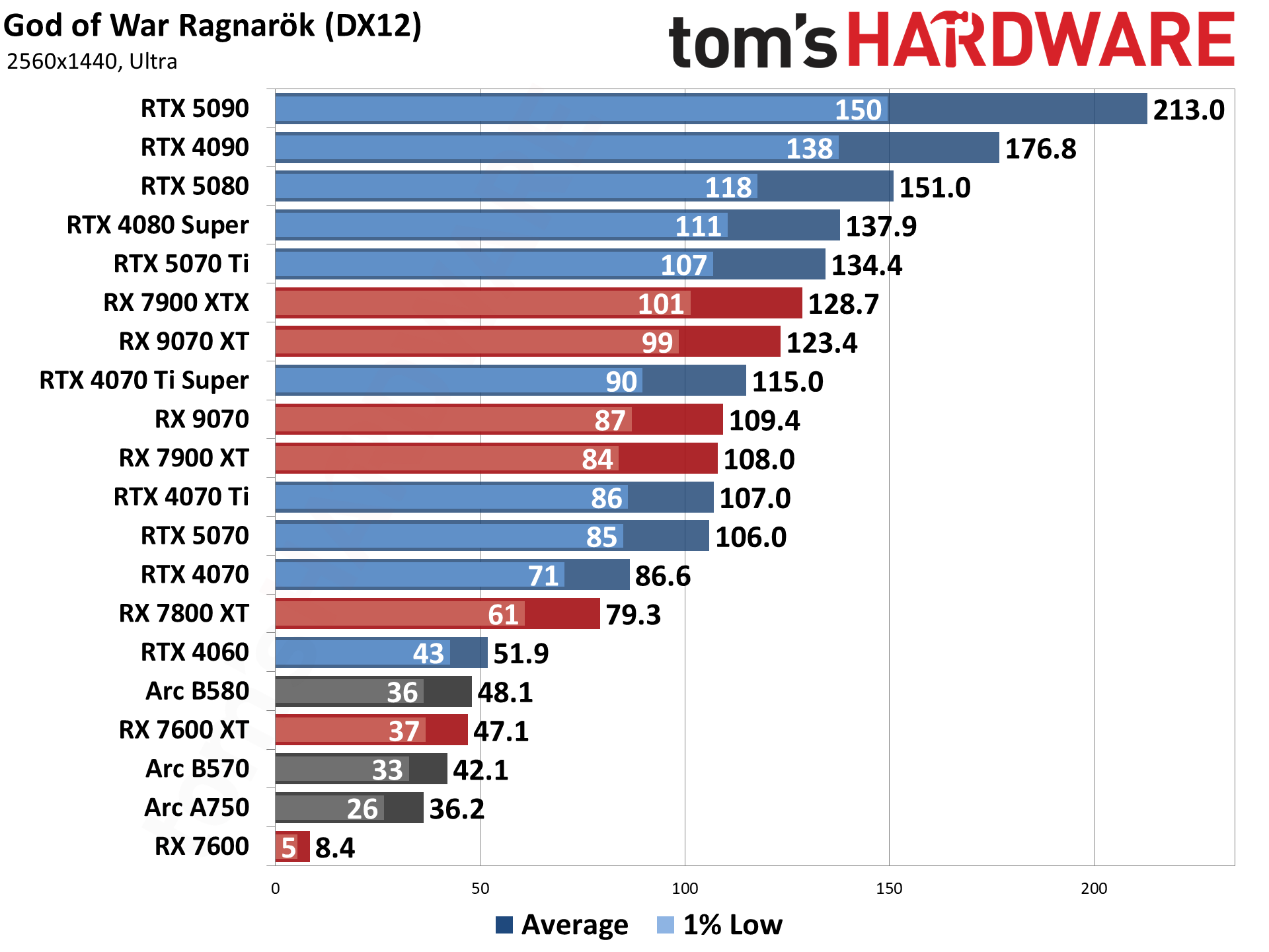
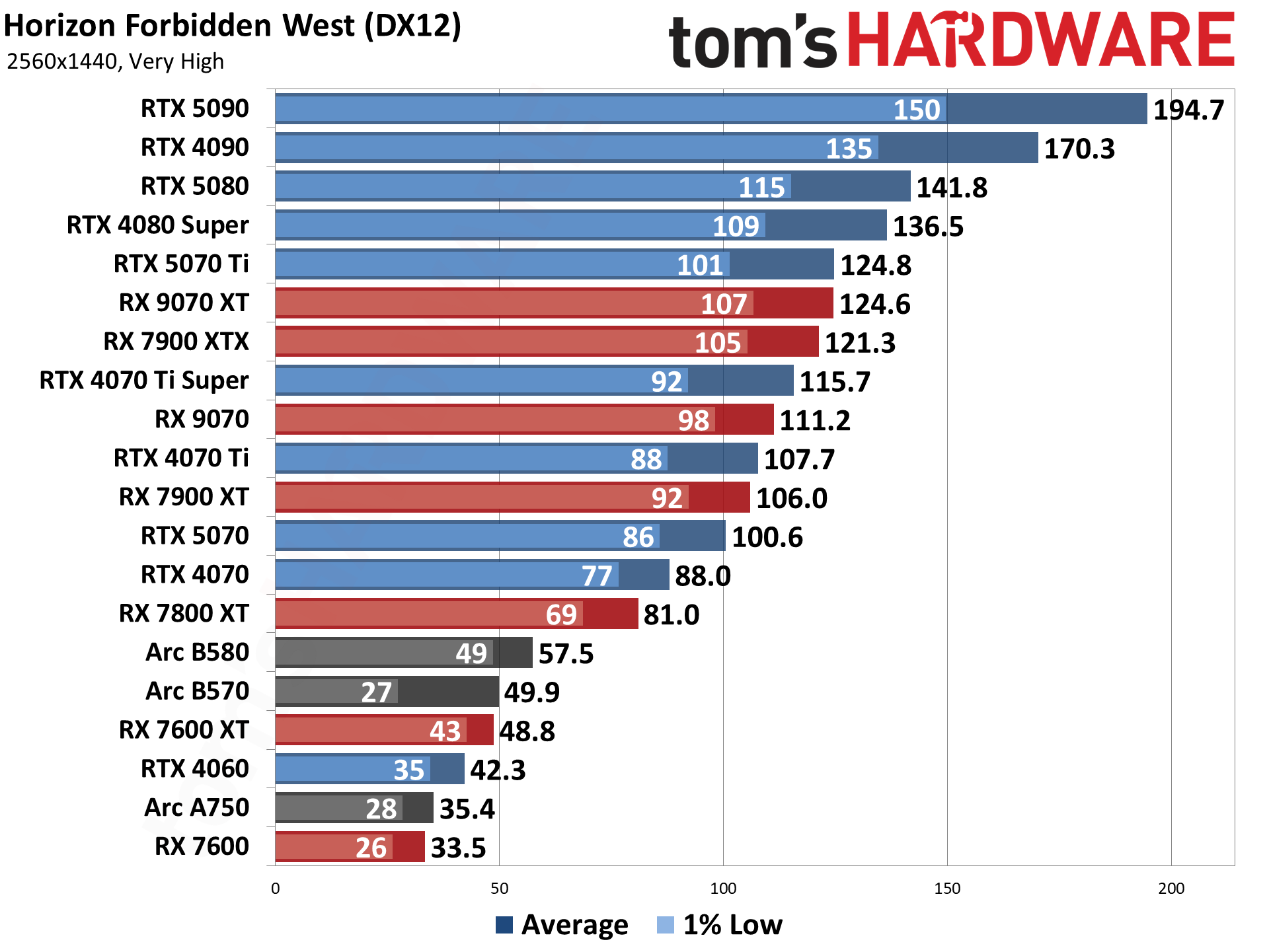
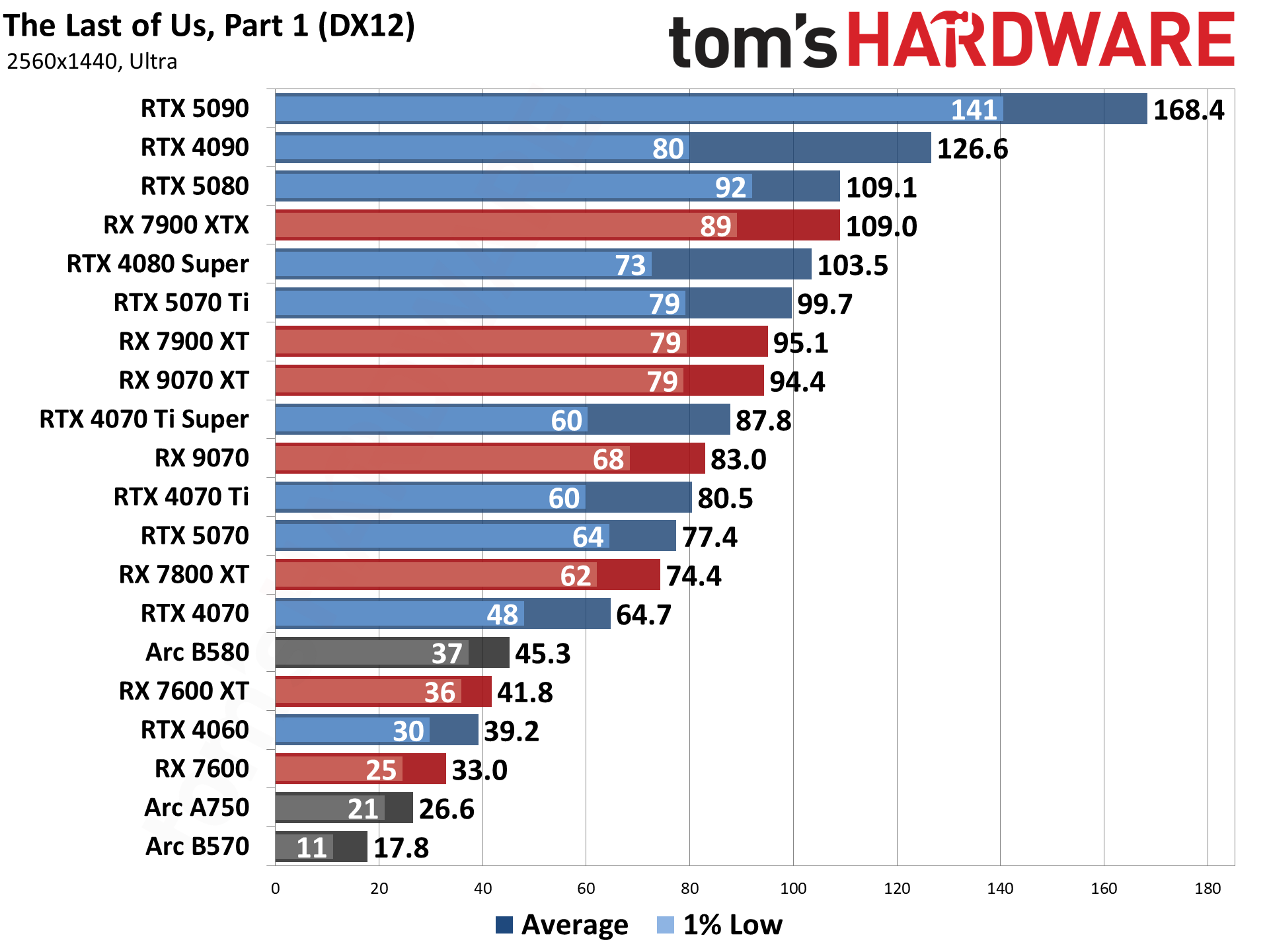
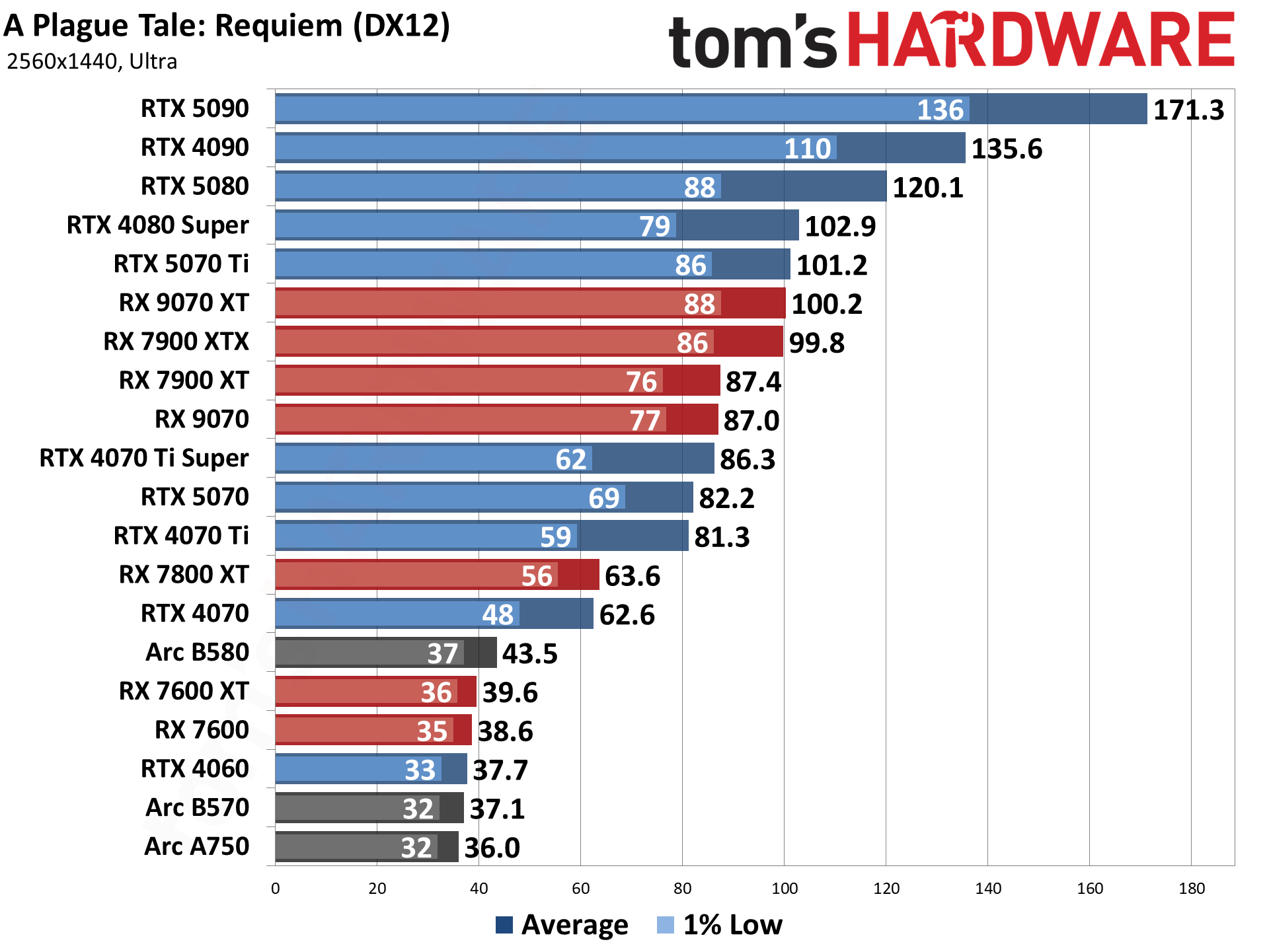
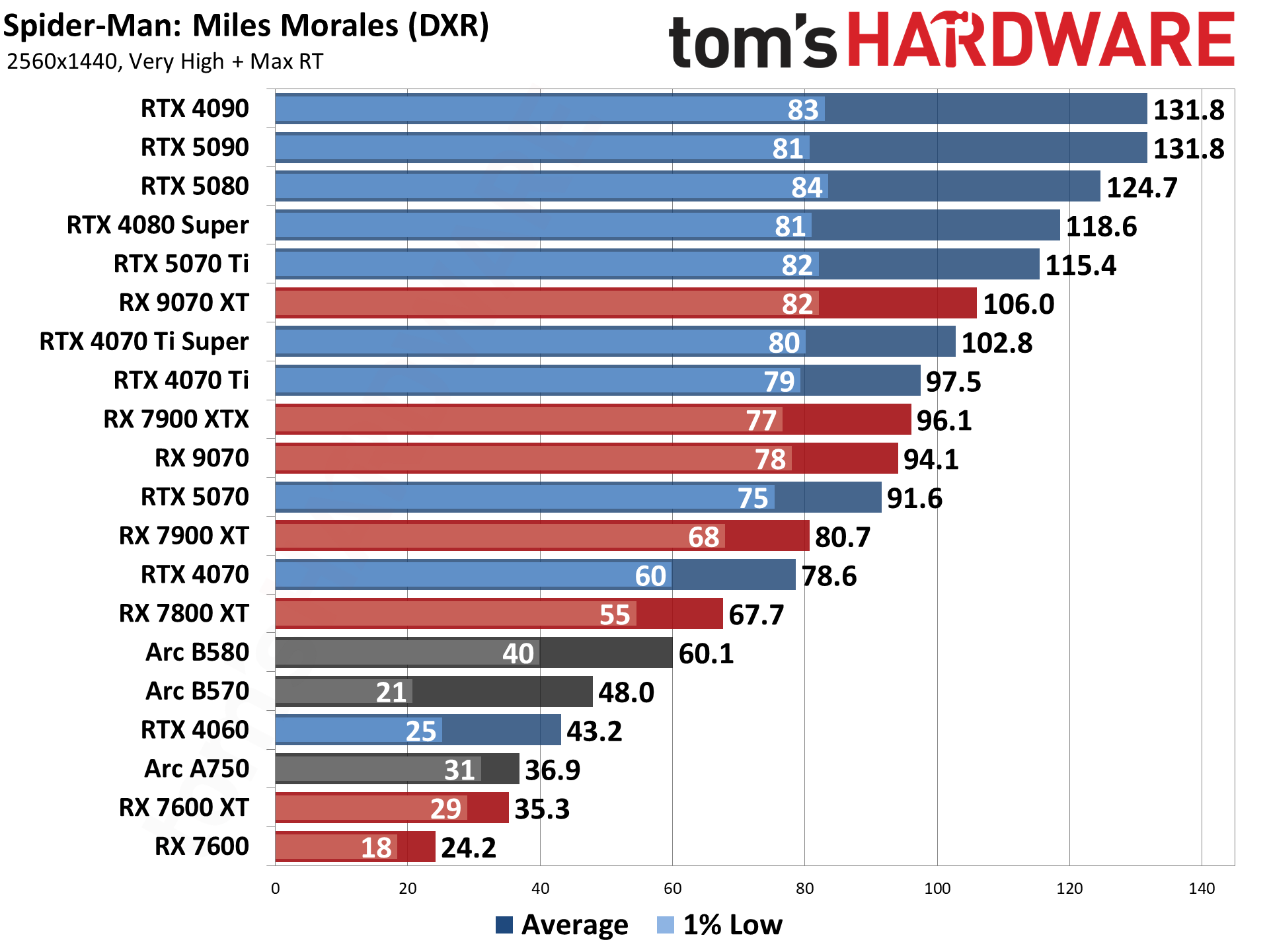
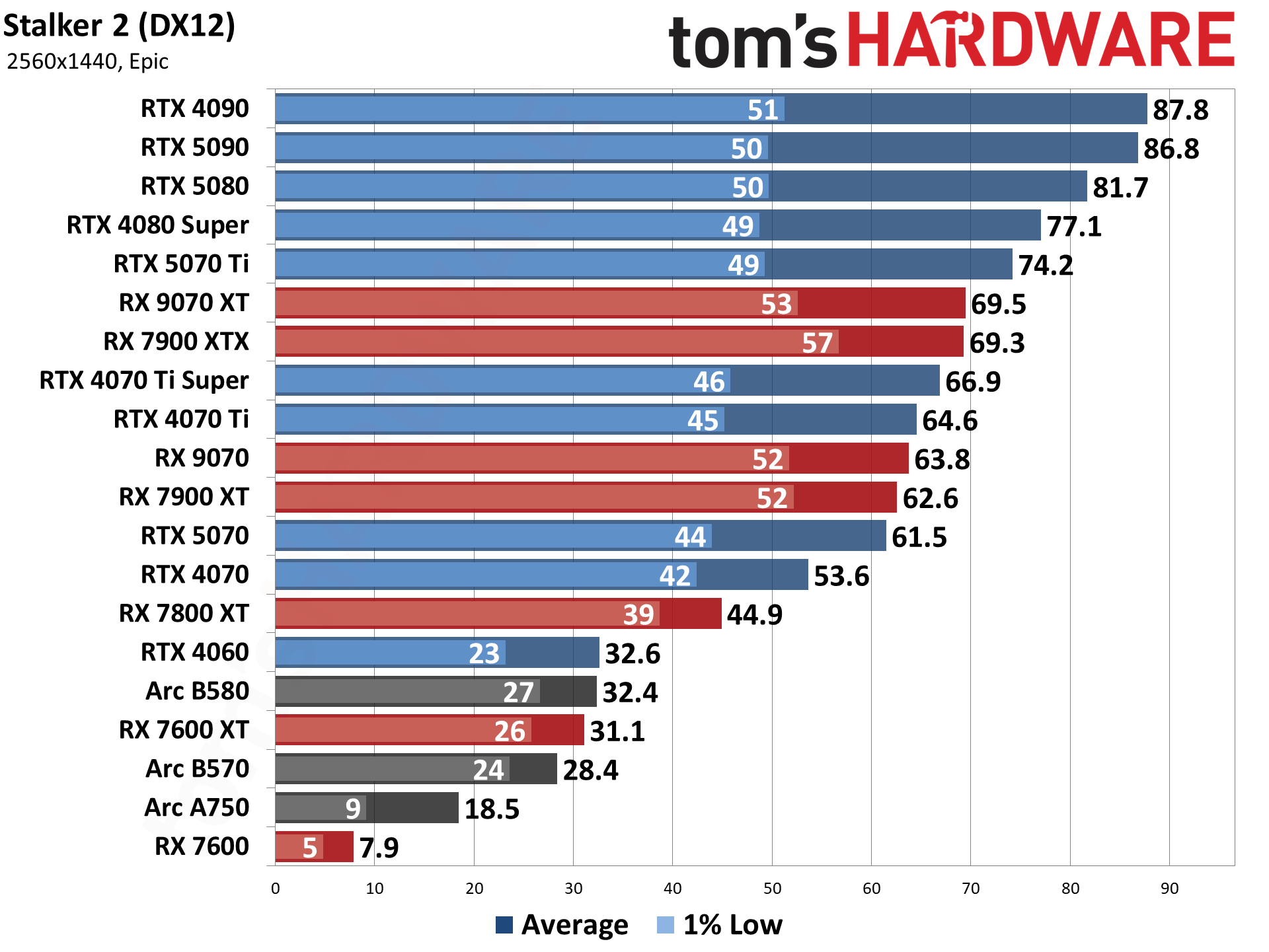
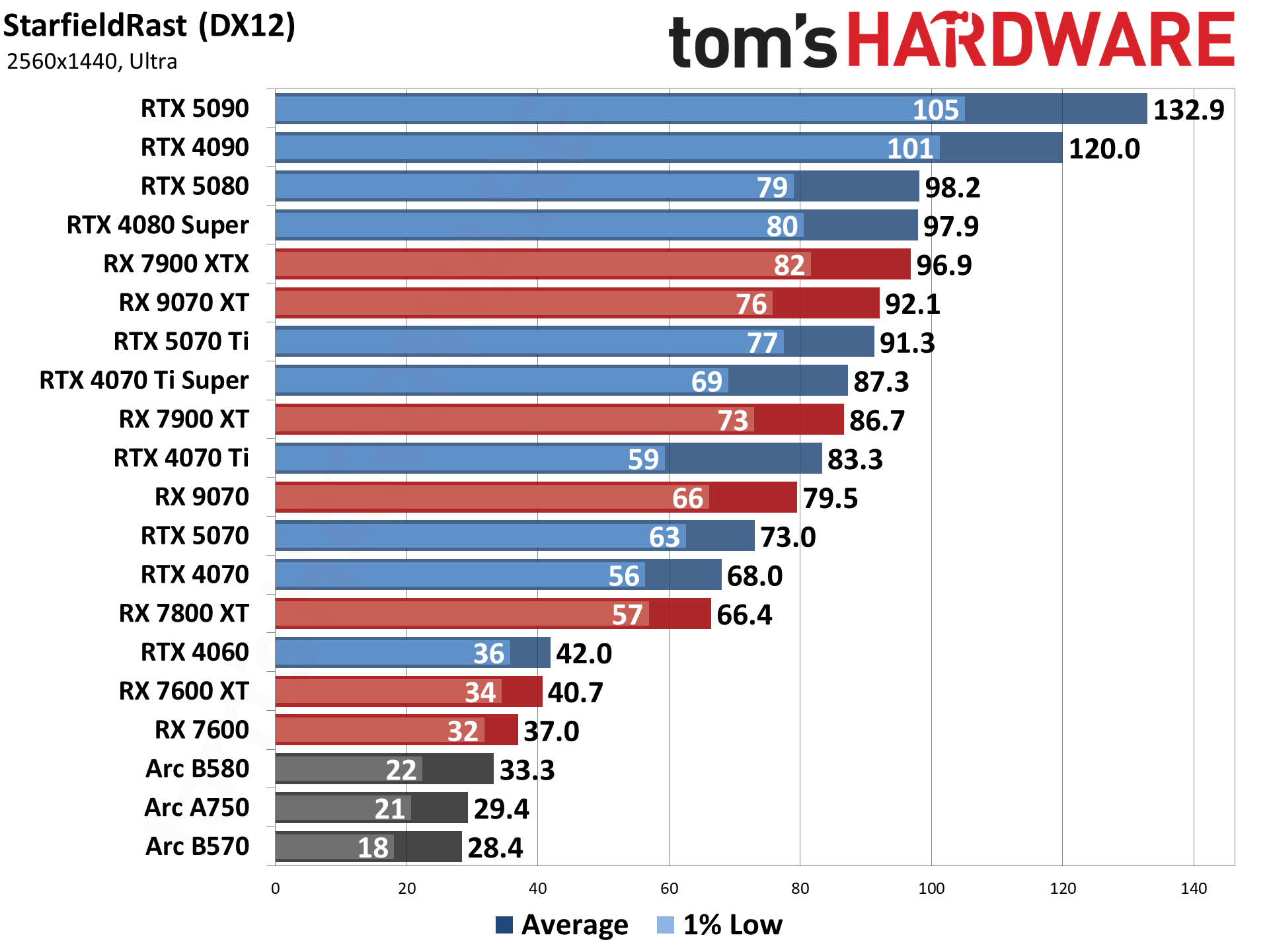
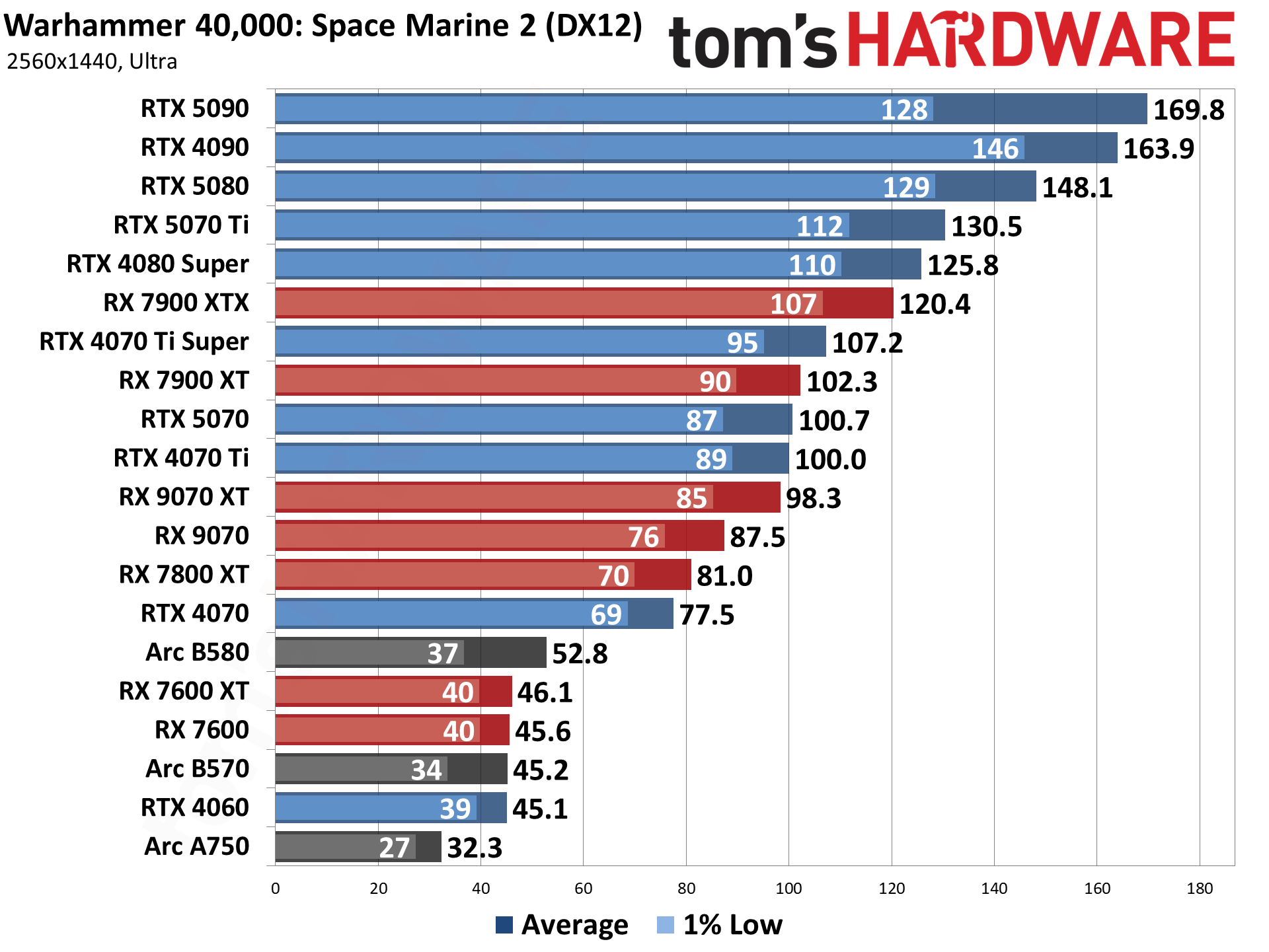
Best Graphics Cards — 4K Ultra
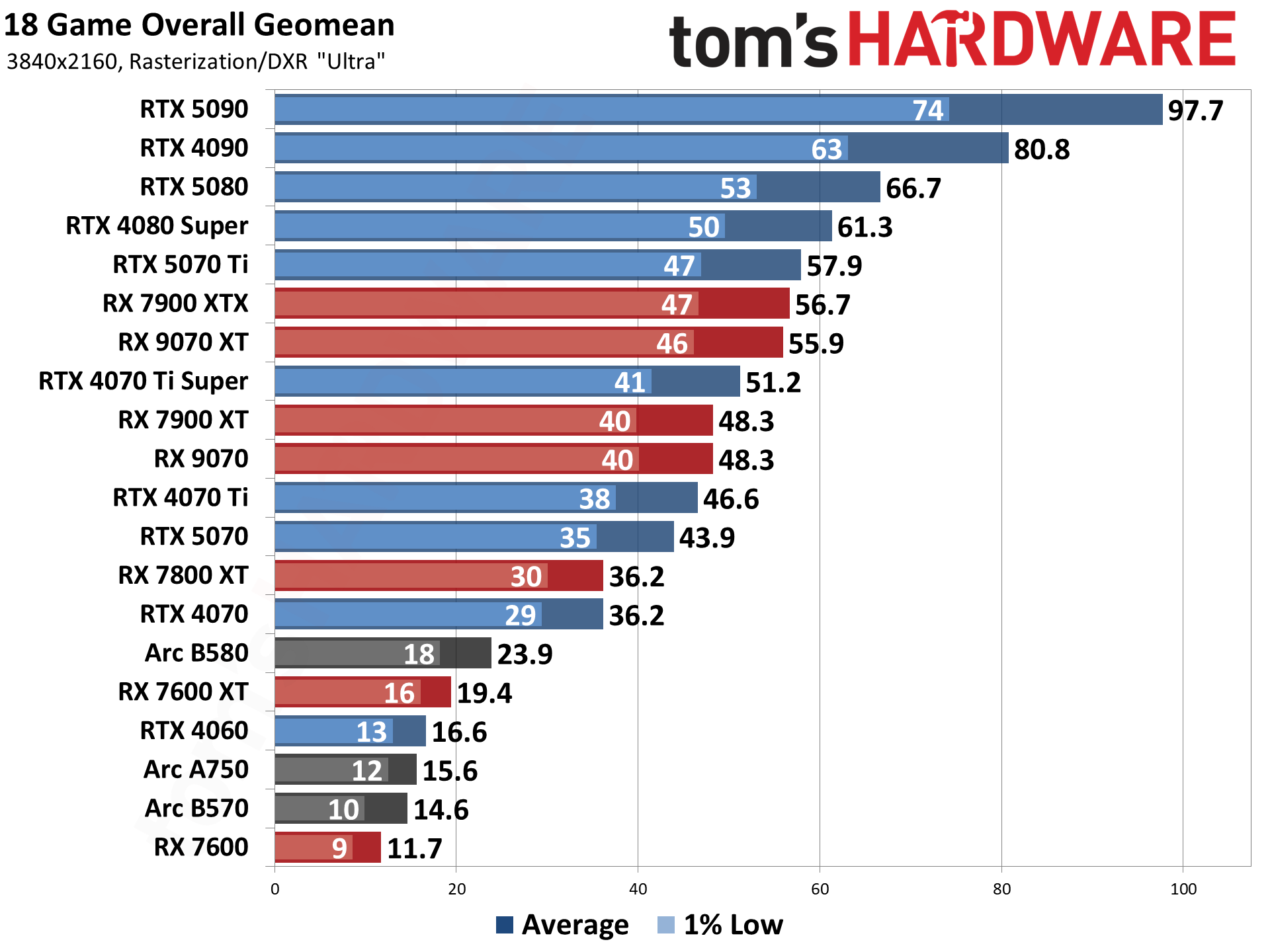
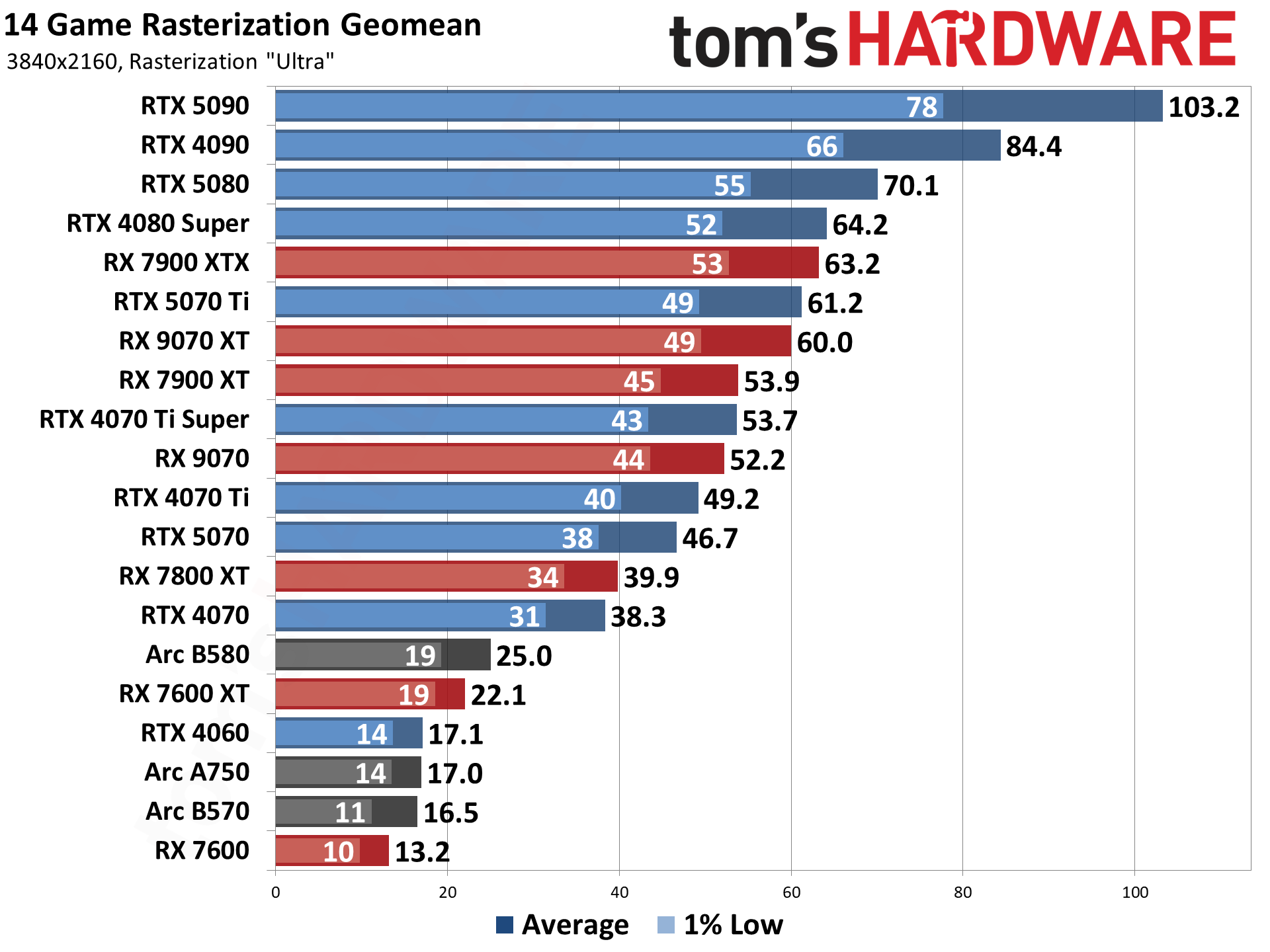
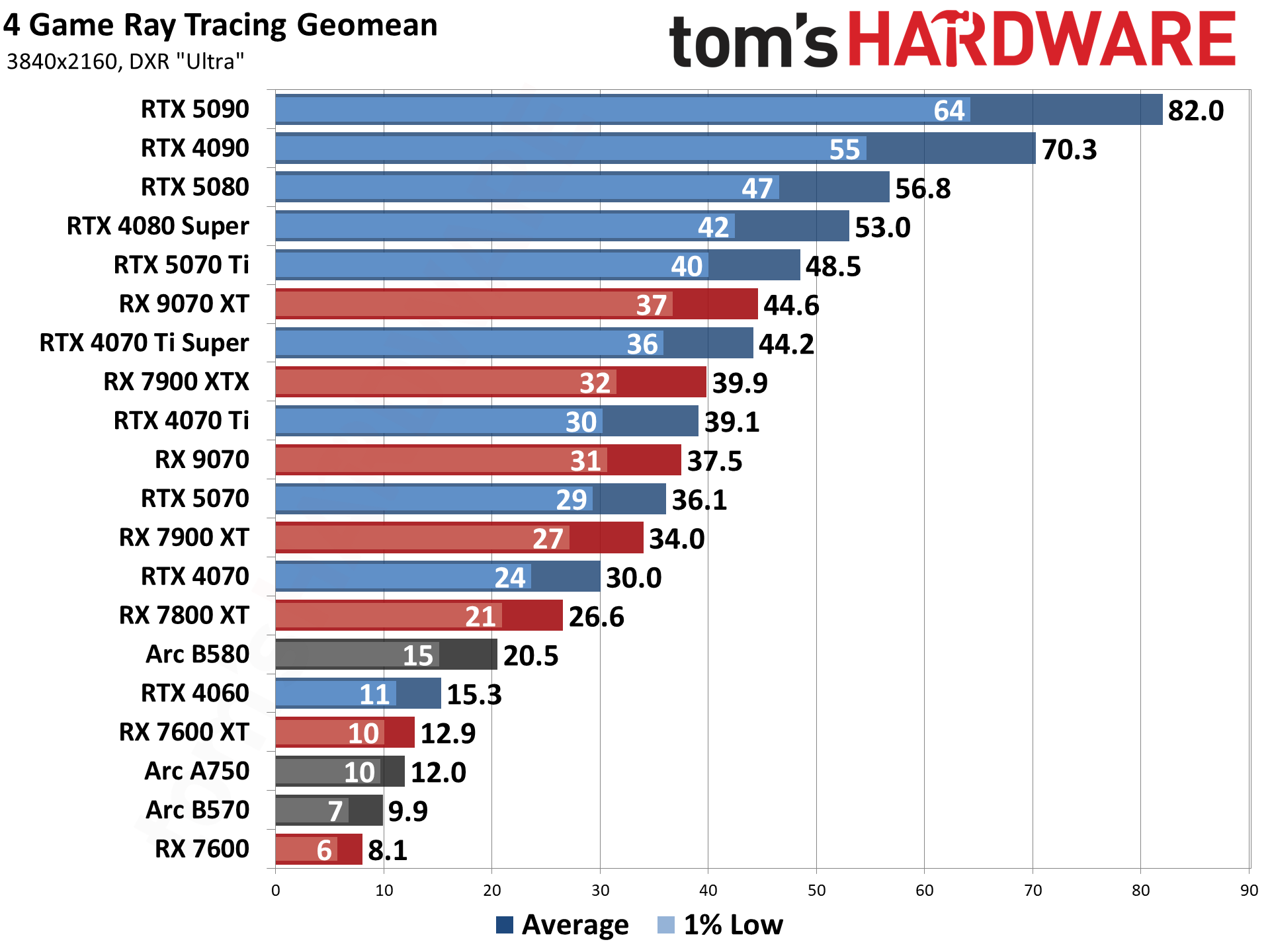
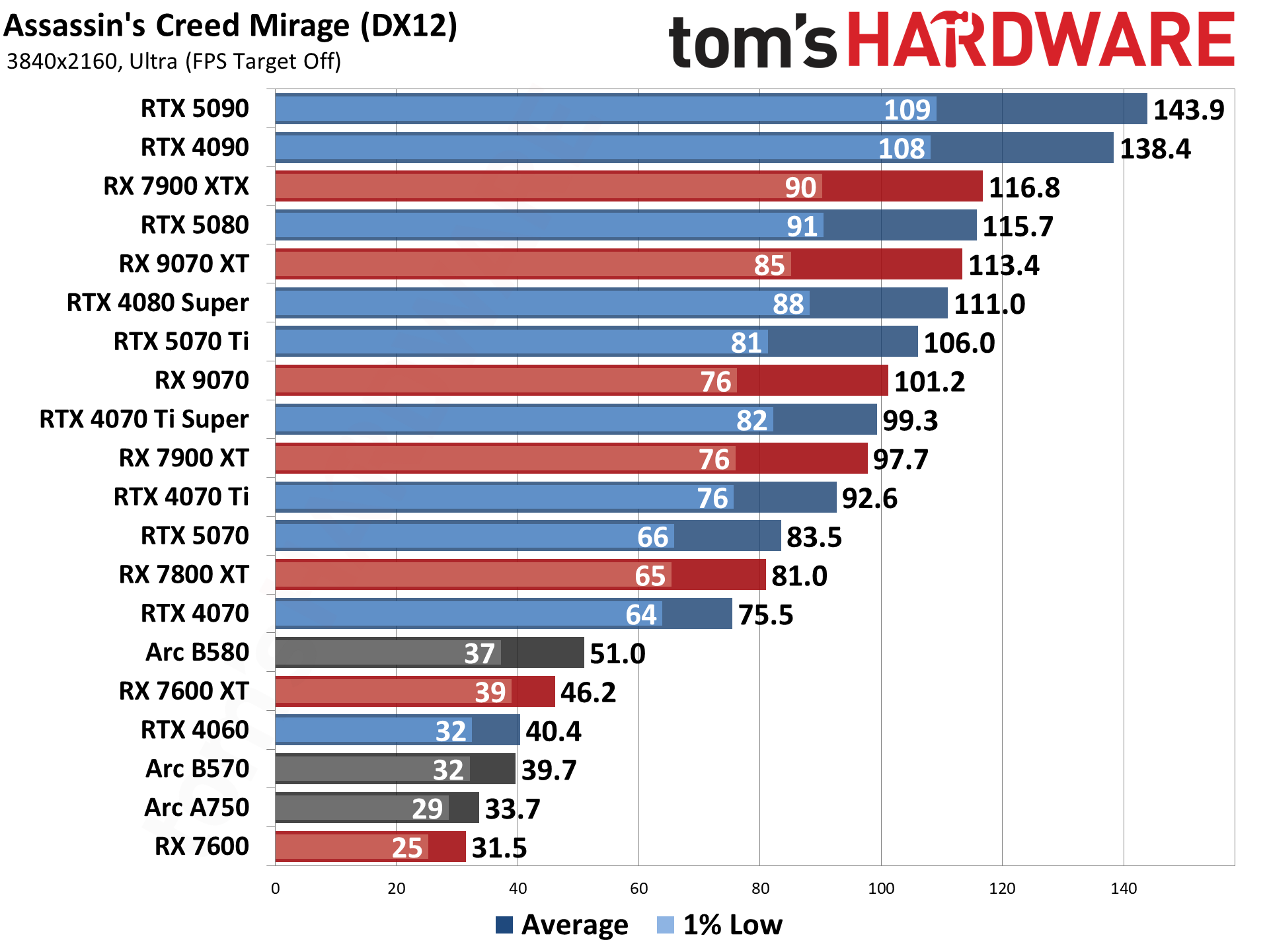
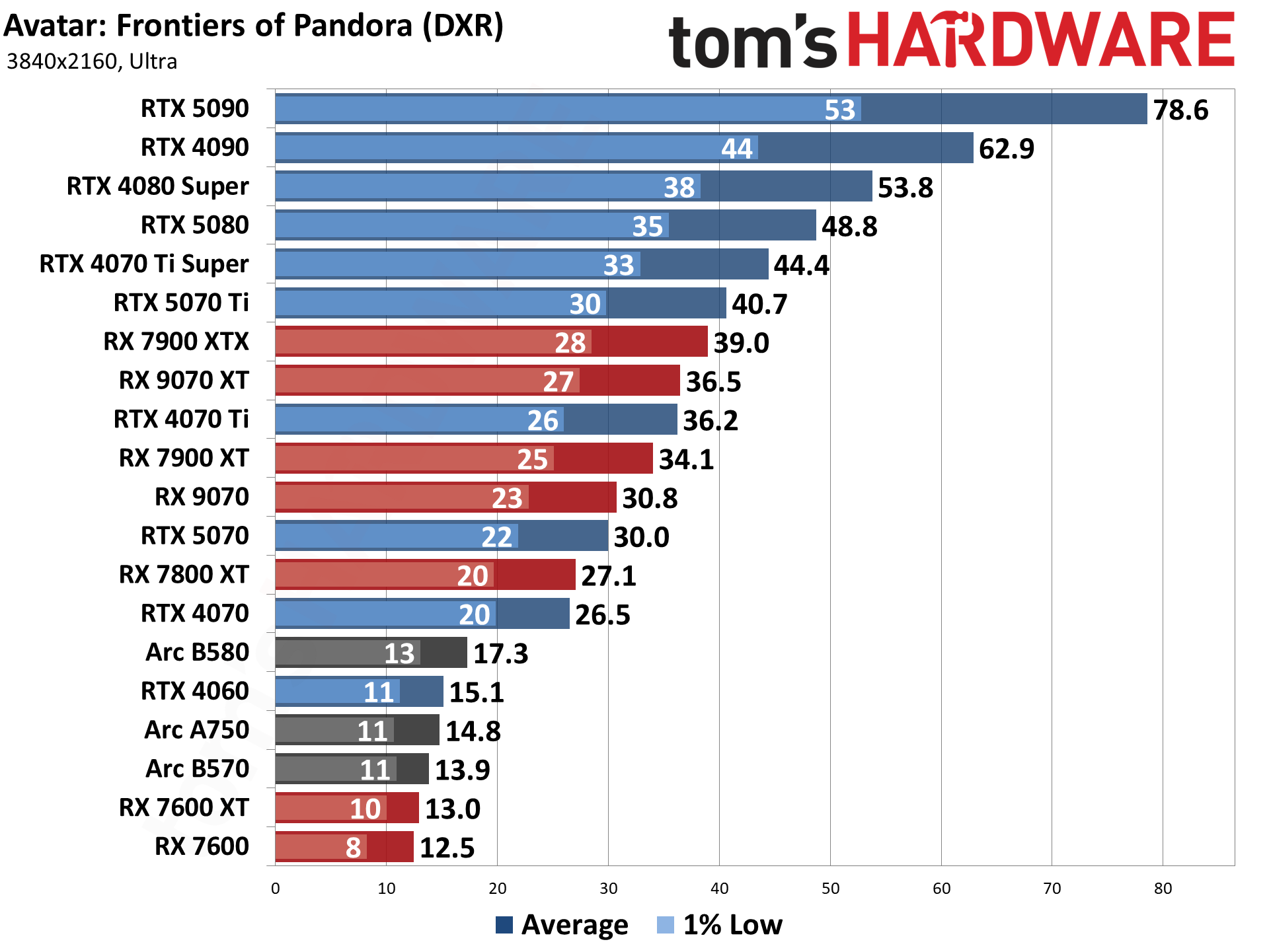
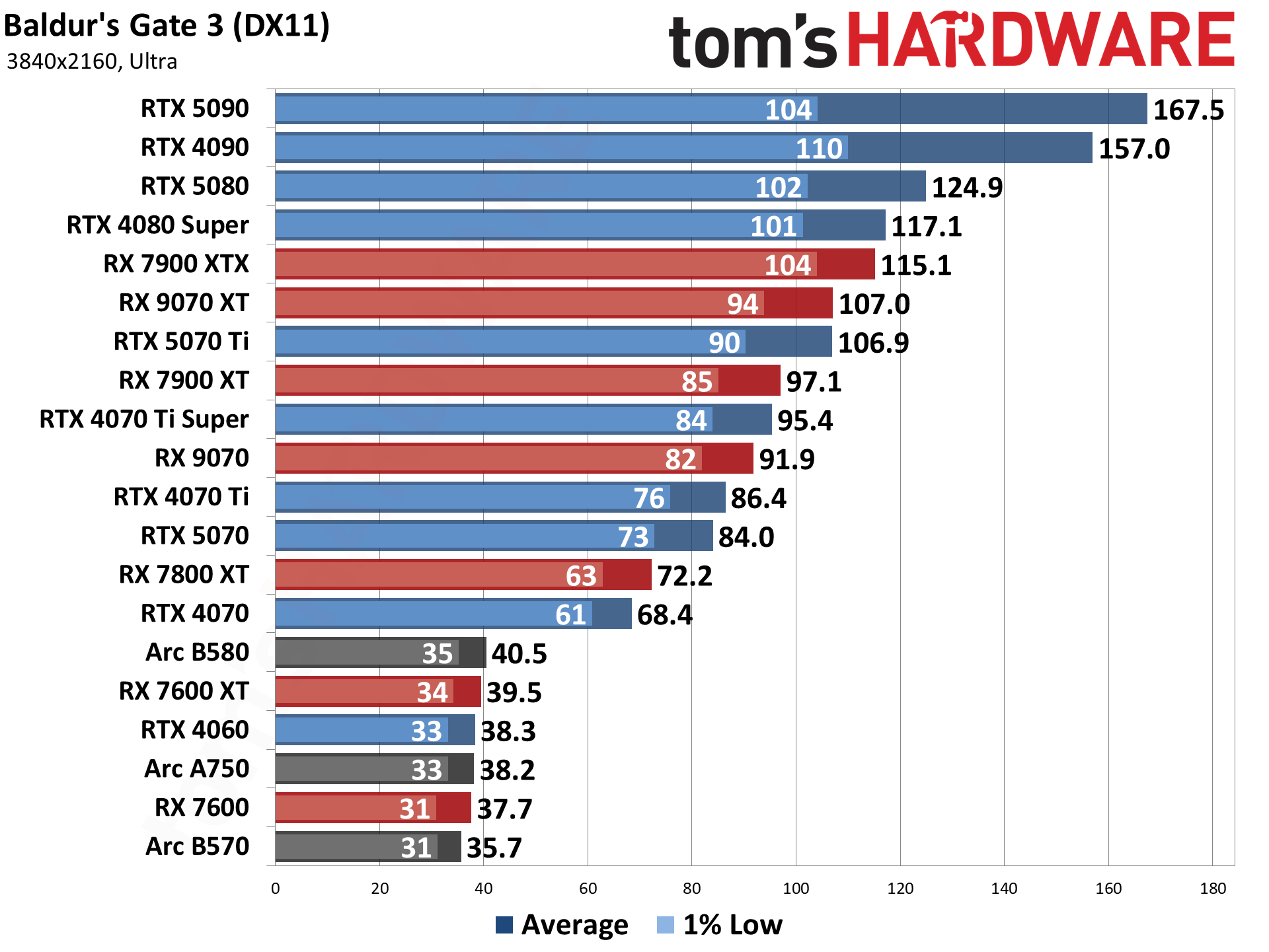
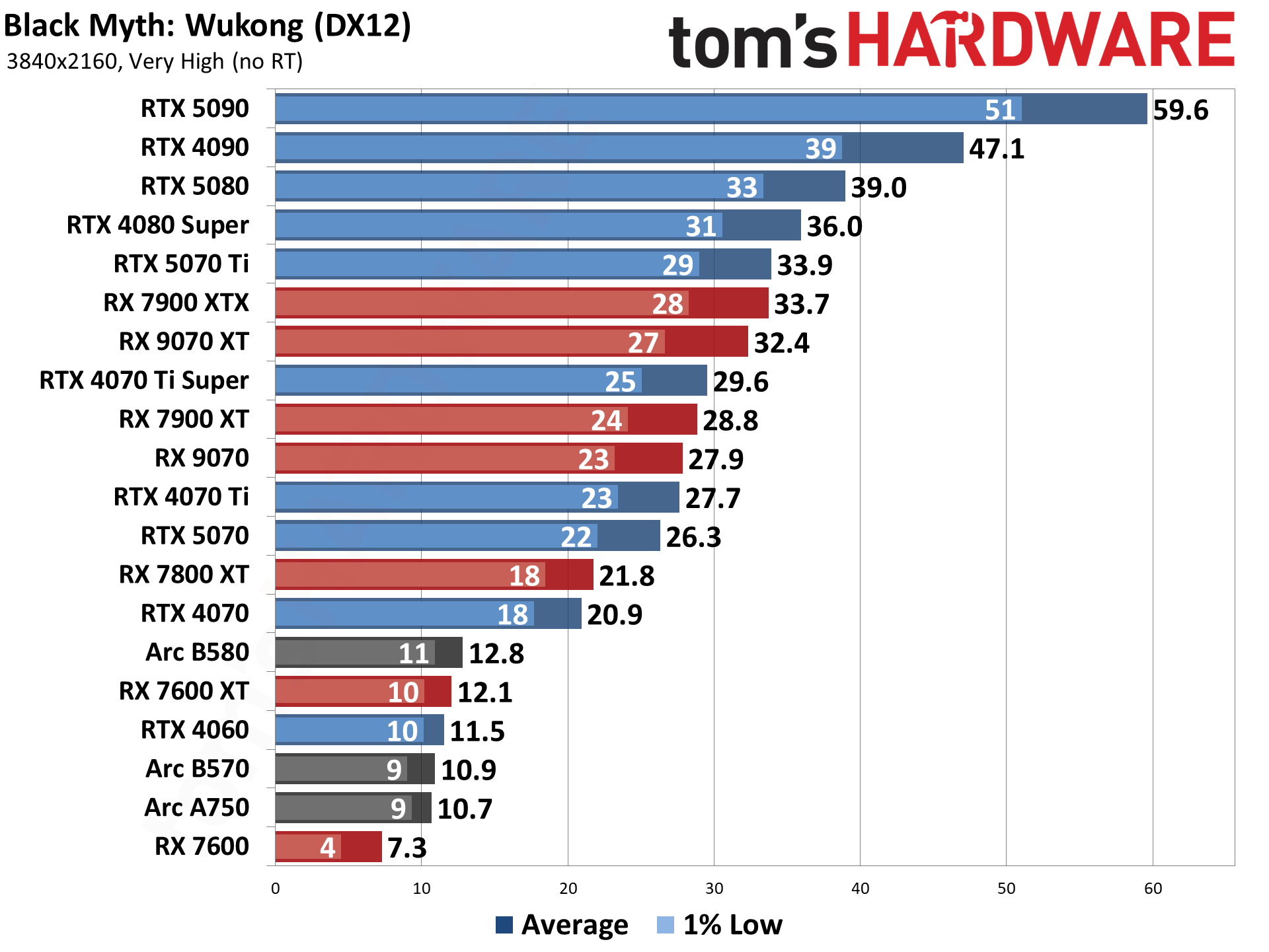
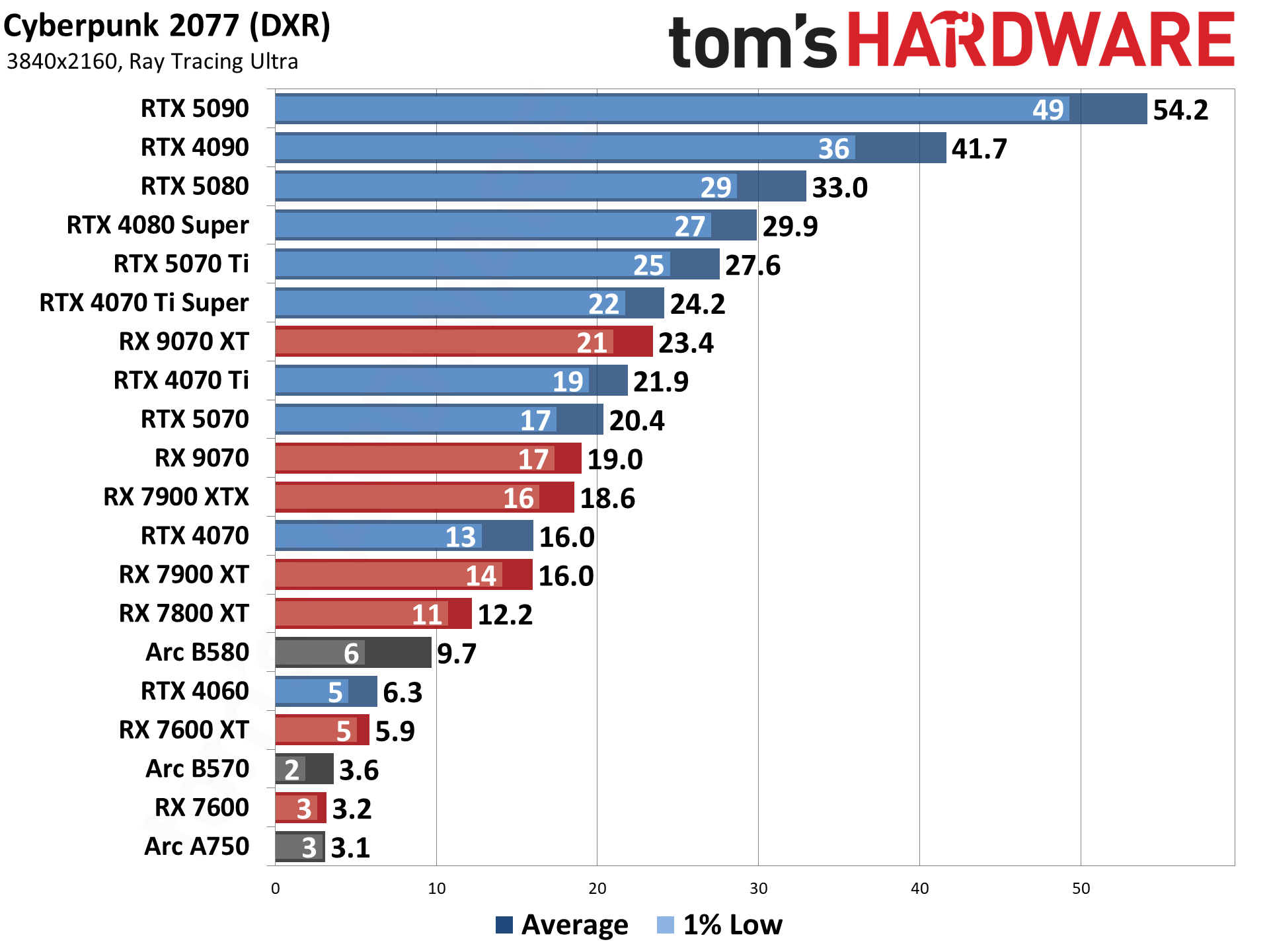
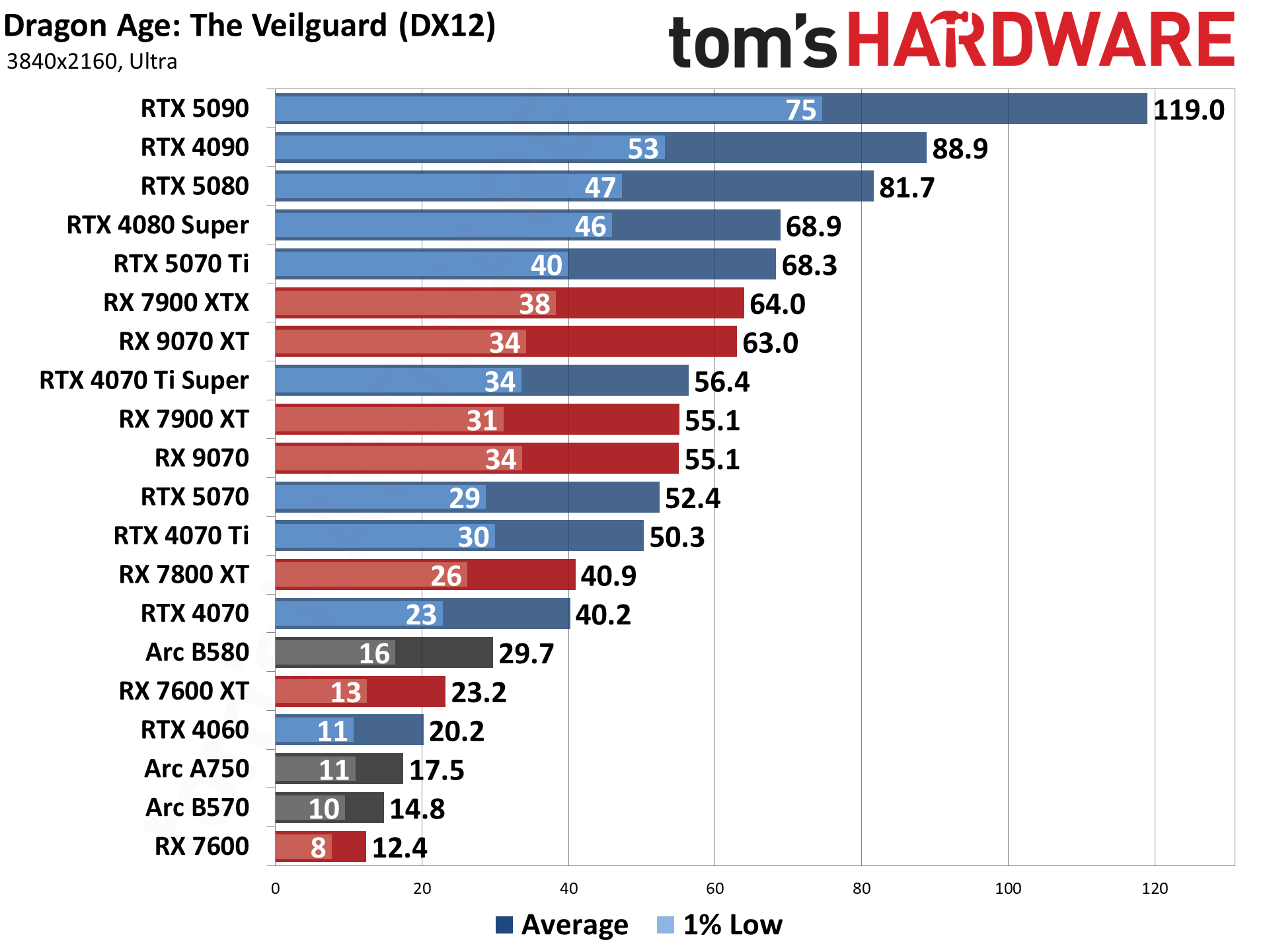
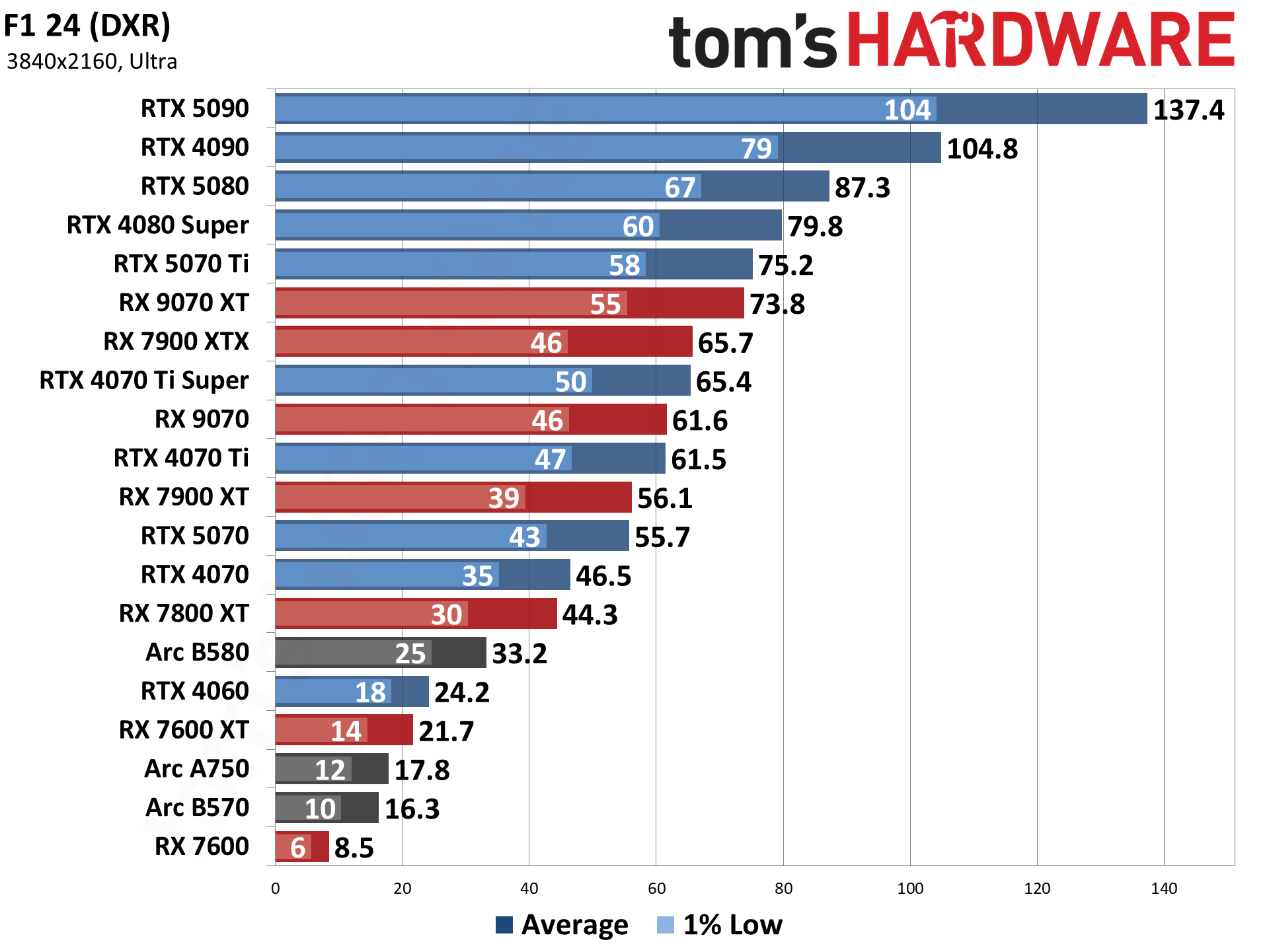
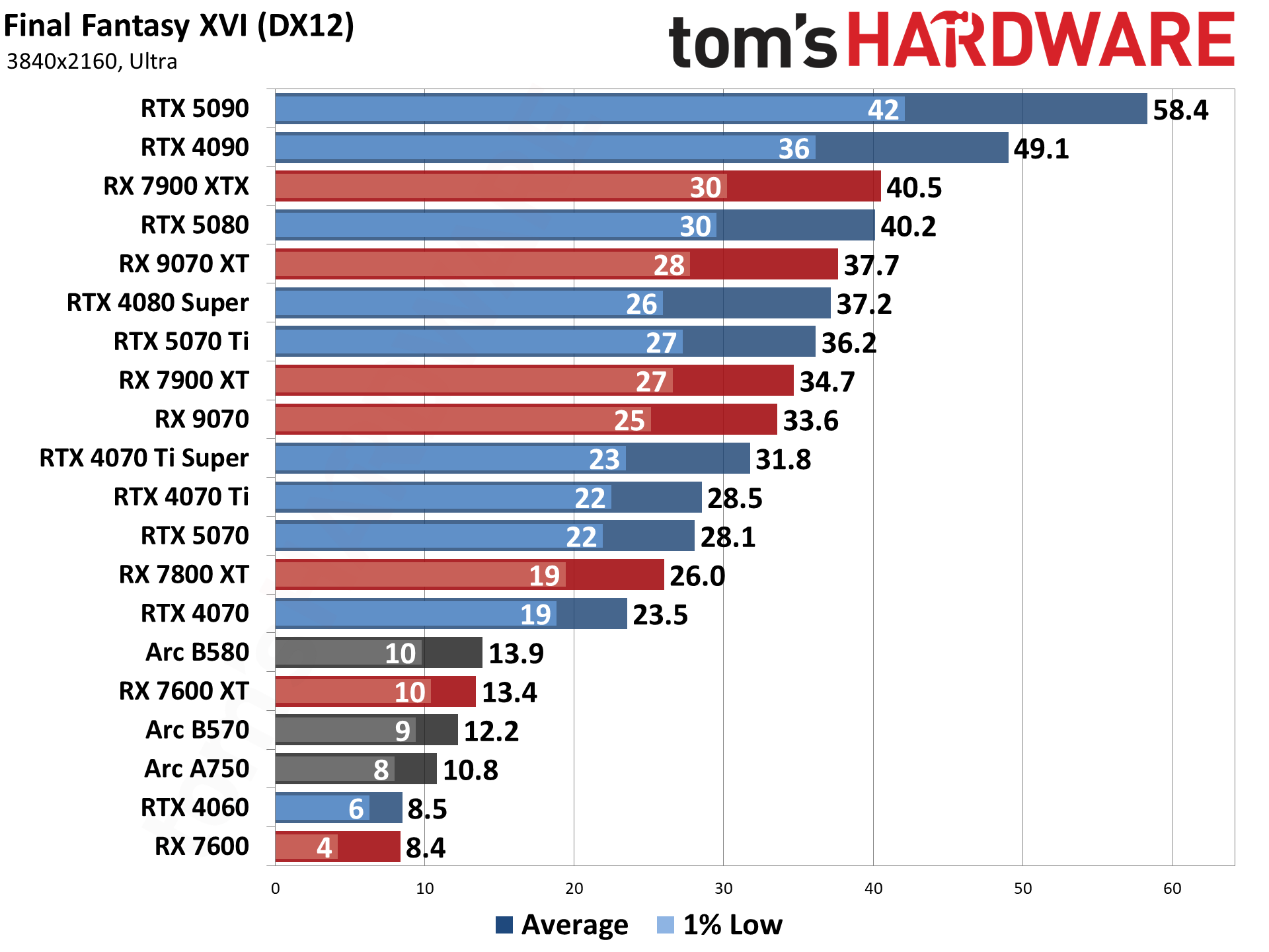

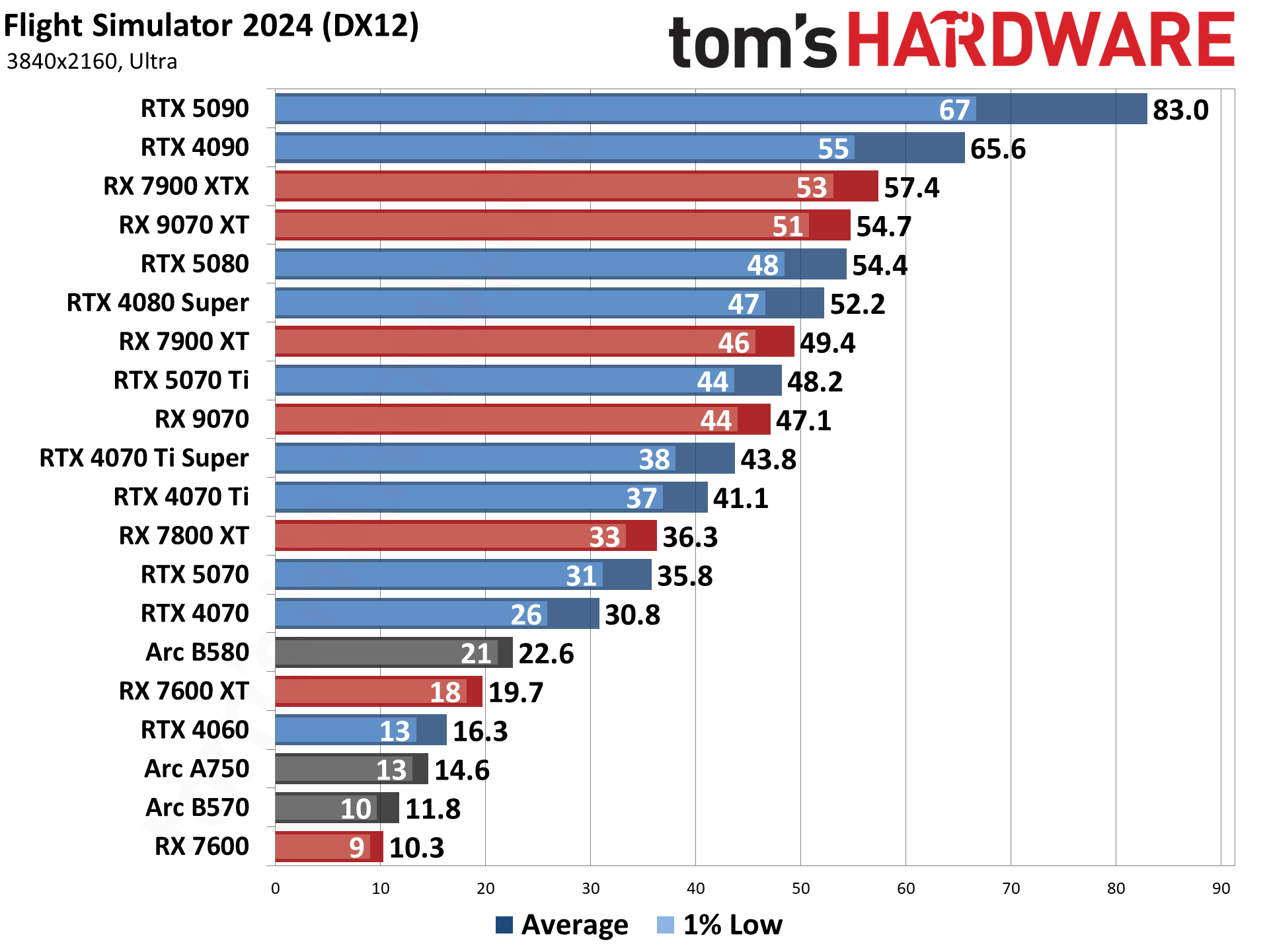
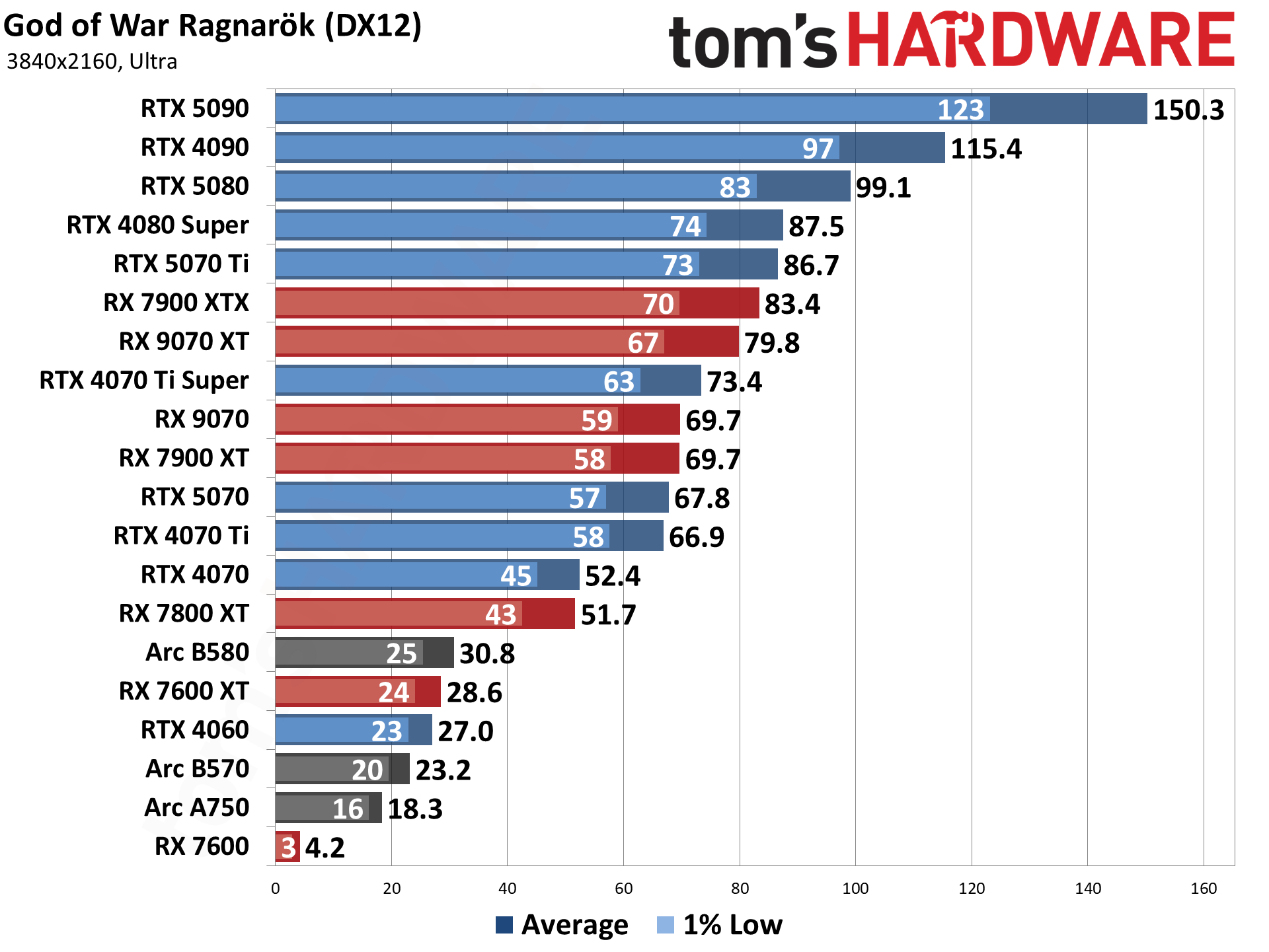
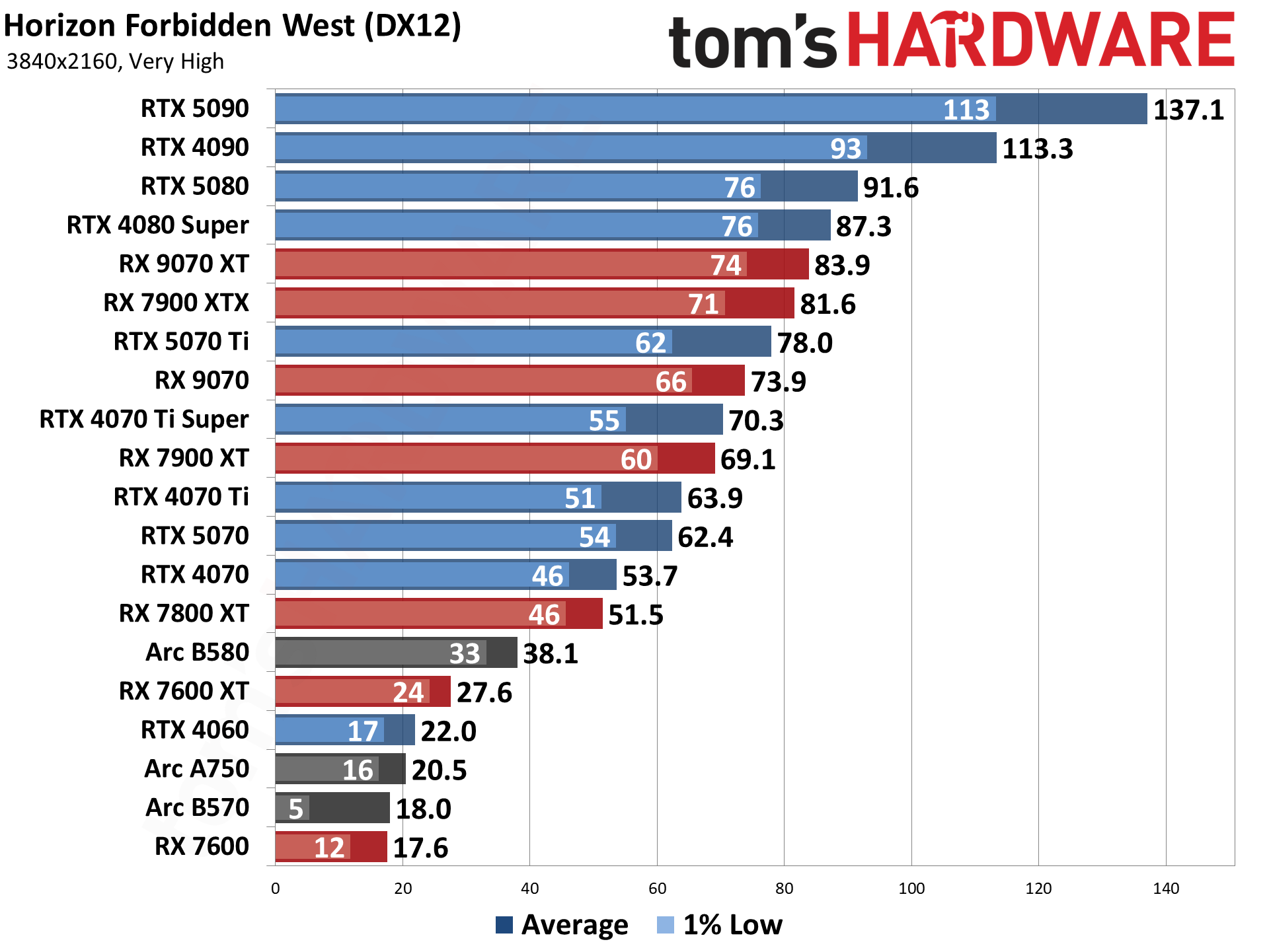
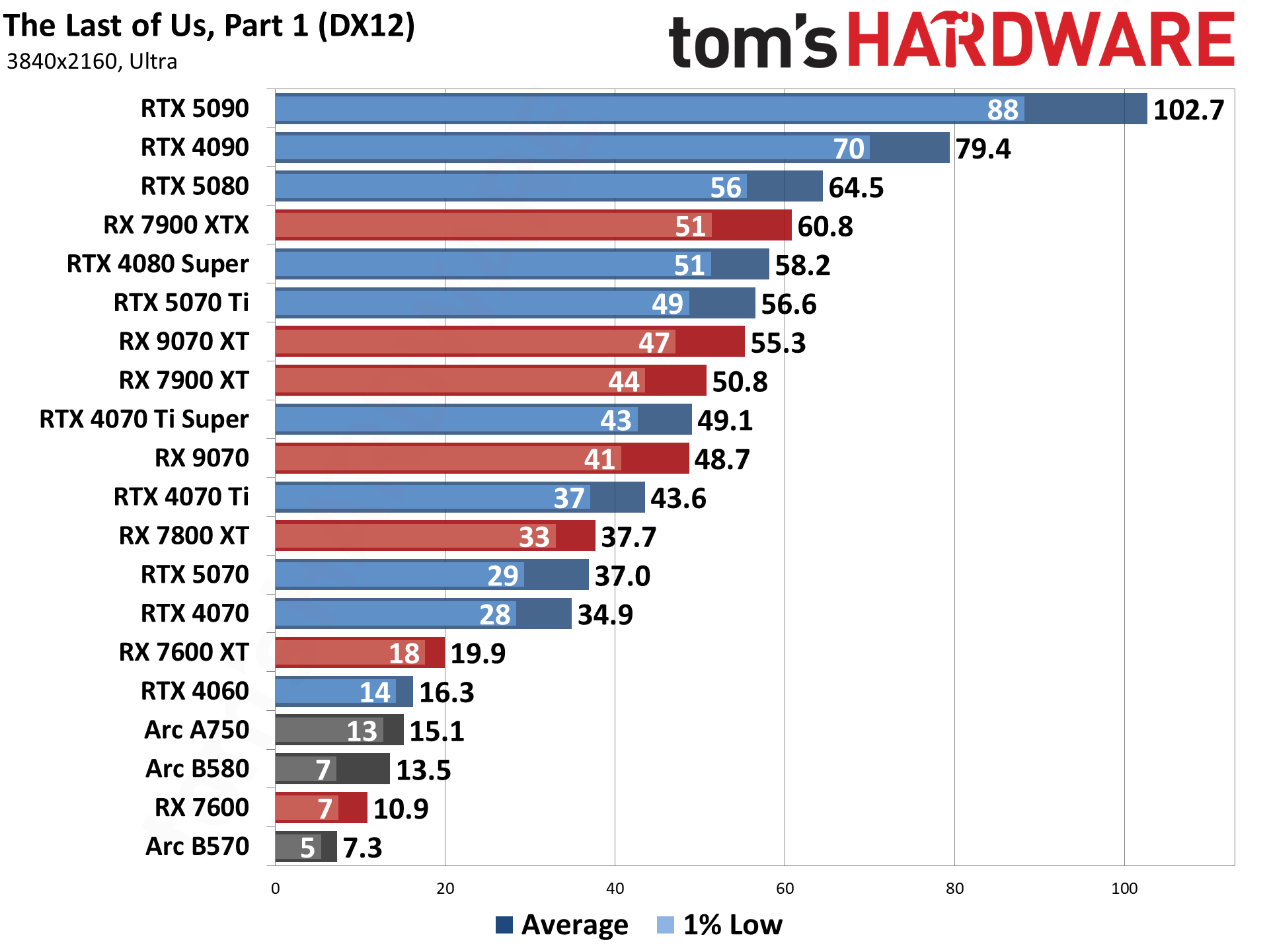
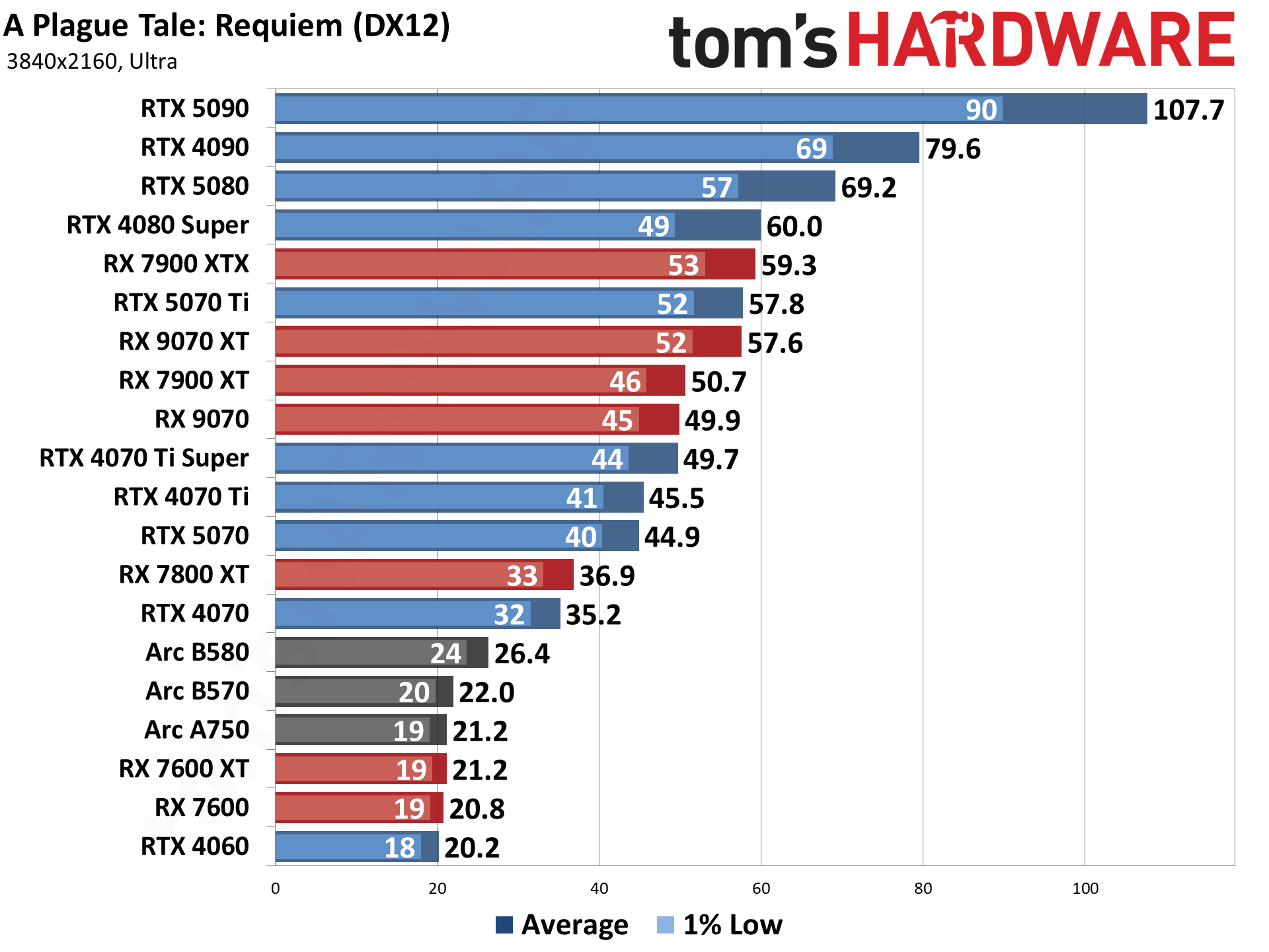
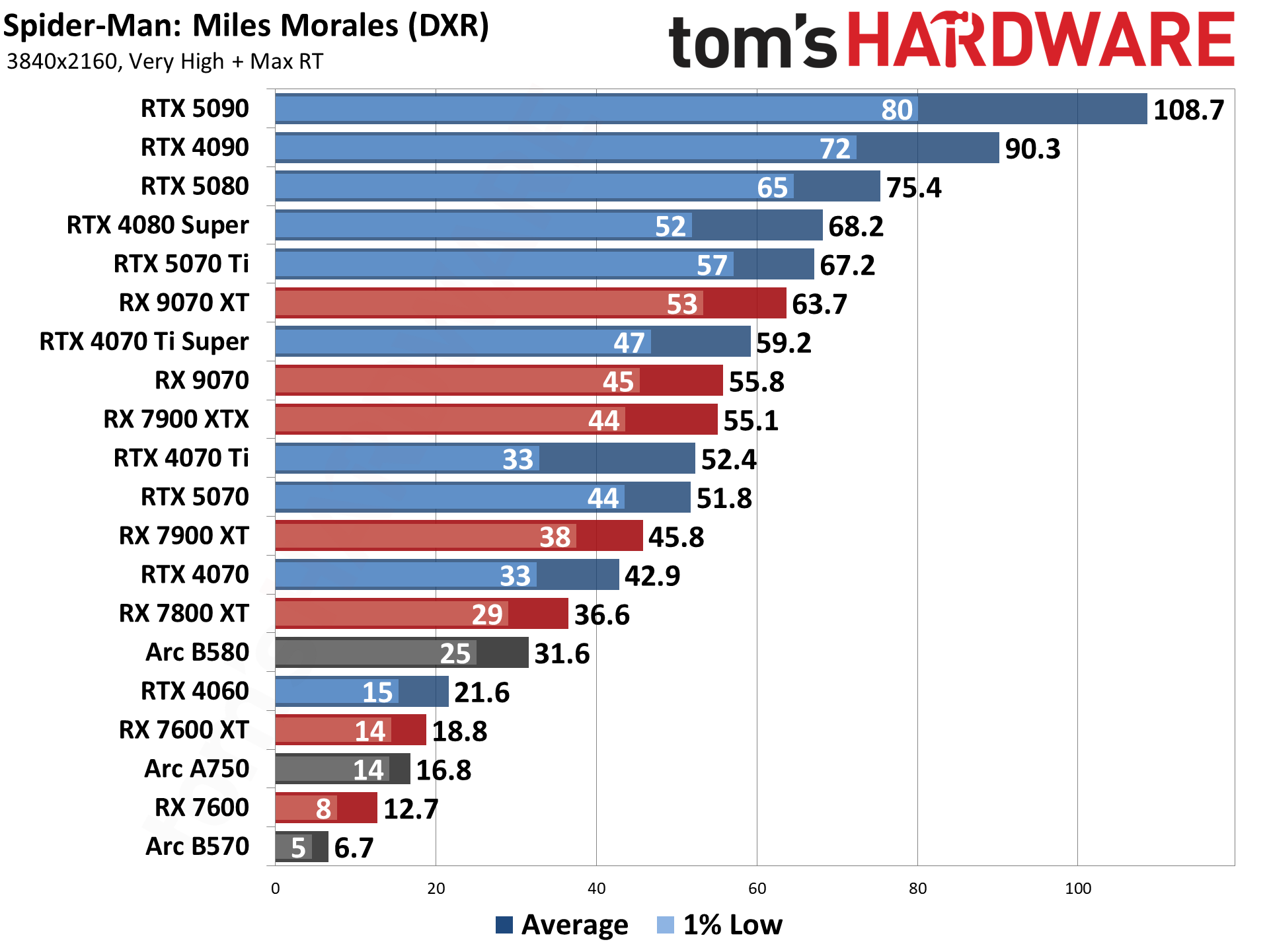
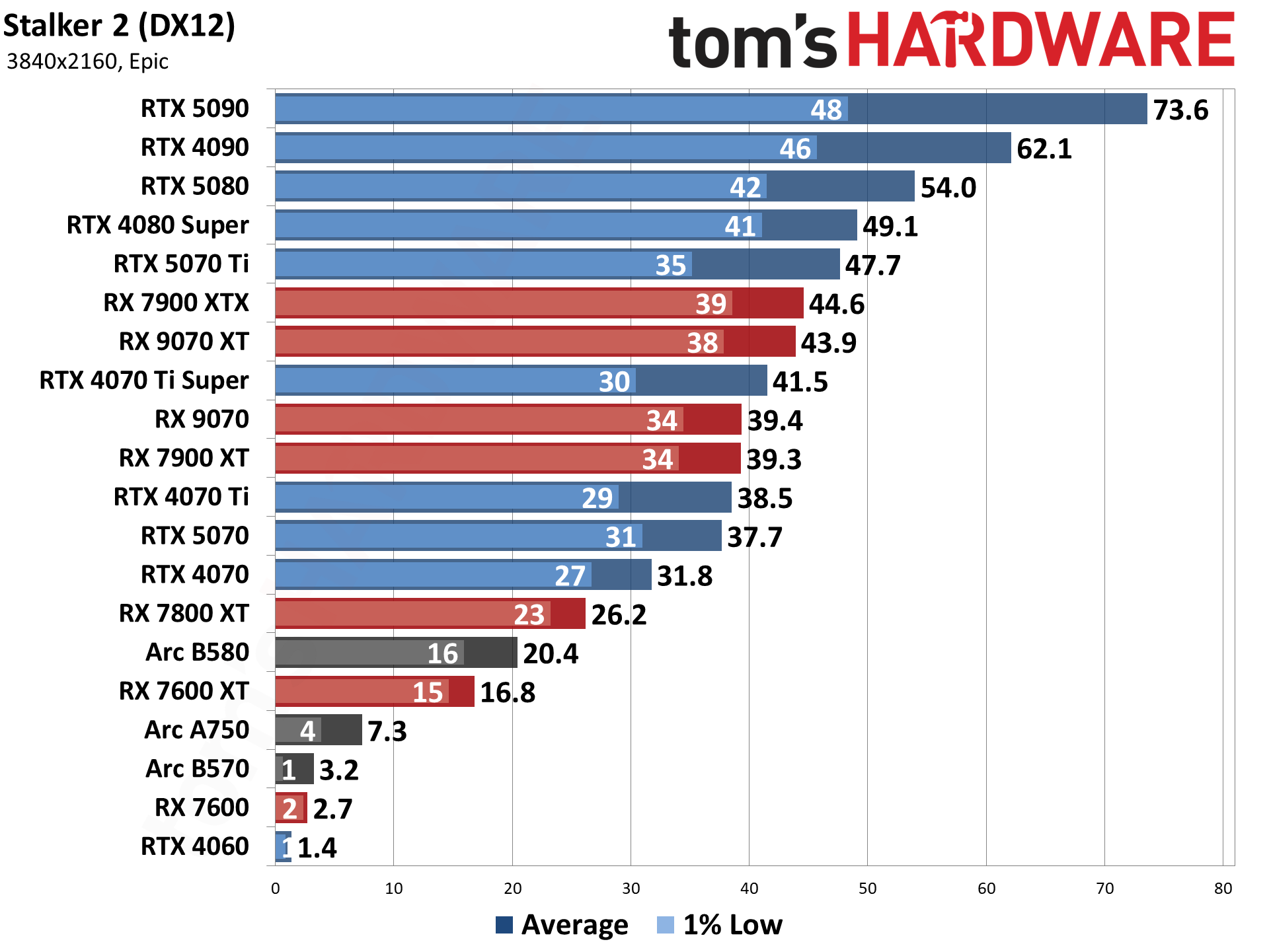
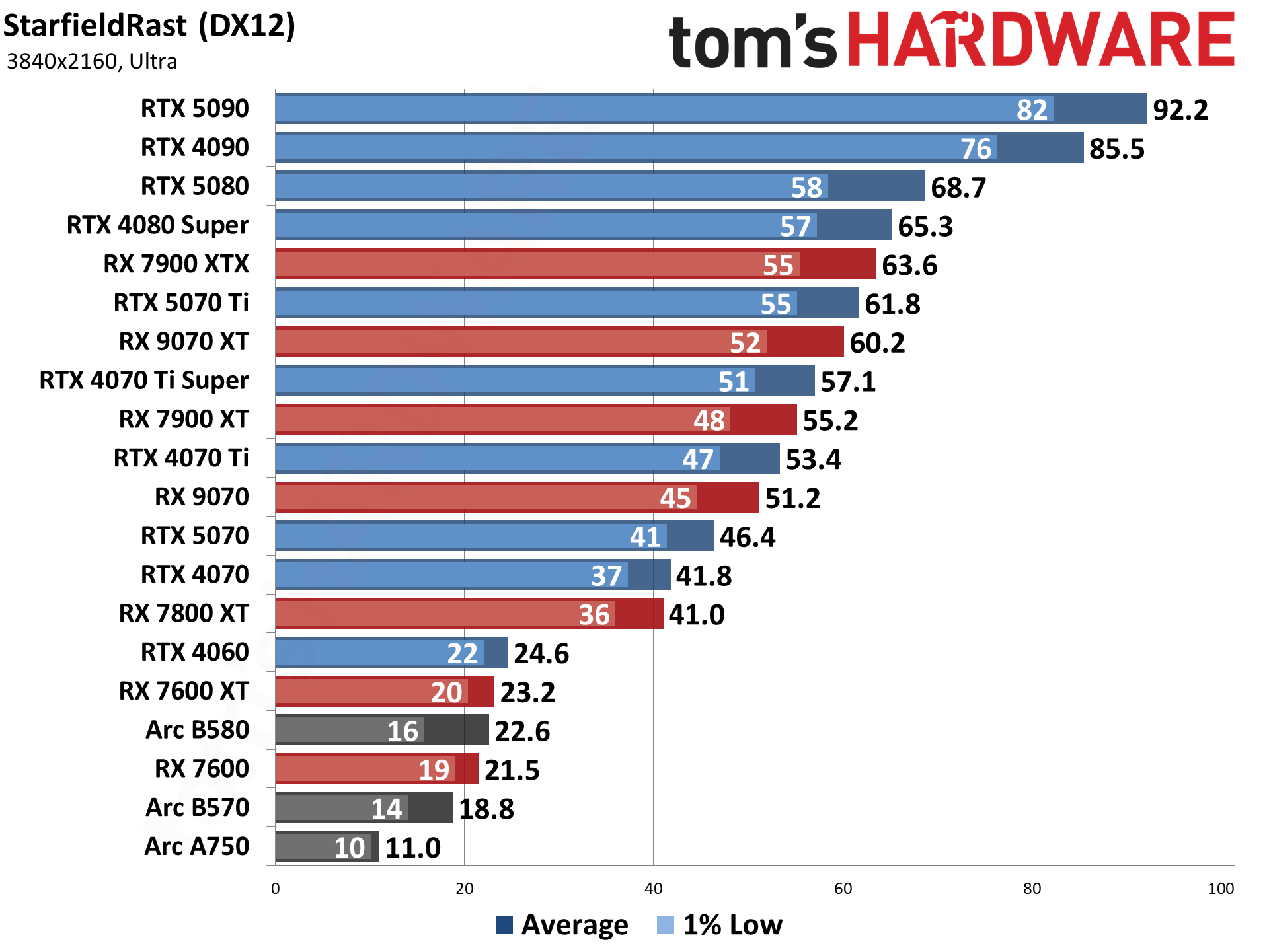
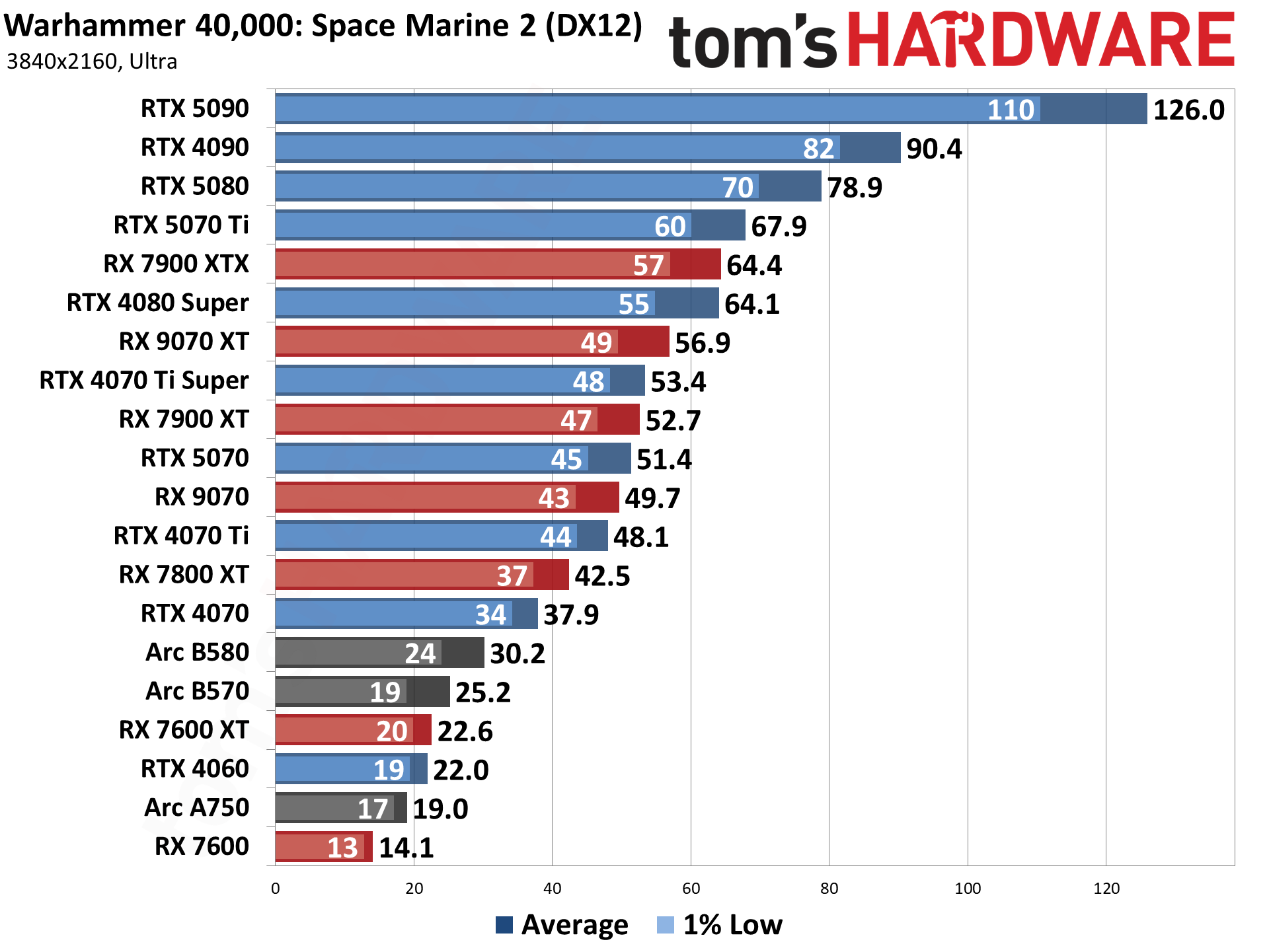
Best Graphics Cards — Power, Clocks, and Temperatures
Most of our discussion has focused on performance, but for those interested in power and other aspects of the GPUs, here are the appropriate charts. We'll run these from highest to lowest settings, as 4K ultra tends to be the most strenuous workload on most of these GPUs.
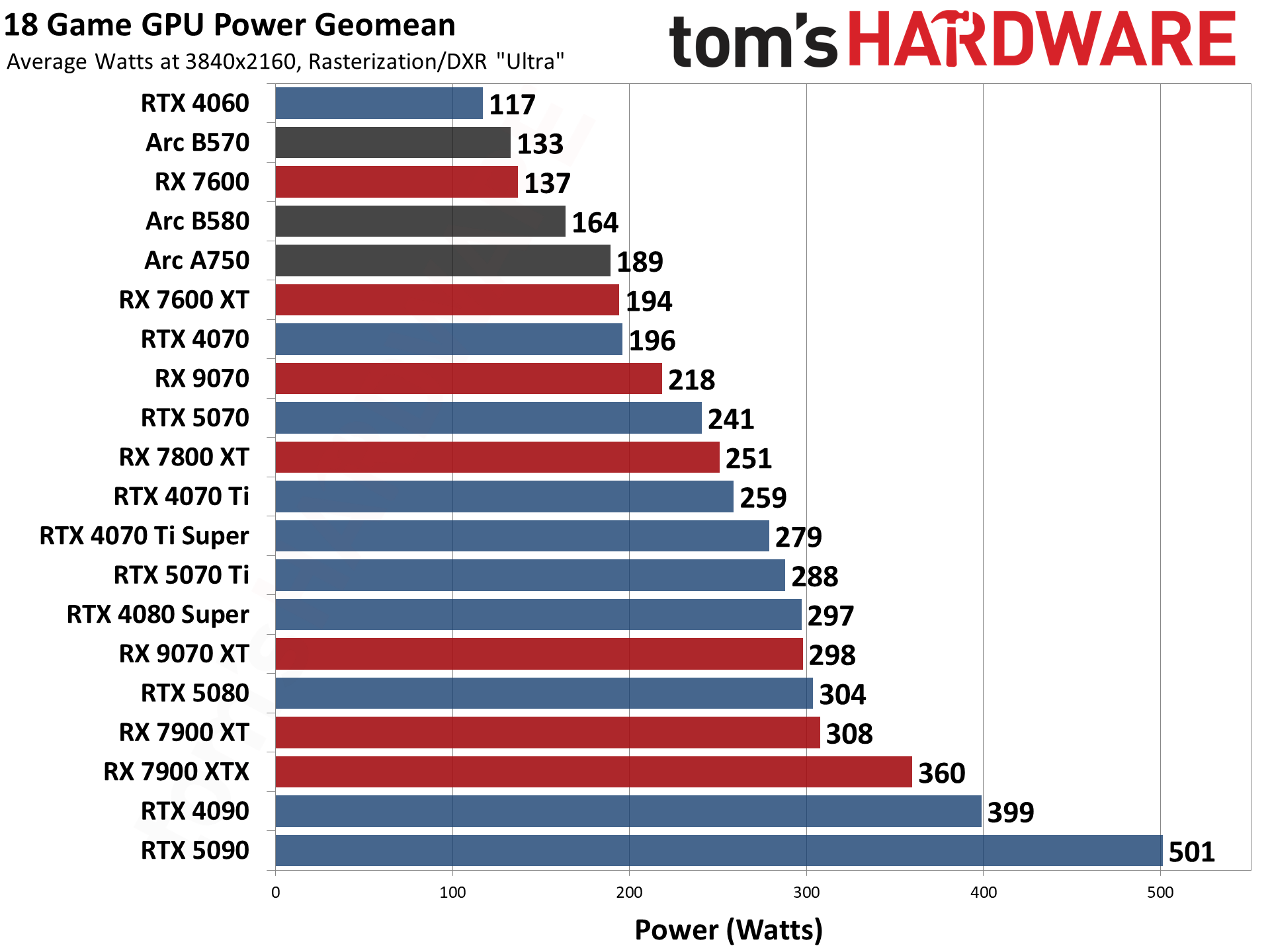
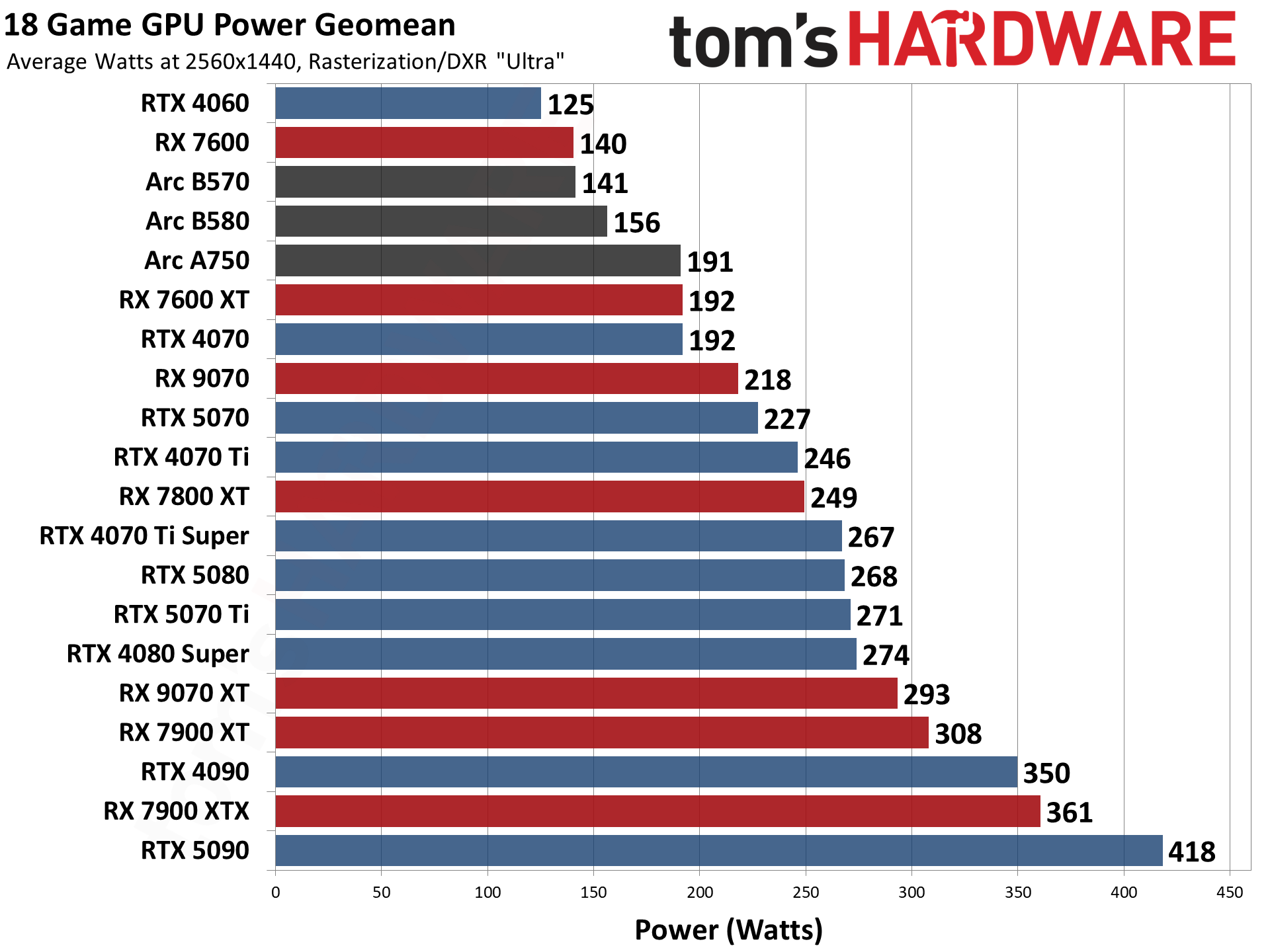

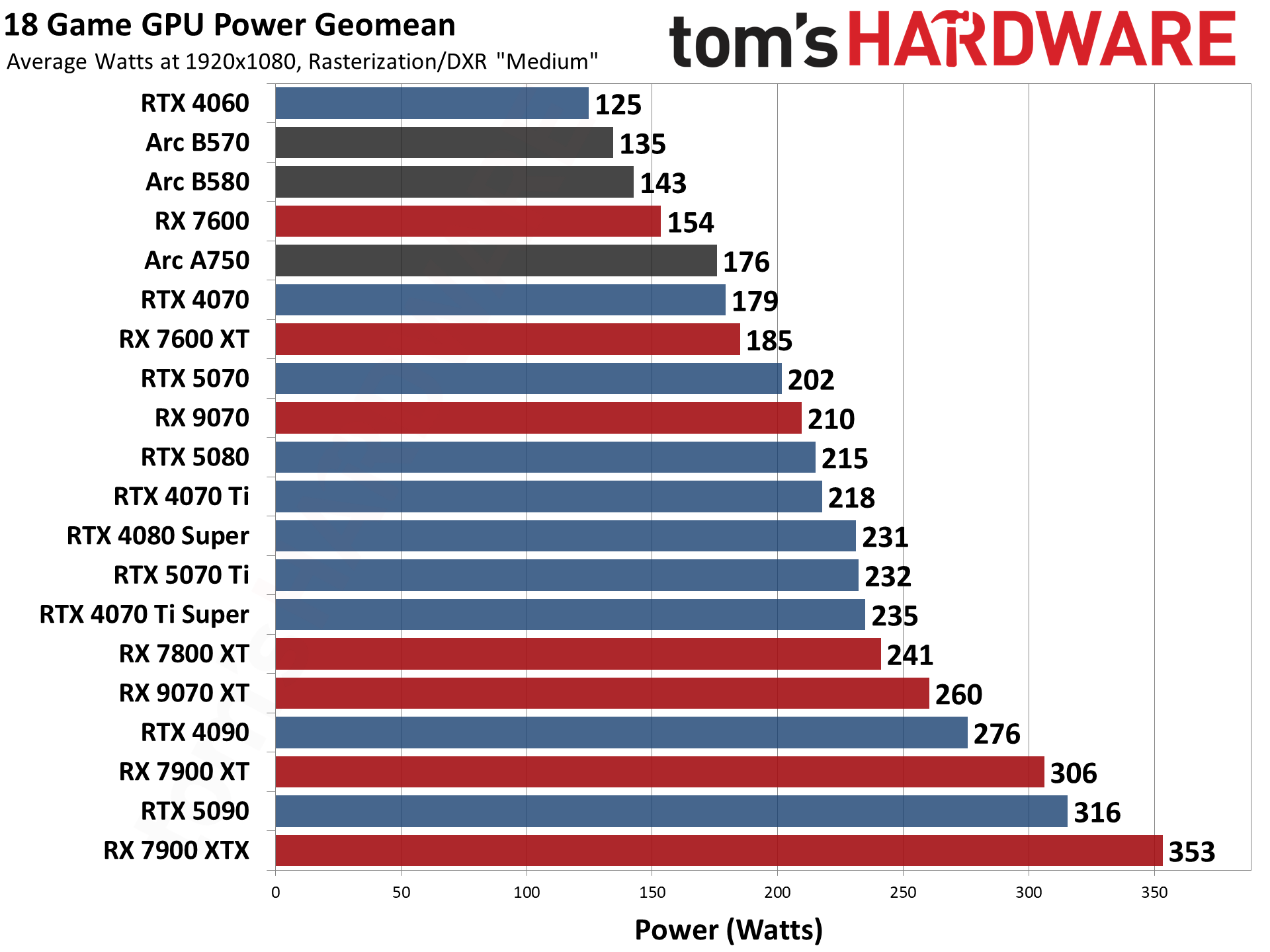
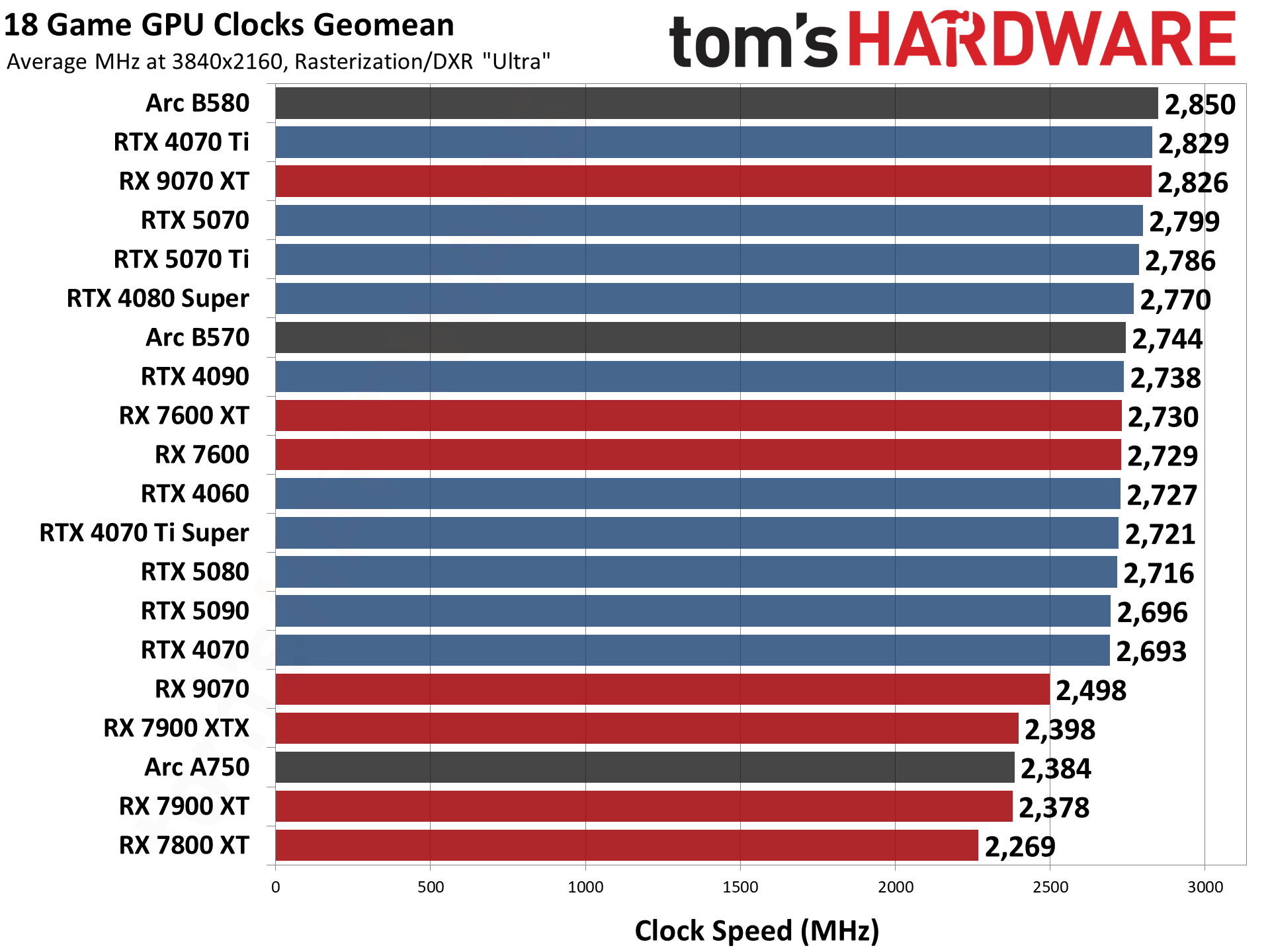
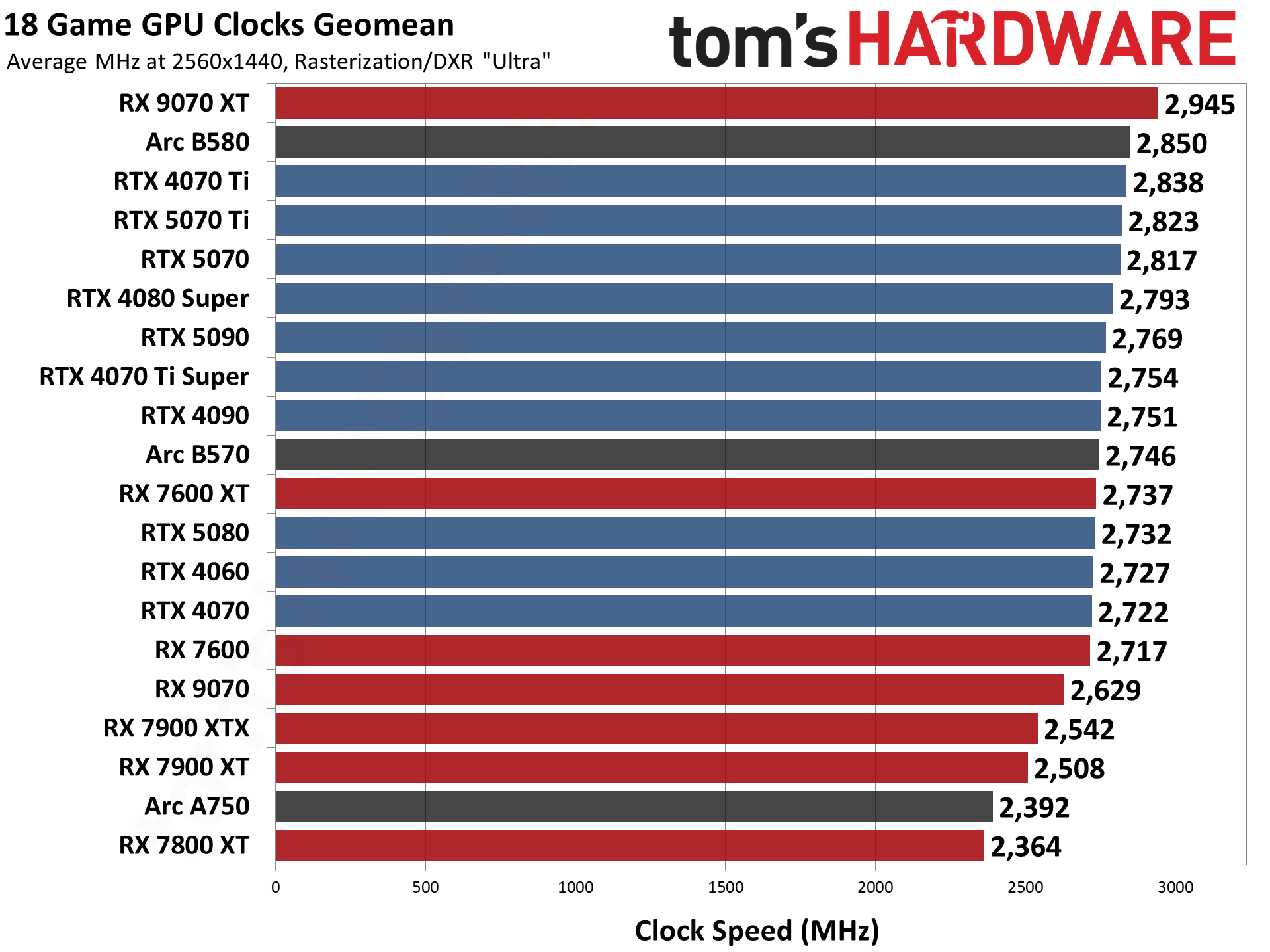
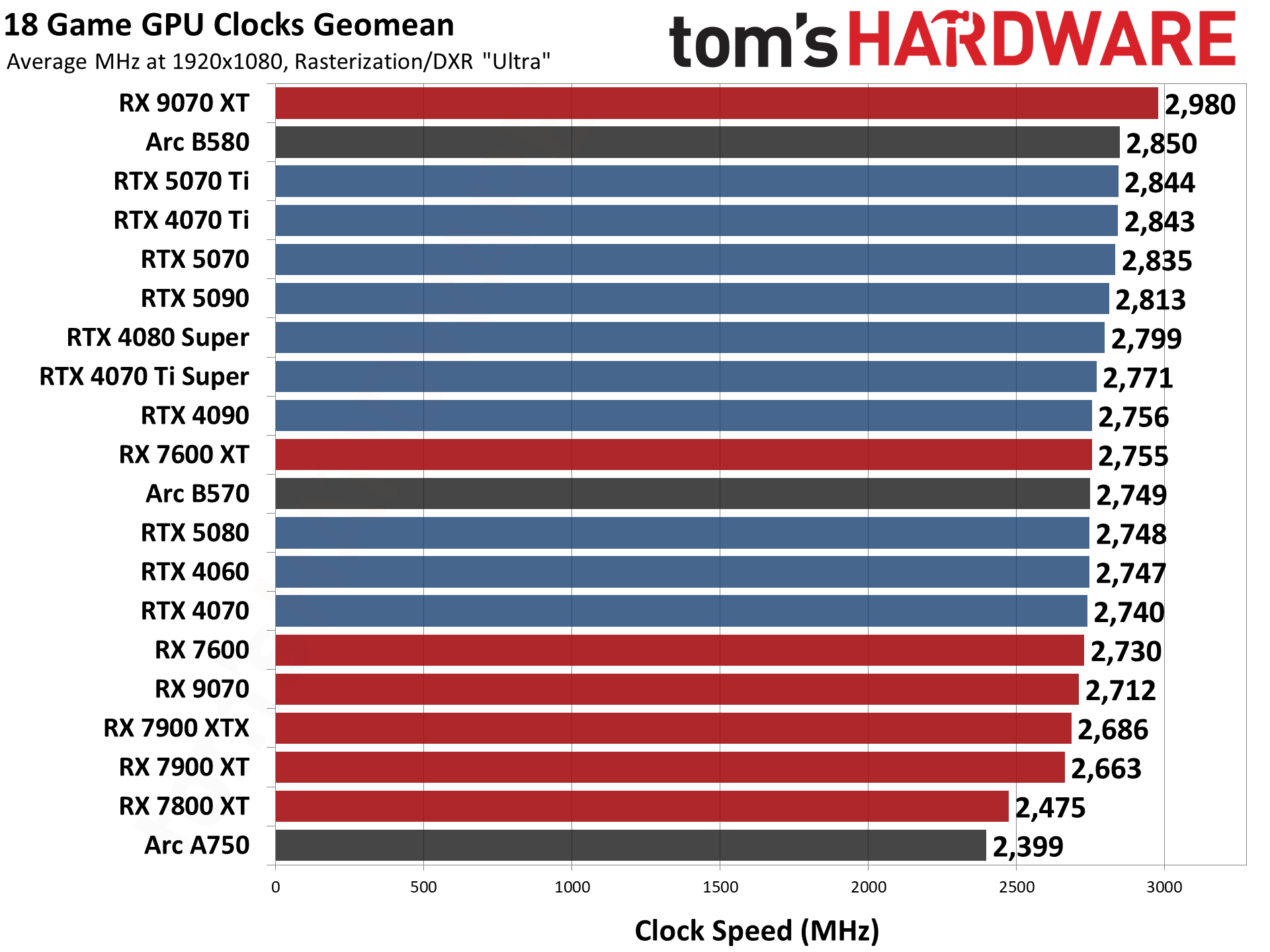
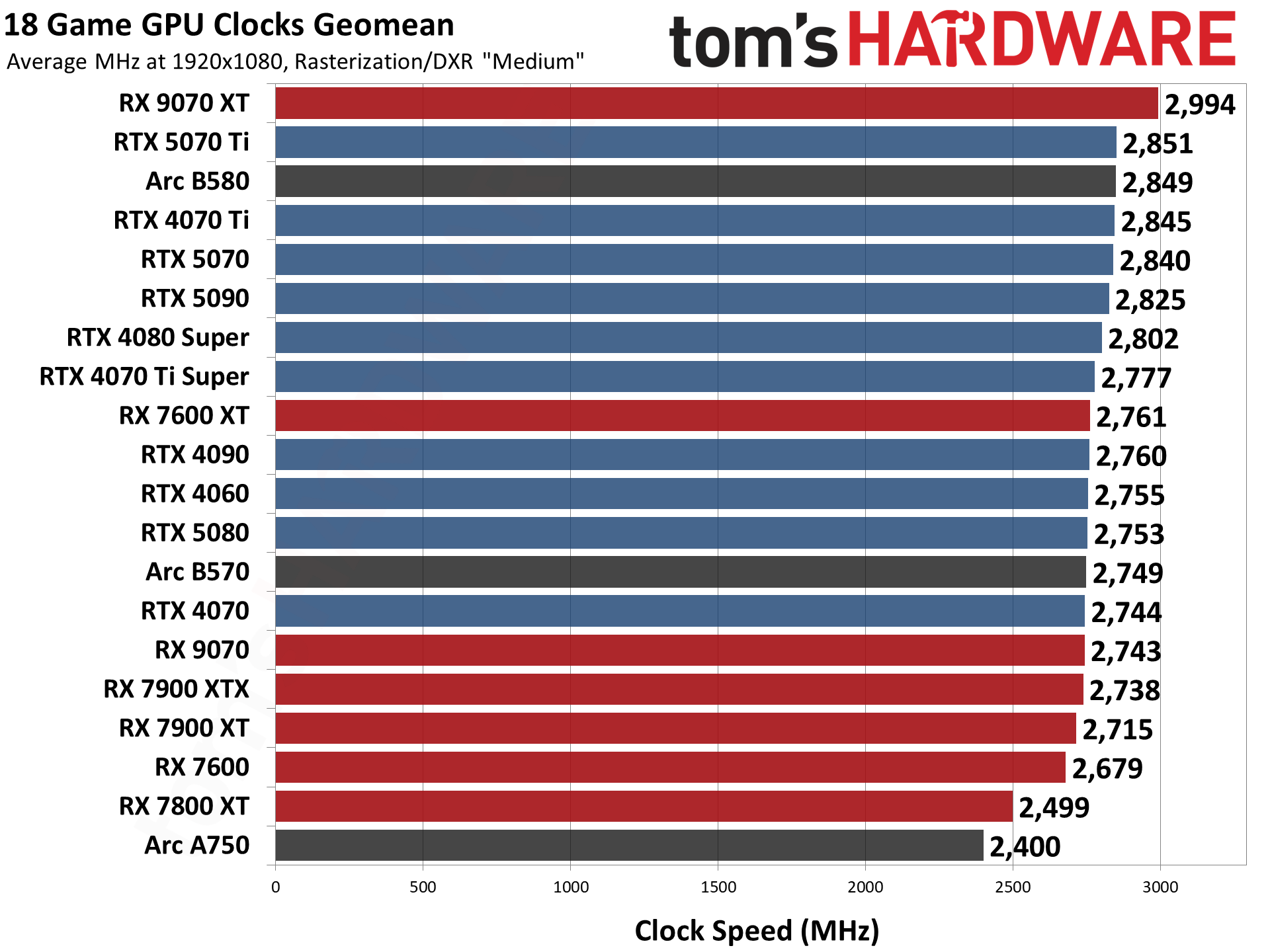

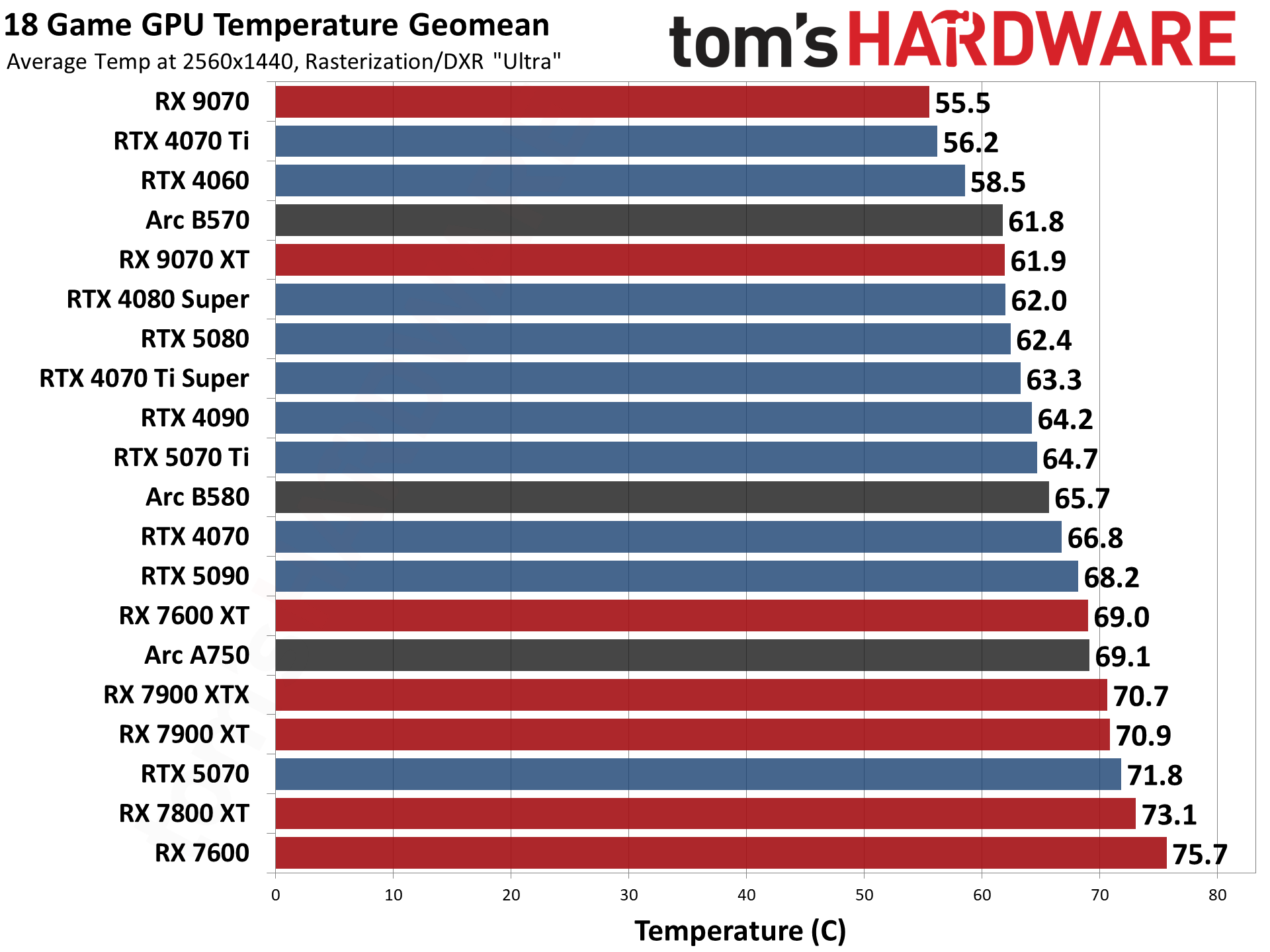
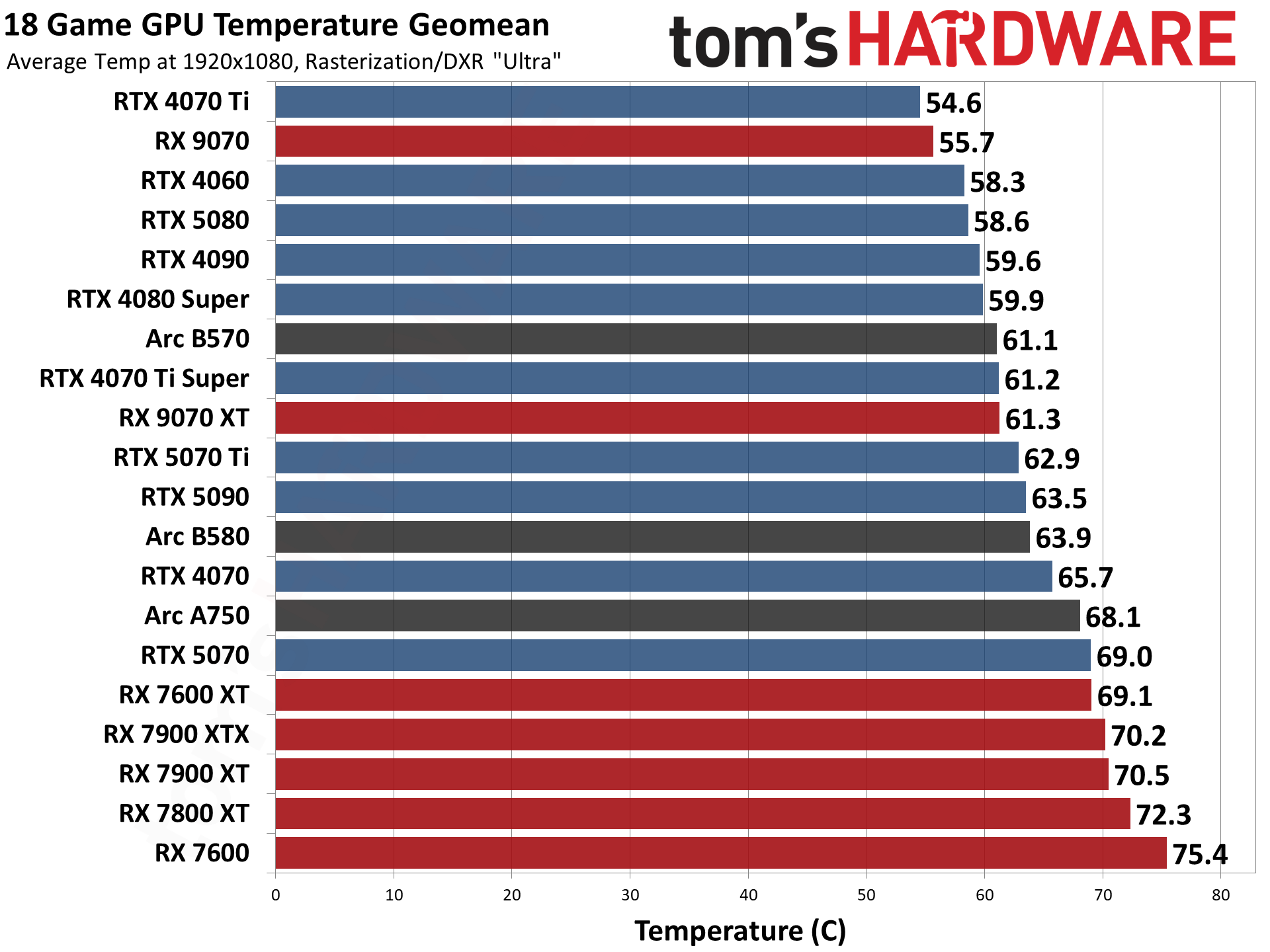
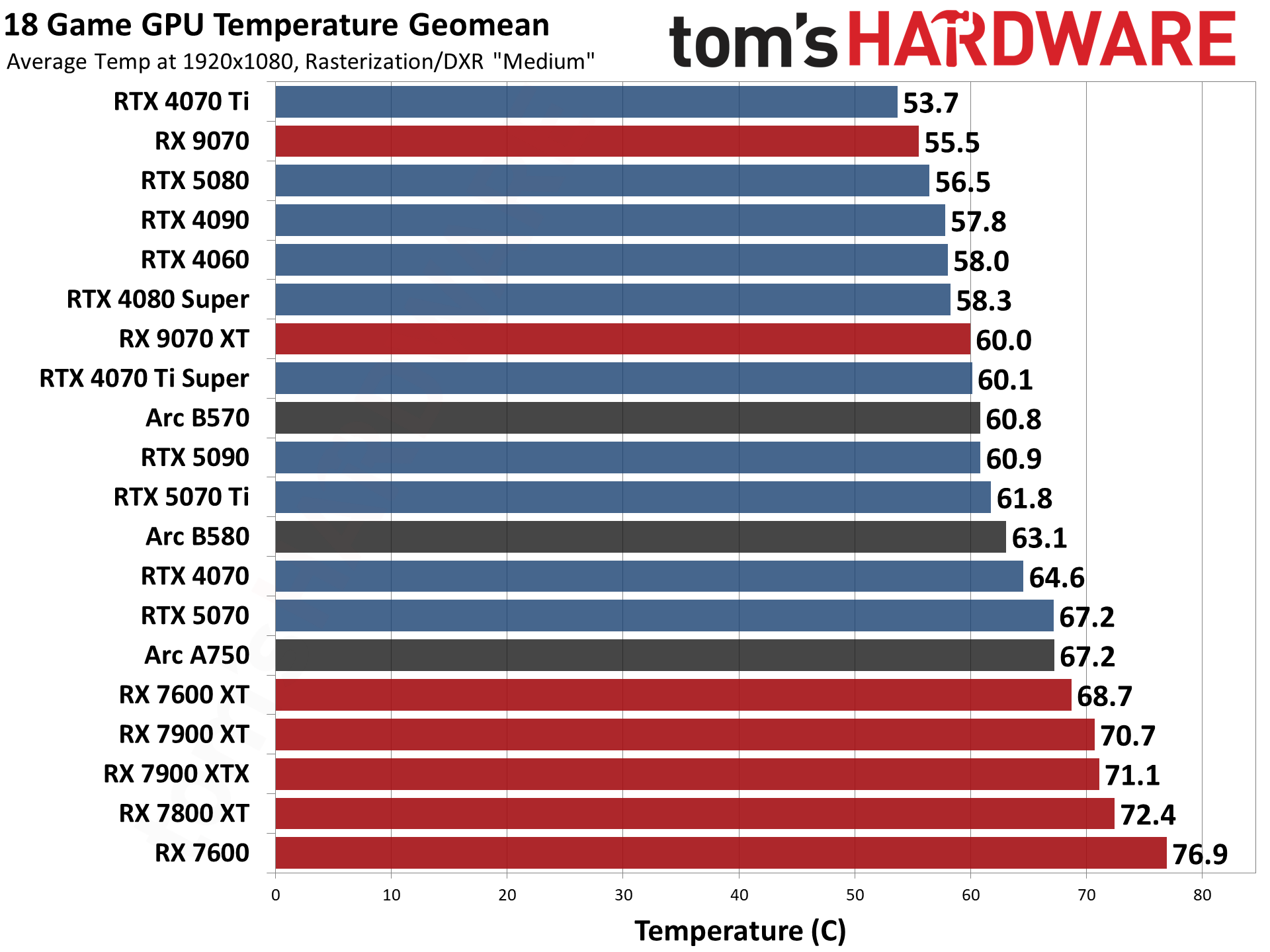
Choosing among the best graphics cards
We've provided eleven choices for the best graphics cards, recognizing that there's plenty of potential overlap. The latest generation GPUs aren't as readily available as we'd like, and the bottom of the new product stacks aren't completely fleshed out, so we've also included a few selections from the prior generation GPUs until such time comes that they're no longer relevant.
We've listed the best graphics cards that are available right now, along with their current online prices, which we track in our GPU prices guide. With so many cards selling above MSRP and a tight supply, it's not the greatest time to upgrade. Hopefully things continue to improve. Our general advice: Don't pay more today for yesterday's hardware, but if it's time for an upgrade, don't get stuck playing the waiting game — there's always something new coming down the pipeline.
If your main goal is gaming, you can't forget about the CPU. Getting the best possible gaming GPU won't help you much if your CPU is underpowered and/or out of date. So be sure to check out the Best CPUs for Gaming page, as well as our CPU Benchmark hierarchy to make sure you have the right CPU for the level of gaming you're looking to achieve.
Our current recommendations reflect the changing GPU market, factoring in all of the above details. The GPUs are ordered using subjective rankings, taking into account performance, price, features, and efficiency, so slower cards may end up higher on our list.
Additional Shopping Tips
When buying a graphics card, consider the following:
• Resolution: The more pixels you're pushing, the more performance you need. You don't need a top-of-the-line GPU to game at 1080p.
• PSU: Make sure that your power supply has enough juice and the right 6-, 8- and/or 16-pin connector(s). For example, Nvidia recommends a 550-watt PSU for the RTX 3060, and you'll need at least an 8-pin connector and possibly a 6-pin PEG connector as well. Newer RTX 40-series GPUs use 16-pin connectors, though all of them also include the necessary 8-pin to 16-pin adapters.
• Video Memory: A 4GB card is the absolute minimum right now, 6GB models are better, and 8GB or more is strongly recommended. A few games can now use 12GB of VRAM, though they're still the exception rather than the rule.
• FreeSync or G-Sync? Either variable refresh rate technology will synchronize your GPU's frame rate with your screen's refresh rate. Nvidia supports G-Sync and G-Sync Compatible displays (for recommendations, see our Best Gaming Monitors list), while AMD's FreeSync tech works with Radeon cards.
• Ray Tracing and Upscaling: The latest graphics cards support ray tracing, which can be used to enhance the visuals. DLSS provides intelligent upscaling and anti-aliasing to boost performance with similar image quality, but it's only on Nvidia RTX cards. AMD's FSR works on virtually any GPU and also provides upscaling and enhancement, but on a different subset of games. New to the party are DLSS 3 with Frame Generation and FSR 3 Frame Generation, along with Intel XeSS, with yet another different subset of supported games — DLSS 3 also provides DLSS 2 support for non 40-series RTX GPUs.
Finding Discounts on the Best Graphics Cards
With the GPU shortages mostly over, you might find some particularly tasty deals on occasion. Check out the latest Newegg promo codes, Best Buy promo codes and Micro Center coupon codes.
Want to comment on our best graphics picks for gaming? Let us know what you think in the Tom's Hardware Forums.
Get Tom's Hardware's best news and in-depth reviews, straight to your inbox.
Jarred Walton is a senior editor at Tom's Hardware focusing on everything GPU. He has been working as a tech journalist since 2004, writing for AnandTech, Maximum PC, and PC Gamer. From the first S3 Virge '3D decelerators' to today's GPUs, Jarred keeps up with all the latest graphics trends and is the one to ask about game performance.
